Black african slave trade Stock Photos and Images
(1,582)See black african slave trade stock video clipsQuick filters:
Black african slave trade Stock Photos and Images
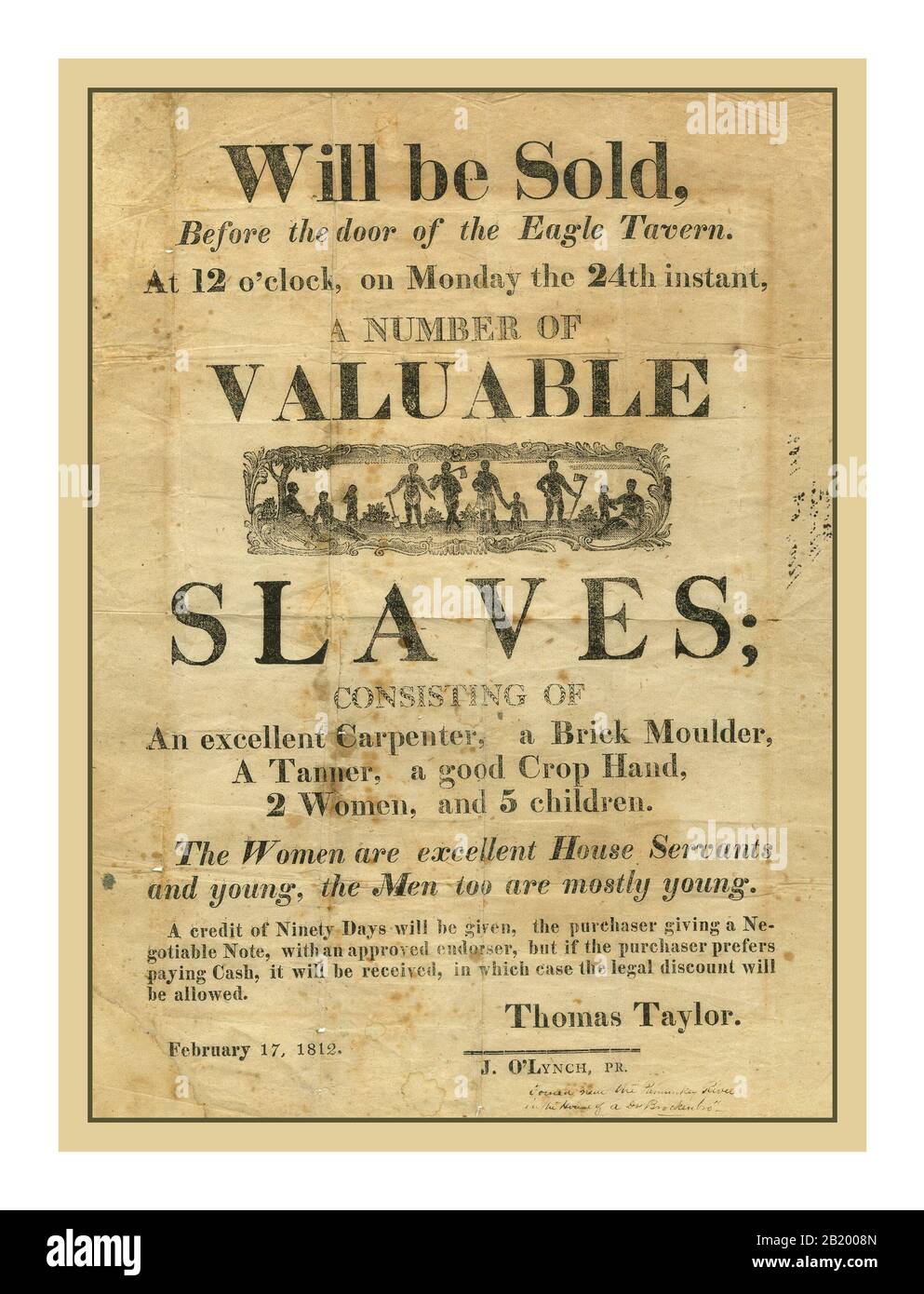 SLAVE SLAVES AUCTION VINTAGE POSTER 'VALUABLE SLAVES WILL BE SOLD' VINTAGE 1800's ADVERTISEMENT CARD POSTER FOR THE SALE/AUCTION OF ELEVEN SLAVES, FEBRUARY 17, 1812 Eagle Tavern Richmond Virginia USA slave-trading activity in Richmond, with enslaved African Americans working as labourers or house servants. Vintage Slavery and Anti-Slavery Public Notices Auction for A Valuable Number of Slaves Including Women and Children, 1812 Stock Photohttps://www.alamy.com/image-license-details/?v=1https://www.alamy.com/slave-slaves-auction-vintage-poster-valuable-slaves-will-be-sold-vintage-1800s-advertisement-card-poster-for-the-saleauction-of-eleven-slaves-february-17-1812-eagle-tavern-richmond-virginia-usa-slave-trading-activity-in-richmond-with-enslaved-african-americans-working-as-labourers-or-house-servants-vintage-slavery-and-anti-slavery-public-notices-auction-for-a-valuable-number-of-slaves-including-women-and-children-1812-image345436917.html
SLAVE SLAVES AUCTION VINTAGE POSTER 'VALUABLE SLAVES WILL BE SOLD' VINTAGE 1800's ADVERTISEMENT CARD POSTER FOR THE SALE/AUCTION OF ELEVEN SLAVES, FEBRUARY 17, 1812 Eagle Tavern Richmond Virginia USA slave-trading activity in Richmond, with enslaved African Americans working as labourers or house servants. Vintage Slavery and Anti-Slavery Public Notices Auction for A Valuable Number of Slaves Including Women and Children, 1812 Stock Photohttps://www.alamy.com/image-license-details/?v=1https://www.alamy.com/slave-slaves-auction-vintage-poster-valuable-slaves-will-be-sold-vintage-1800s-advertisement-card-poster-for-the-saleauction-of-eleven-slaves-february-17-1812-eagle-tavern-richmond-virginia-usa-slave-trading-activity-in-richmond-with-enslaved-african-americans-working-as-labourers-or-house-servants-vintage-slavery-and-anti-slavery-public-notices-auction-for-a-valuable-number-of-slaves-including-women-and-children-1812-image345436917.htmlRM2B2008N–SLAVE SLAVES AUCTION VINTAGE POSTER 'VALUABLE SLAVES WILL BE SOLD' VINTAGE 1800's ADVERTISEMENT CARD POSTER FOR THE SALE/AUCTION OF ELEVEN SLAVES, FEBRUARY 17, 1812 Eagle Tavern Richmond Virginia USA slave-trading activity in Richmond, with enslaved African Americans working as labourers or house servants. Vintage Slavery and Anti-Slavery Public Notices Auction for A Valuable Number of Slaves Including Women and Children, 1812
 African slave caravan marched to the coast where they will be shipped to plantations 1800s. Hand-colored woodcut Stock Photohttps://www.alamy.com/image-license-details/?v=1https://www.alamy.com/african-slave-caravan-marched-to-the-coast-where-they-will-be-shipped-image6907089.html
African slave caravan marched to the coast where they will be shipped to plantations 1800s. Hand-colored woodcut Stock Photohttps://www.alamy.com/image-license-details/?v=1https://www.alamy.com/african-slave-caravan-marched-to-the-coast-where-they-will-be-shipped-image6907089.htmlRMA8FDH2–African slave caravan marched to the coast where they will be shipped to plantations 1800s. Hand-colored woodcut
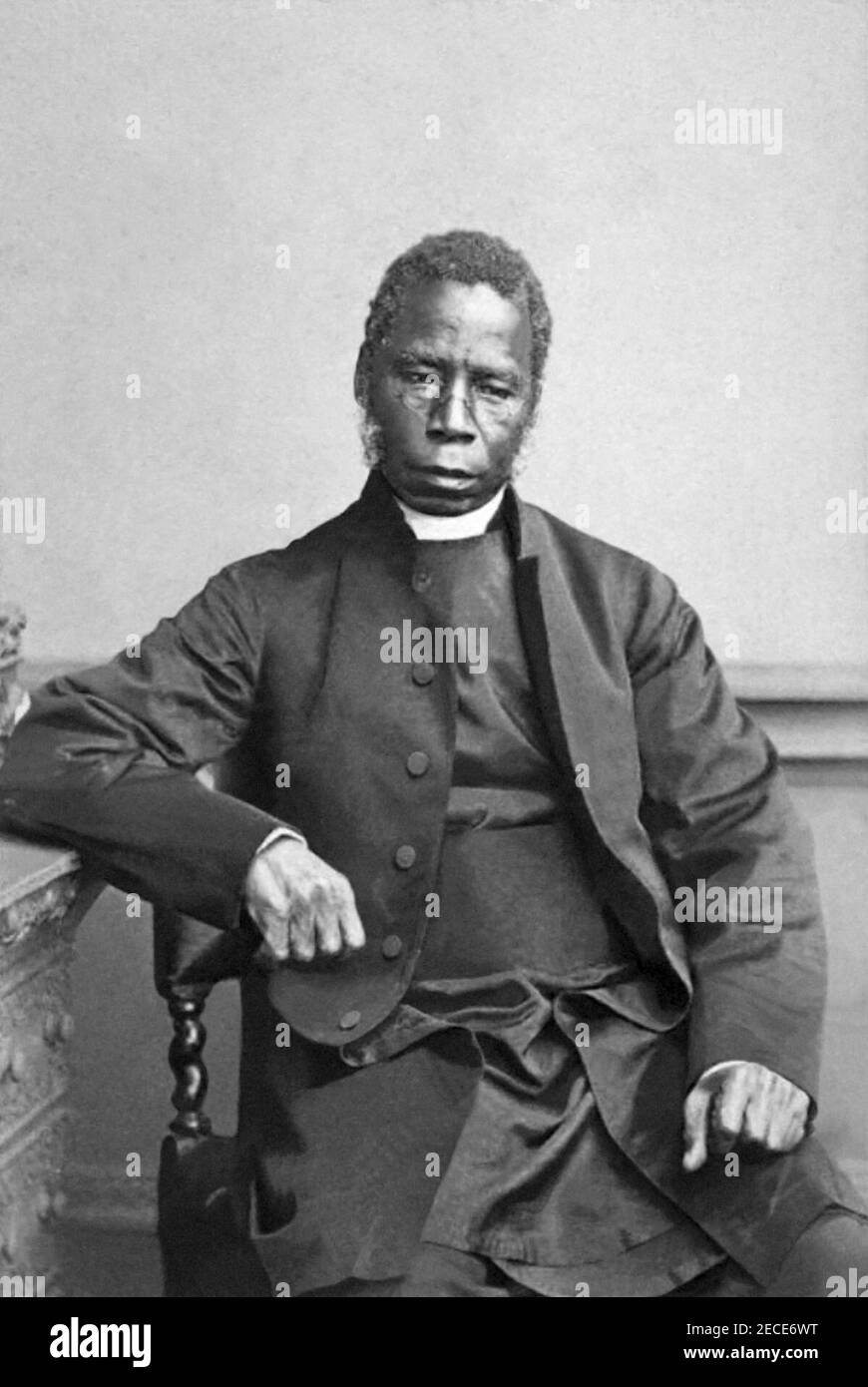 Samuel Ajayi Crowther (c1809–1891), former slave who became the first black Anglican Bishop. Crowther was ordained by the Church Missionary Society and in 1864 was consecrated bishop of the Niger territory in Africa. A linguist, with an honorary doctorate of divinity from Oxford University, Crowther worked on Bible translation into more than one African language. Stock Photohttps://www.alamy.com/image-license-details/?v=1https://www.alamy.com/samuel-ajayi-crowther-c18091891-former-slave-who-became-the-first-black-anglican-bishop-crowther-was-ordained-by-the-church-missionary-society-and-in-1864-was-consecrated-bishop-of-the-niger-territory-in-africa-a-linguist-with-an-honorary-doctorate-of-divinity-from-oxford-university-crowther-worked-on-bible-translation-into-more-than-one-african-language-image403527092.html
Samuel Ajayi Crowther (c1809–1891), former slave who became the first black Anglican Bishop. Crowther was ordained by the Church Missionary Society and in 1864 was consecrated bishop of the Niger territory in Africa. A linguist, with an honorary doctorate of divinity from Oxford University, Crowther worked on Bible translation into more than one African language. Stock Photohttps://www.alamy.com/image-license-details/?v=1https://www.alamy.com/samuel-ajayi-crowther-c18091891-former-slave-who-became-the-first-black-anglican-bishop-crowther-was-ordained-by-the-church-missionary-society-and-in-1864-was-consecrated-bishop-of-the-niger-territory-in-africa-a-linguist-with-an-honorary-doctorate-of-divinity-from-oxford-university-crowther-worked-on-bible-translation-into-more-than-one-african-language-image403527092.htmlRM2ECE6WT–Samuel Ajayi Crowther (c1809–1891), former slave who became the first black Anglican Bishop. Crowther was ordained by the Church Missionary Society and in 1864 was consecrated bishop of the Niger territory in Africa. A linguist, with an honorary doctorate of divinity from Oxford University, Crowther worked on Bible translation into more than one African language.
 Slave gang crossing the African dessert. Black and white Illustration Stock Photohttps://www.alamy.com/image-license-details/?v=1https://www.alamy.com/slave-gang-crossing-the-african-dessert-black-and-white-illustration-image482118477.html
Slave gang crossing the African dessert. Black and white Illustration Stock Photohttps://www.alamy.com/image-license-details/?v=1https://www.alamy.com/slave-gang-crossing-the-african-dessert-black-and-white-illustration-image482118477.htmlRM2K0AB11–Slave gang crossing the African dessert. Black and white Illustration
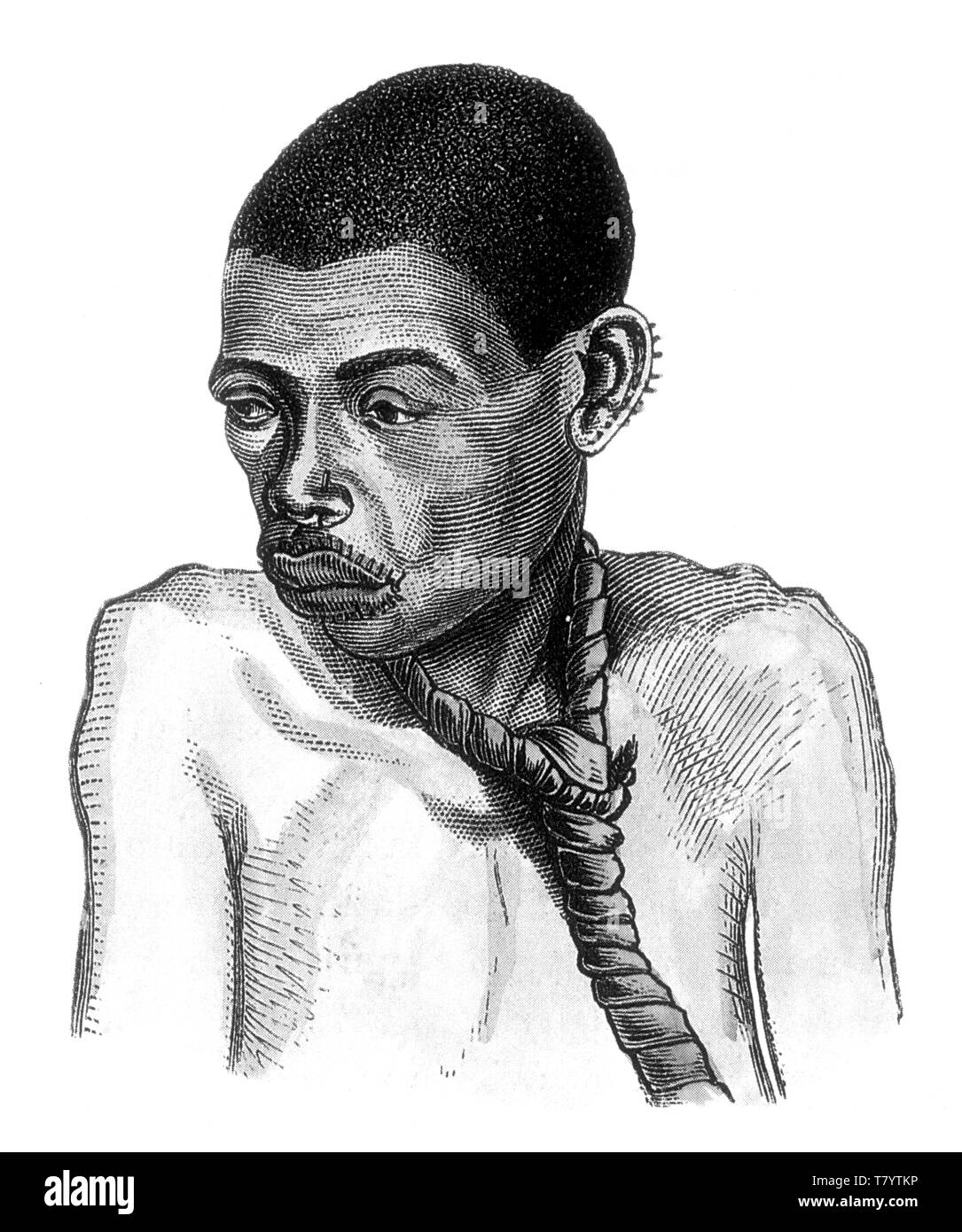 Slavery, African Slave Stock Photohttps://www.alamy.com/image-license-details/?v=1https://www.alamy.com/slavery-african-slave-image245859818.html
Slavery, African Slave Stock Photohttps://www.alamy.com/image-license-details/?v=1https://www.alamy.com/slavery-african-slave-image245859818.htmlRMT7YTKP–Slavery, African Slave
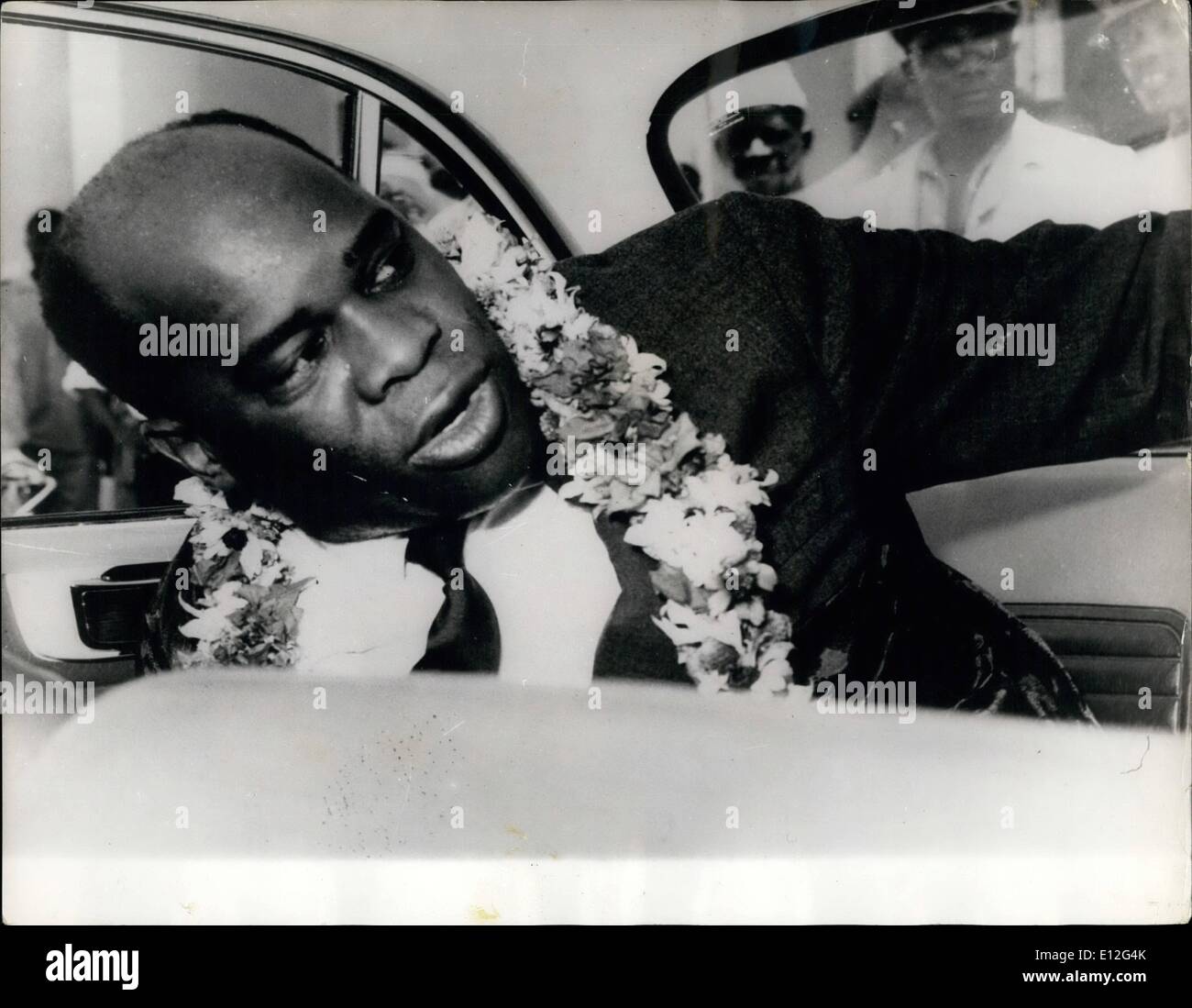 Jan. 09, 2012 - A Guerrilla Army learns its trade.: An old slave town on the African coast is now a camp for hundreds of young men training to overthrow the Portuguess is Mozambique. The grounds of a former British country club on the East African coast have been turned Africa's latest training school for guerilla warfare. The club is at Bagamoyo, 40 miles north of the Tanzania capital of Dar Es Salaam. The trainees are Africans from neighbouring Mozambique, who come to Tanzania to learn ways of wearing down the Portuguese colonial regine in their homeland Stock Photohttps://www.alamy.com/image-license-details/?v=1https://www.alamy.com/jan-09-2012-a-guerrilla-army-learns-its-trade-an-old-slave-town-on-image69512707.html
Jan. 09, 2012 - A Guerrilla Army learns its trade.: An old slave town on the African coast is now a camp for hundreds of young men training to overthrow the Portuguess is Mozambique. The grounds of a former British country club on the East African coast have been turned Africa's latest training school for guerilla warfare. The club is at Bagamoyo, 40 miles north of the Tanzania capital of Dar Es Salaam. The trainees are Africans from neighbouring Mozambique, who come to Tanzania to learn ways of wearing down the Portuguese colonial regine in their homeland Stock Photohttps://www.alamy.com/image-license-details/?v=1https://www.alamy.com/jan-09-2012-a-guerrilla-army-learns-its-trade-an-old-slave-town-on-image69512707.htmlRME12G4K–Jan. 09, 2012 - A Guerrilla Army learns its trade.: An old slave town on the African coast is now a camp for hundreds of young men training to overthrow the Portuguess is Mozambique. The grounds of a former British country club on the East African coast have been turned Africa's latest training school for guerilla warfare. The club is at Bagamoyo, 40 miles north of the Tanzania capital of Dar Es Salaam. The trainees are Africans from neighbouring Mozambique, who come to Tanzania to learn ways of wearing down the Portuguese colonial regine in their homeland
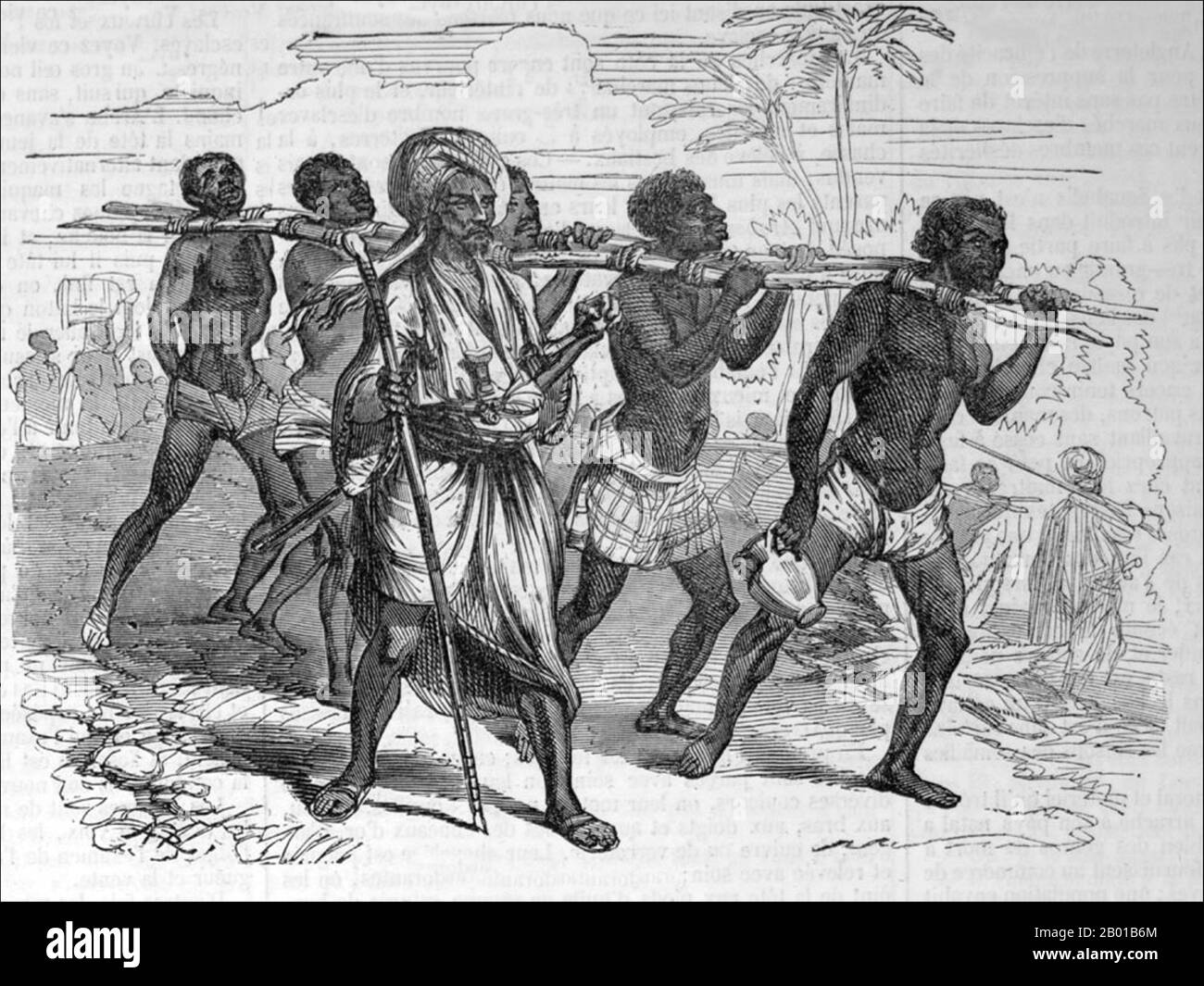 Central Africa: An Arab slaver with a coffle of slaves. Illustration from the newspaper 'L'Illustration', 1849. Black slaves were imported into the Muslim world from Africa by a number of routes northward across the Sahara desert, and by sea into Arabia and the Persian Gulf. Estimates of the number involved vary greatly but it seems that there may easily have been 10 million, perhaps even twice that number. Two-thirds of African slaves were female, as male slaves were considered to be troublesome. Stock Photohttps://www.alamy.com/image-license-details/?v=1https://www.alamy.com/central-africa-an-arab-slaver-with-a-coffle-of-slaves-illustration-from-the-newspaper-lillustration-1849-black-slaves-were-imported-into-the-muslim-world-from-africa-by-a-number-of-routes-northward-across-the-sahara-desert-and-by-sea-into-arabia-and-the-persian-gulf-estimates-of-the-number-involved-vary-greatly-but-it-seems-that-there-may-easily-have-been-10-million-perhaps-even-twice-that-number-two-thirds-of-african-slaves-were-female-as-male-slaves-were-considered-to-be-troublesome-image344238124.html
Central Africa: An Arab slaver with a coffle of slaves. Illustration from the newspaper 'L'Illustration', 1849. Black slaves were imported into the Muslim world from Africa by a number of routes northward across the Sahara desert, and by sea into Arabia and the Persian Gulf. Estimates of the number involved vary greatly but it seems that there may easily have been 10 million, perhaps even twice that number. Two-thirds of African slaves were female, as male slaves were considered to be troublesome. Stock Photohttps://www.alamy.com/image-license-details/?v=1https://www.alamy.com/central-africa-an-arab-slaver-with-a-coffle-of-slaves-illustration-from-the-newspaper-lillustration-1849-black-slaves-were-imported-into-the-muslim-world-from-africa-by-a-number-of-routes-northward-across-the-sahara-desert-and-by-sea-into-arabia-and-the-persian-gulf-estimates-of-the-number-involved-vary-greatly-but-it-seems-that-there-may-easily-have-been-10-million-perhaps-even-twice-that-number-two-thirds-of-african-slaves-were-female-as-male-slaves-were-considered-to-be-troublesome-image344238124.htmlRM2B01B6M–Central Africa: An Arab slaver with a coffle of slaves. Illustration from the newspaper 'L'Illustration', 1849. Black slaves were imported into the Muslim world from Africa by a number of routes northward across the Sahara desert, and by sea into Arabia and the Persian Gulf. Estimates of the number involved vary greatly but it seems that there may easily have been 10 million, perhaps even twice that number. Two-thirds of African slaves were female, as male slaves were considered to be troublesome.
 Price Birch & Company (previously Franklin and Armfield), the largest slave dealers in the antebellum south situated on Duke Street, Alexandria, Virginia USA with access to the Potomac River. This photograph was taken in 1861 during the American Civil War, after the surrender it was used by Union Soldiers as a jail. The building was demolished in 1870, a building named 'Freedom House' now occupies the site. Stock Photohttps://www.alamy.com/image-license-details/?v=1https://www.alamy.com/stock-photo-price-birch-company-previously-franklin-and-armfield-the-largest-slave-93220295.html
Price Birch & Company (previously Franklin and Armfield), the largest slave dealers in the antebellum south situated on Duke Street, Alexandria, Virginia USA with access to the Potomac River. This photograph was taken in 1861 during the American Civil War, after the surrender it was used by Union Soldiers as a jail. The building was demolished in 1870, a building named 'Freedom House' now occupies the site. Stock Photohttps://www.alamy.com/image-license-details/?v=1https://www.alamy.com/stock-photo-price-birch-company-previously-franklin-and-armfield-the-largest-slave-93220295.htmlRMFBJFC7–Price Birch & Company (previously Franklin and Armfield), the largest slave dealers in the antebellum south situated on Duke Street, Alexandria, Virginia USA with access to the Potomac River. This photograph was taken in 1861 during the American Civil War, after the surrender it was used by Union Soldiers as a jail. The building was demolished in 1870, a building named 'Freedom House' now occupies the site.
 African American History Monument at the State House in Columbia South Carolina Stock Photohttps://www.alamy.com/image-license-details/?v=1https://www.alamy.com/african-american-history-monument-at-the-state-house-in-columbia-south-carolina-image469605354.html
African American History Monument at the State House in Columbia South Carolina Stock Photohttps://www.alamy.com/image-license-details/?v=1https://www.alamy.com/african-american-history-monument-at-the-state-house-in-columbia-south-carolina-image469605354.htmlRM2J80ABP–African American History Monument at the State House in Columbia South Carolina
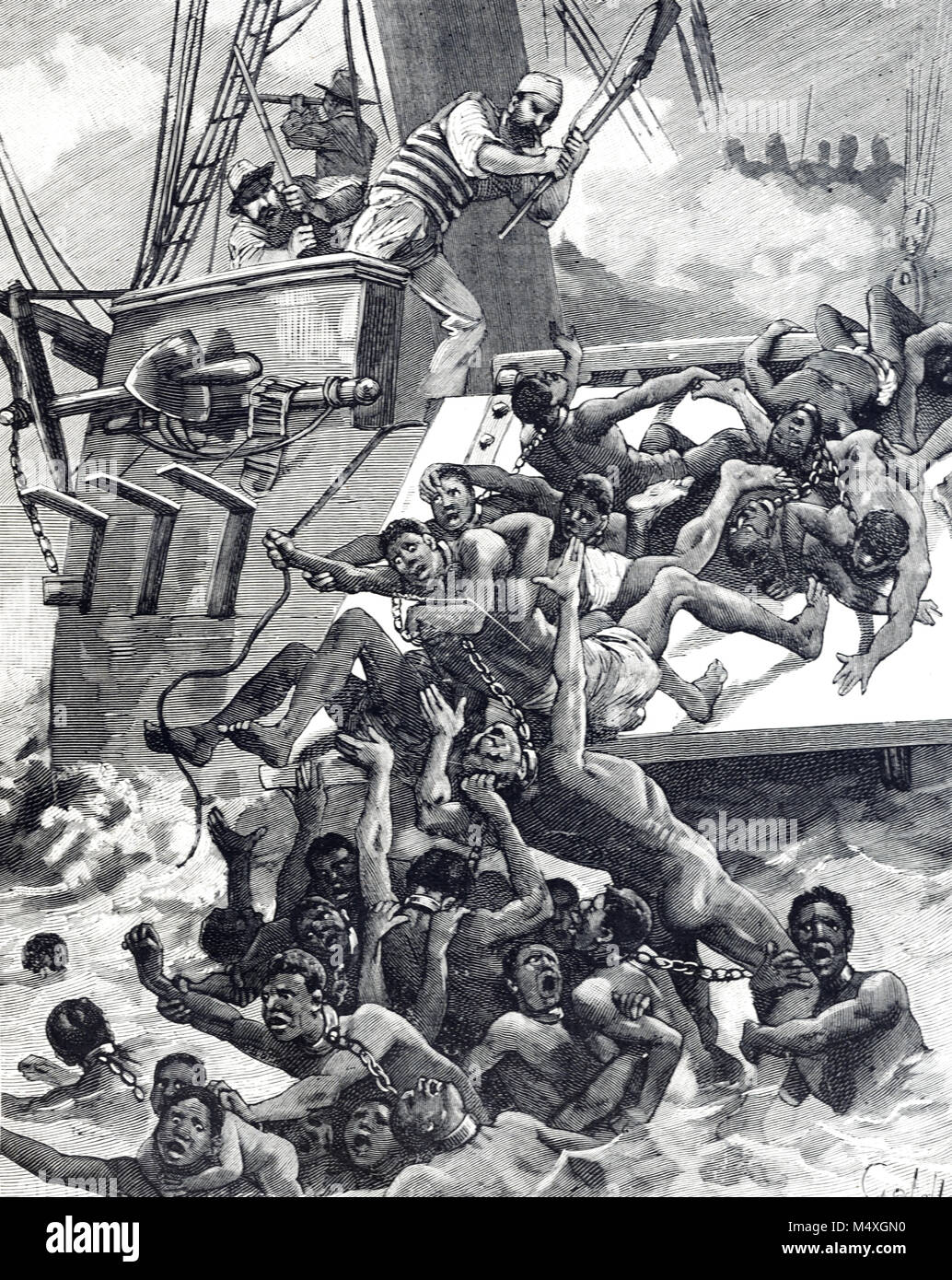 Black African Slaves Thrown off Slave Ship into Sea. Slave Trade and People Traffickers (Engraving, 1888) Stock Photohttps://www.alamy.com/image-license-details/?v=1https://www.alamy.com/stock-photo-black-african-slaves-thrown-off-slave-ship-into-sea-slave-trade-and-175146188.html
Black African Slaves Thrown off Slave Ship into Sea. Slave Trade and People Traffickers (Engraving, 1888) Stock Photohttps://www.alamy.com/image-license-details/?v=1https://www.alamy.com/stock-photo-black-african-slaves-thrown-off-slave-ship-into-sea-slave-trade-and-175146188.htmlRMM4XGN0–Black African Slaves Thrown off Slave Ship into Sea. Slave Trade and People Traffickers (Engraving, 1888)
 African slave traffic. One group of Africans sell other Africans to white slave traders. From The History of Slavery and the Slave Trade - Ancient and Modern - The Forms of Slavery that Prevailed in Ancient Nations, Particularly in Greece and Rome. By W. O. Blake. Published in Columbus, Ohio, USA, 1859 Stock Photohttps://www.alamy.com/image-license-details/?v=1https://www.alamy.com/african-slave-traffic-one-group-of-africans-sell-other-africans-to-white-slave-traders-from-the-history-of-slavery-and-the-slave-trade-ancient-and-modern-the-forms-of-slavery-that-prevailed-in-ancient-nations-particularly-in-greece-and-rome-by-w-o-blake-published-in-columbus-ohio-usa-1859-image356660062.html
African slave traffic. One group of Africans sell other Africans to white slave traders. From The History of Slavery and the Slave Trade - Ancient and Modern - The Forms of Slavery that Prevailed in Ancient Nations, Particularly in Greece and Rome. By W. O. Blake. Published in Columbus, Ohio, USA, 1859 Stock Photohttps://www.alamy.com/image-license-details/?v=1https://www.alamy.com/african-slave-traffic-one-group-of-africans-sell-other-africans-to-white-slave-traders-from-the-history-of-slavery-and-the-slave-trade-ancient-and-modern-the-forms-of-slavery-that-prevailed-in-ancient-nations-particularly-in-greece-and-rome-by-w-o-blake-published-in-columbus-ohio-usa-1859-image356660062.htmlRM2BM77FA–African slave traffic. One group of Africans sell other Africans to white slave traders. From The History of Slavery and the Slave Trade - Ancient and Modern - The Forms of Slavery that Prevailed in Ancient Nations, Particularly in Greece and Rome. By W. O. Blake. Published in Columbus, Ohio, USA, 1859
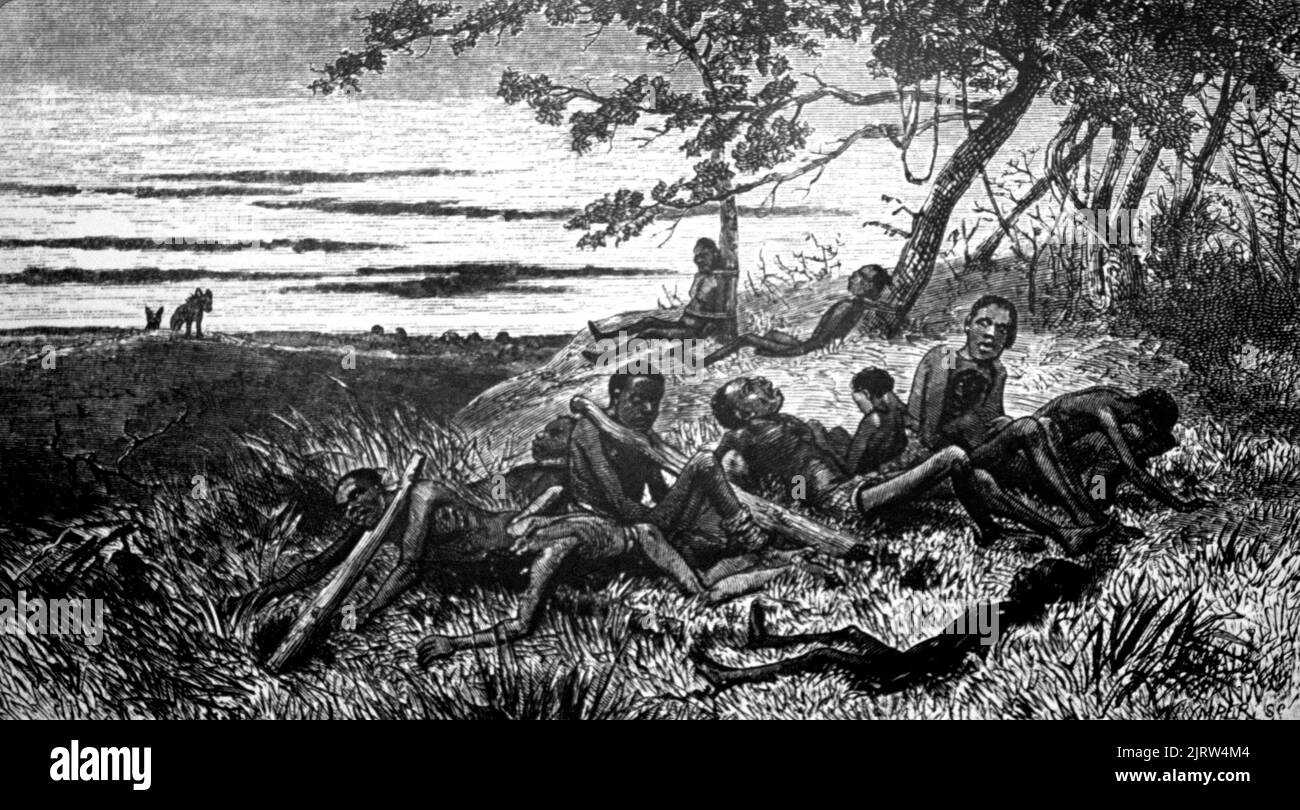 Black and White Illustration of the African Slave Trade Stock Photohttps://www.alamy.com/image-license-details/?v=1https://www.alamy.com/black-and-white-illustration-of-the-african-slave-trade-image479369524.html
Black and White Illustration of the African Slave Trade Stock Photohttps://www.alamy.com/image-license-details/?v=1https://www.alamy.com/black-and-white-illustration-of-the-african-slave-trade-image479369524.htmlRM2JRW4M4–Black and White Illustration of the African Slave Trade
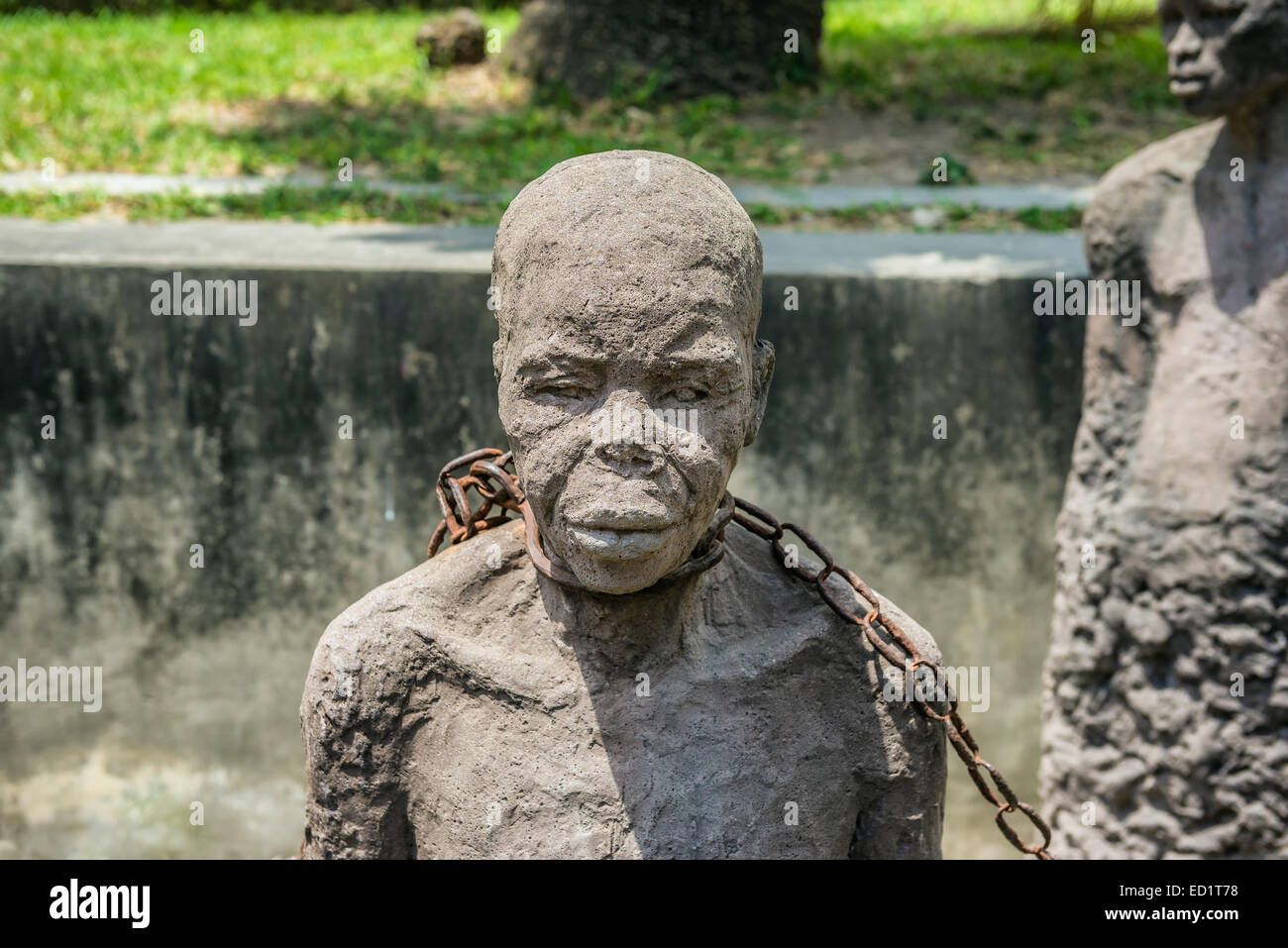 Slavery Memorial in Stone Town, Zanzibar, Tanzania. Slave auction was held near this location for many years. Stock Photohttps://www.alamy.com/image-license-details/?v=1https://www.alamy.com/stock-photo-slavery-memorial-in-stone-town-zanzibar-tanzania-slave-auction-was-76872972.html
Slavery Memorial in Stone Town, Zanzibar, Tanzania. Slave auction was held near this location for many years. Stock Photohttps://www.alamy.com/image-license-details/?v=1https://www.alamy.com/stock-photo-slavery-memorial-in-stone-town-zanzibar-tanzania-slave-auction-was-76872972.htmlRFED1T78–Slavery Memorial in Stone Town, Zanzibar, Tanzania. Slave auction was held near this location for many years.
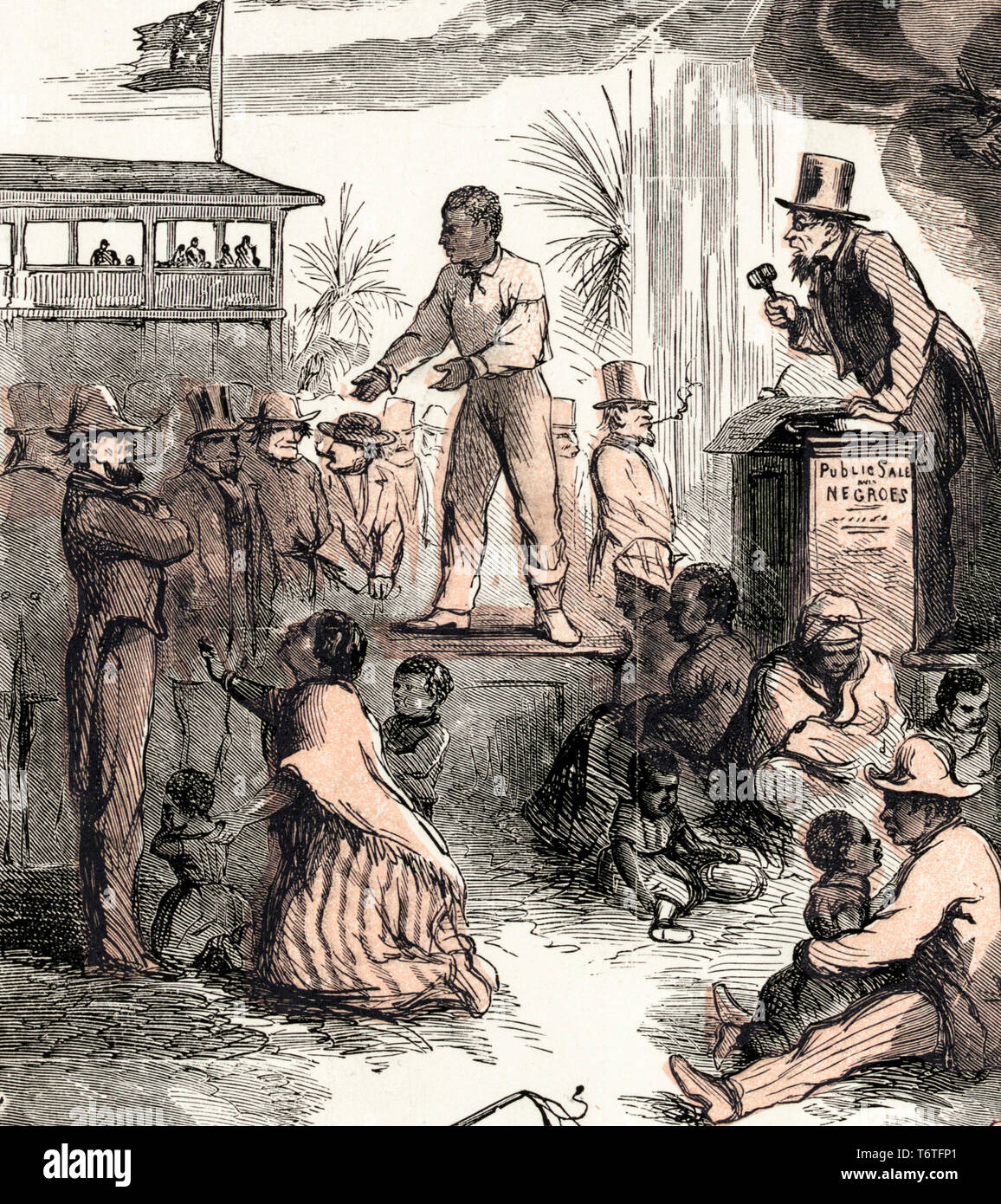 A black man is sold into slavery, separated from his wife and children at a slave auction, detail from Emancipation, end of the slave trade print by Thomas Nast (artist) & King & Baird (engraver), 1865 Stock Photohttps://www.alamy.com/image-license-details/?v=1https://www.alamy.com/a-black-man-is-sold-into-slavery-separated-from-his-wife-and-children-at-a-slave-auction-detail-from-emancipation-end-of-the-slave-trade-print-by-thomas-nast-artist-king-baird-engraver-1865-image245172313.html
A black man is sold into slavery, separated from his wife and children at a slave auction, detail from Emancipation, end of the slave trade print by Thomas Nast (artist) & King & Baird (engraver), 1865 Stock Photohttps://www.alamy.com/image-license-details/?v=1https://www.alamy.com/a-black-man-is-sold-into-slavery-separated-from-his-wife-and-children-at-a-slave-auction-detail-from-emancipation-end-of-the-slave-trade-print-by-thomas-nast-artist-king-baird-engraver-1865-image245172313.htmlRMT6TFP1–A black man is sold into slavery, separated from his wife and children at a slave auction, detail from Emancipation, end of the slave trade print by Thomas Nast (artist) & King & Baird (engraver), 1865
 Bristol and the River Avon – an old engraving c. 1830. Bristol's main industry was in maritime trading and at the height of the slave trade, from 1700 to 1807, more than 2,000 slave ships carried an estimated 500,000 people from Africa to slavery in the Americas. Stock Photohttps://www.alamy.com/image-license-details/?v=1https://www.alamy.com/bristol-and-the-river-avon-an-old-engraving-c-1830-bristols-main-industry-was-in-maritime-trading-and-at-the-height-of-the-slave-trade-from-1700-to-1807-more-than-2000-slave-ships-carried-an-estimated-500000-people-from-africa-to-slavery-in-the-americas-image630447903.html
Bristol and the River Avon – an old engraving c. 1830. Bristol's main industry was in maritime trading and at the height of the slave trade, from 1700 to 1807, more than 2,000 slave ships carried an estimated 500,000 people from Africa to slavery in the Americas. Stock Photohttps://www.alamy.com/image-license-details/?v=1https://www.alamy.com/bristol-and-the-river-avon-an-old-engraving-c-1830-bristols-main-industry-was-in-maritime-trading-and-at-the-height-of-the-slave-trade-from-1700-to-1807-more-than-2000-slave-ships-carried-an-estimated-500000-people-from-africa-to-slavery-in-the-americas-image630447903.htmlRM2YHKAMF–Bristol and the River Avon – an old engraving c. 1830. Bristol's main industry was in maritime trading and at the height of the slave trade, from 1700 to 1807, more than 2,000 slave ships carried an estimated 500,000 people from Africa to slavery in the Americas.
 Slave Symbol - African Black Man with Hands Rope Stock Photohttps://www.alamy.com/image-license-details/?v=1https://www.alamy.com/stock-photo-slave-symbol-african-black-man-with-hands-rope-172466782.html
Slave Symbol - African Black Man with Hands Rope Stock Photohttps://www.alamy.com/image-license-details/?v=1https://www.alamy.com/stock-photo-slave-symbol-african-black-man-with-hands-rope-172466782.htmlRFM0GF3X–Slave Symbol - African Black Man with Hands Rope
 London, UK. 9th Dec, 2017. National Anti-Slavery March. Hundreds of protesters march from Belgrave Square to the Libyan Embassy in south west London to rally and protest against modern slave auctions of African refugees in Libya. Credit: Guy Corbishley/Alamy Live News Stock Photohttps://www.alamy.com/image-license-details/?v=1https://www.alamy.com/stock-image-london-uk-9th-dec-2017-national-anti-slavery-march-hundreds-of-protesters-167982327.html
London, UK. 9th Dec, 2017. National Anti-Slavery March. Hundreds of protesters march from Belgrave Square to the Libyan Embassy in south west London to rally and protest against modern slave auctions of African refugees in Libya. Credit: Guy Corbishley/Alamy Live News Stock Photohttps://www.alamy.com/image-license-details/?v=1https://www.alamy.com/stock-image-london-uk-9th-dec-2017-national-anti-slavery-march-hundreds-of-protesters-167982327.htmlRMKN874R–London, UK. 9th Dec, 2017. National Anti-Slavery March. Hundreds of protesters march from Belgrave Square to the Libyan Embassy in south west London to rally and protest against modern slave auctions of African refugees in Libya. Credit: Guy Corbishley/Alamy Live News
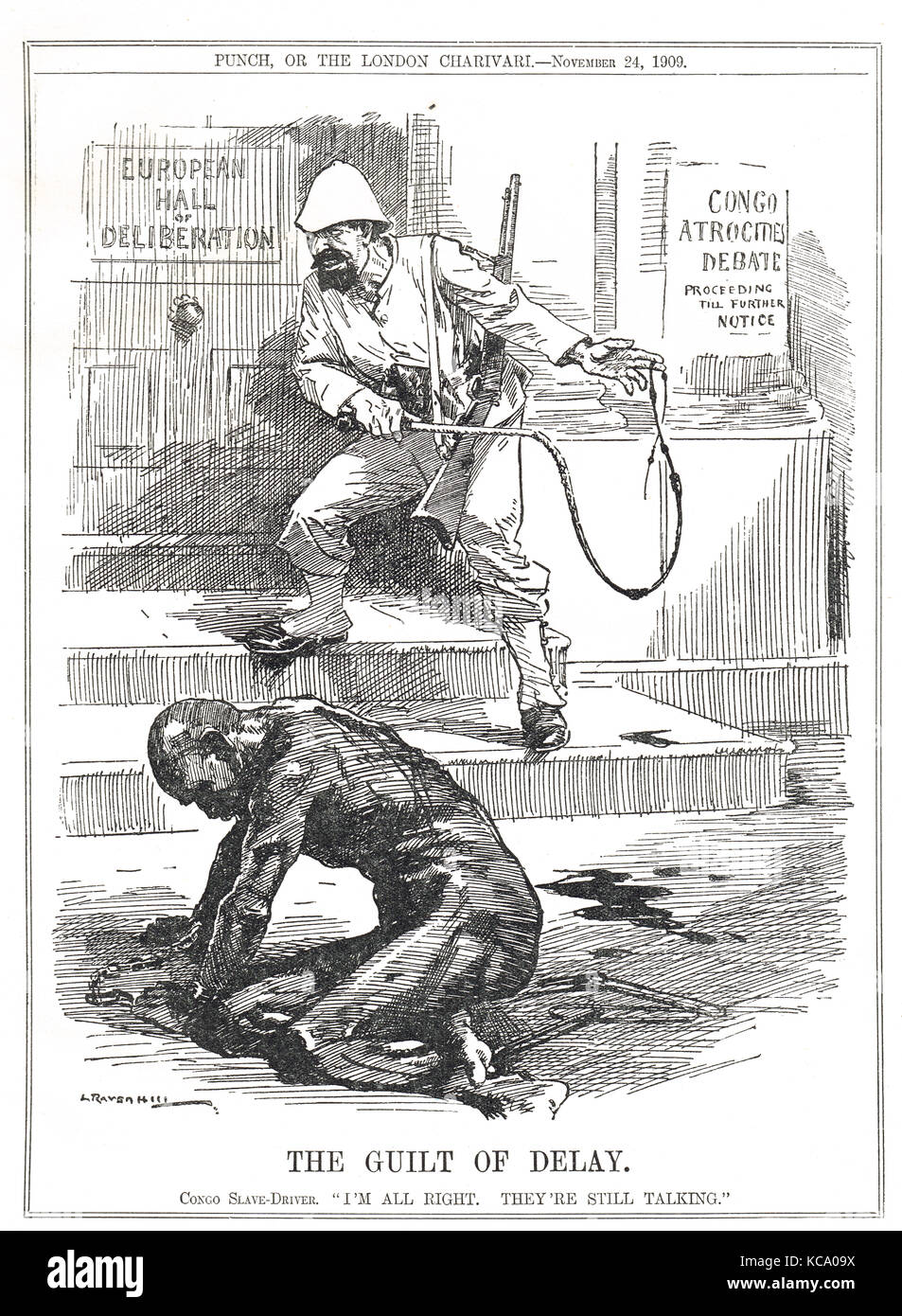 The Guilt of Delay, Slavery in the Belgian Congo, Punch cartoon, 1909 Stock Photohttps://www.alamy.com/image-license-details/?v=1https://www.alamy.com/stock-image-the-guilt-of-delay-slavery-in-the-belgian-congo-punch-cartoon-1909-162488982.html
The Guilt of Delay, Slavery in the Belgian Congo, Punch cartoon, 1909 Stock Photohttps://www.alamy.com/image-license-details/?v=1https://www.alamy.com/stock-image-the-guilt-of-delay-slavery-in-the-belgian-congo-punch-cartoon-1909-162488982.htmlRMKCA09X–The Guilt of Delay, Slavery in the Belgian Congo, Punch cartoon, 1909
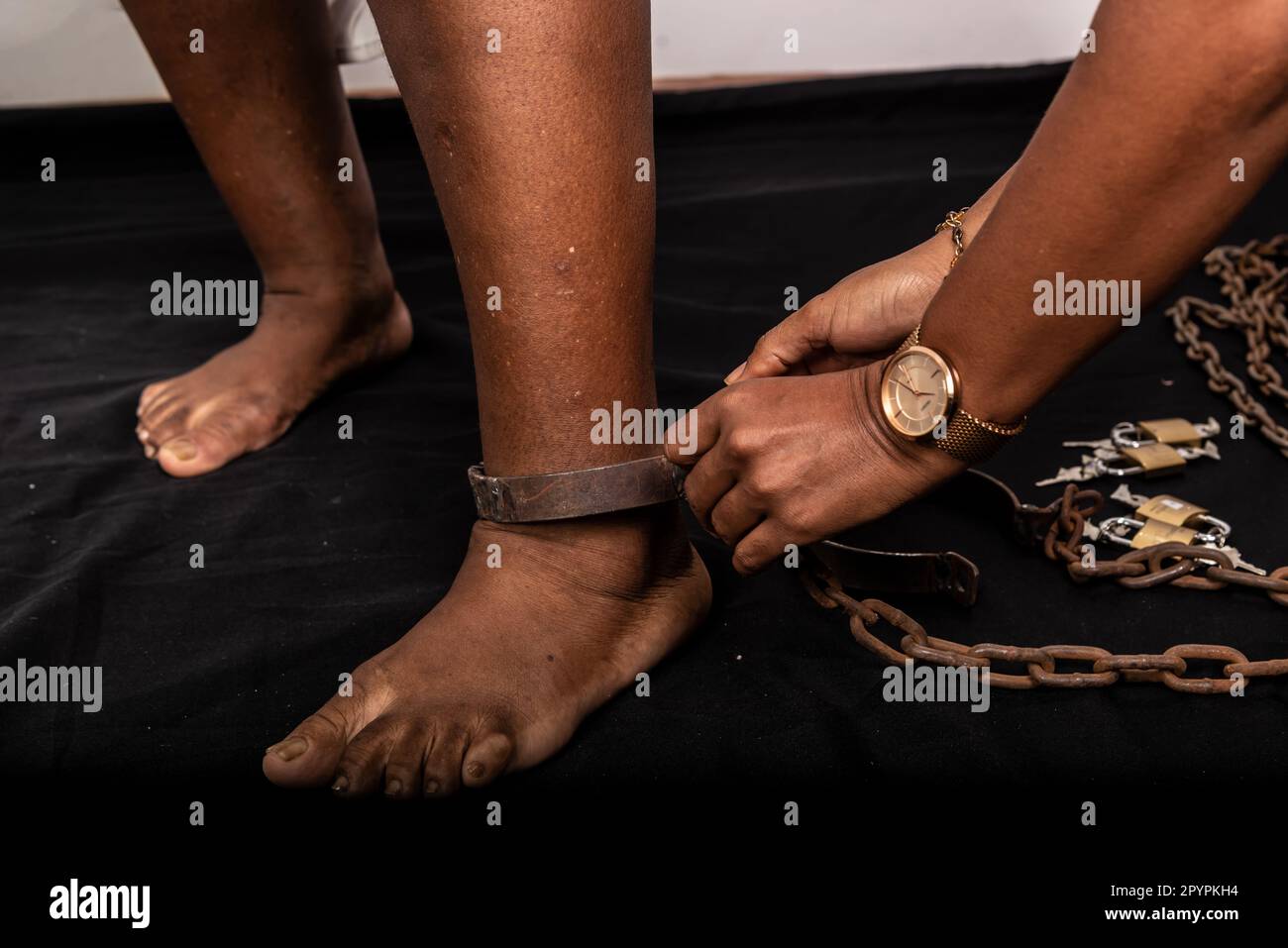 Black person being chained. Slave trade. Studio reproduction. Stock Photohttps://www.alamy.com/image-license-details/?v=1https://www.alamy.com/black-person-being-chained-slave-trade-studio-reproduction-image550615440.html
Black person being chained. Slave trade. Studio reproduction. Stock Photohttps://www.alamy.com/image-license-details/?v=1https://www.alamy.com/black-person-being-chained-slave-trade-studio-reproduction-image550615440.htmlRF2PYPKH4–Black person being chained. Slave trade. Studio reproduction.
 Protesters outside the Libyan embassy calling for the British government to pressure Libya to end the slavery and inhumane treatment of migrants. Dec 9 2017 Stock Photohttps://www.alamy.com/image-license-details/?v=1https://www.alamy.com/stock-image-protesters-outside-the-libyan-embassy-calling-for-the-british-government-168165115.html
Protesters outside the Libyan embassy calling for the British government to pressure Libya to end the slavery and inhumane treatment of migrants. Dec 9 2017 Stock Photohttps://www.alamy.com/image-license-details/?v=1https://www.alamy.com/stock-image-protesters-outside-the-libyan-embassy-calling-for-the-british-government-168165115.htmlRMKNGG8Y–Protesters outside the Libyan embassy calling for the British government to pressure Libya to end the slavery and inhumane treatment of migrants. Dec 9 2017
 Slave shed where African captives are held until sold into slavery. Hand-colored woodcut Stock Photohttps://www.alamy.com/image-license-details/?v=1https://www.alamy.com/slave-shed-where-african-captives-are-held-until-sold-into-slavery-image6907086.html
Slave shed where African captives are held until sold into slavery. Hand-colored woodcut Stock Photohttps://www.alamy.com/image-license-details/?v=1https://www.alamy.com/slave-shed-where-african-captives-are-held-until-sold-into-slavery-image6907086.htmlRMA8FDGF–Slave shed where African captives are held until sold into slavery. Hand-colored woodcut
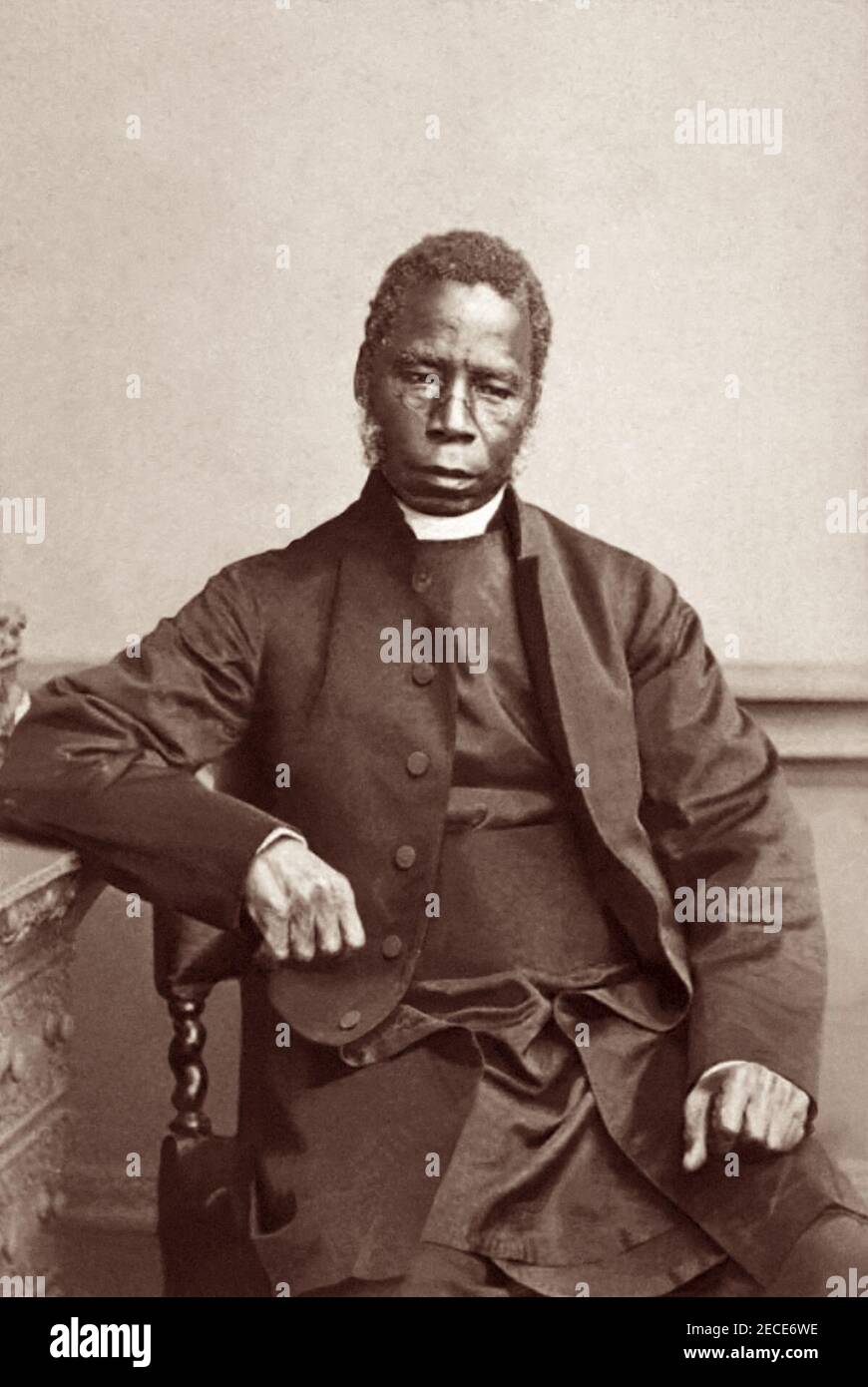 Samuel Ajayi Crowther (c1809–1891), former slave who became the first black Anglican Bishop. Crowther was ordained by the Church Missionary Society and in 1864 was consecrated bishop of the Niger territory in Africa. A linguist, with an honorary doctorate of divinity from Oxford University, Crowther worked on Bible translation into more than one African language. Stock Photohttps://www.alamy.com/image-license-details/?v=1https://www.alamy.com/samuel-ajayi-crowther-c18091891-former-slave-who-became-the-first-black-anglican-bishop-crowther-was-ordained-by-the-church-missionary-society-and-in-1864-was-consecrated-bishop-of-the-niger-territory-in-africa-a-linguist-with-an-honorary-doctorate-of-divinity-from-oxford-university-crowther-worked-on-bible-translation-into-more-than-one-african-language-image403527082.html
Samuel Ajayi Crowther (c1809–1891), former slave who became the first black Anglican Bishop. Crowther was ordained by the Church Missionary Society and in 1864 was consecrated bishop of the Niger territory in Africa. A linguist, with an honorary doctorate of divinity from Oxford University, Crowther worked on Bible translation into more than one African language. Stock Photohttps://www.alamy.com/image-license-details/?v=1https://www.alamy.com/samuel-ajayi-crowther-c18091891-former-slave-who-became-the-first-black-anglican-bishop-crowther-was-ordained-by-the-church-missionary-society-and-in-1864-was-consecrated-bishop-of-the-niger-territory-in-africa-a-linguist-with-an-honorary-doctorate-of-divinity-from-oxford-university-crowther-worked-on-bible-translation-into-more-than-one-african-language-image403527082.htmlRM2ECE6WE–Samuel Ajayi Crowther (c1809–1891), former slave who became the first black Anglican Bishop. Crowther was ordained by the Church Missionary Society and in 1864 was consecrated bishop of the Niger territory in Africa. A linguist, with an honorary doctorate of divinity from Oxford University, Crowther worked on Bible translation into more than one African language.
 Reproduction of a handbill advertising a slave auction, in Charleston, South Carolina, in 1769. Stock Photohttps://www.alamy.com/image-license-details/?v=1https://www.alamy.com/reproduction-of-a-handbill-advertising-a-slave-auction-in-charleston-south-carolina-in-1769-image634301541.html
Reproduction of a handbill advertising a slave auction, in Charleston, South Carolina, in 1769. Stock Photohttps://www.alamy.com/image-license-details/?v=1https://www.alamy.com/reproduction-of-a-handbill-advertising-a-slave-auction-in-charleston-south-carolina-in-1769-image634301541.htmlRM2YRXX2D–Reproduction of a handbill advertising a slave auction, in Charleston, South Carolina, in 1769.
 Tippu Tip, African Slave Trader Stock Photohttps://www.alamy.com/image-license-details/?v=1https://www.alamy.com/tippu-tip-african-slave-trader-image245859568.html
Tippu Tip, African Slave Trader Stock Photohttps://www.alamy.com/image-license-details/?v=1https://www.alamy.com/tippu-tip-african-slave-trader-image245859568.htmlRMT7YTAT–Tippu Tip, African Slave Trader
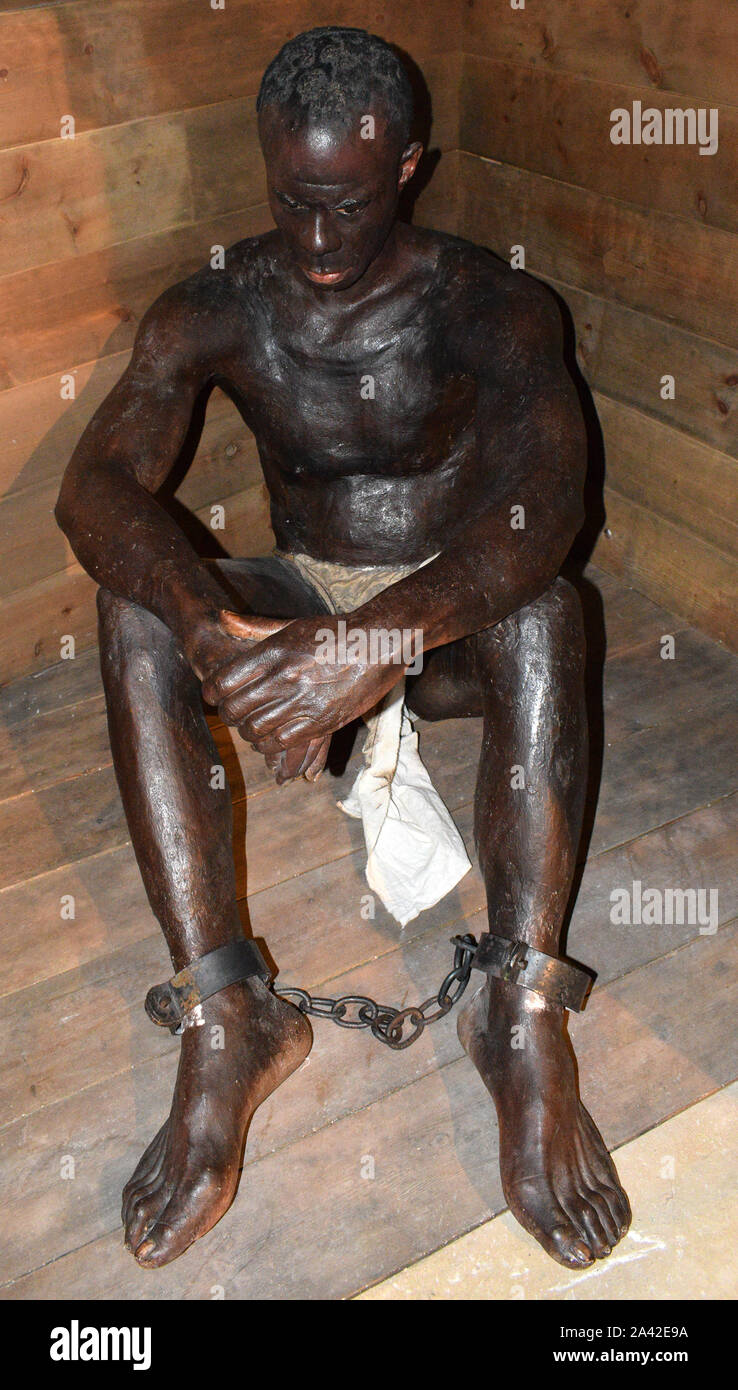 SLAVE TRADE - A Slave in chains aboard a slave ship (from an exhibit at Whitehaven museum, UK) Stock Photohttps://www.alamy.com/image-license-details/?v=1https://www.alamy.com/slave-trade-a-slave-in-chains-aboard-a-slave-ship-from-an-exhibit-at-whitehaven-museum-uk-image329510758.html
SLAVE TRADE - A Slave in chains aboard a slave ship (from an exhibit at Whitehaven museum, UK) Stock Photohttps://www.alamy.com/image-license-details/?v=1https://www.alamy.com/slave-trade-a-slave-in-chains-aboard-a-slave-ship-from-an-exhibit-at-whitehaven-museum-uk-image329510758.htmlRM2A42E9A–SLAVE TRADE - A Slave in chains aboard a slave ship (from an exhibit at Whitehaven museum, UK)
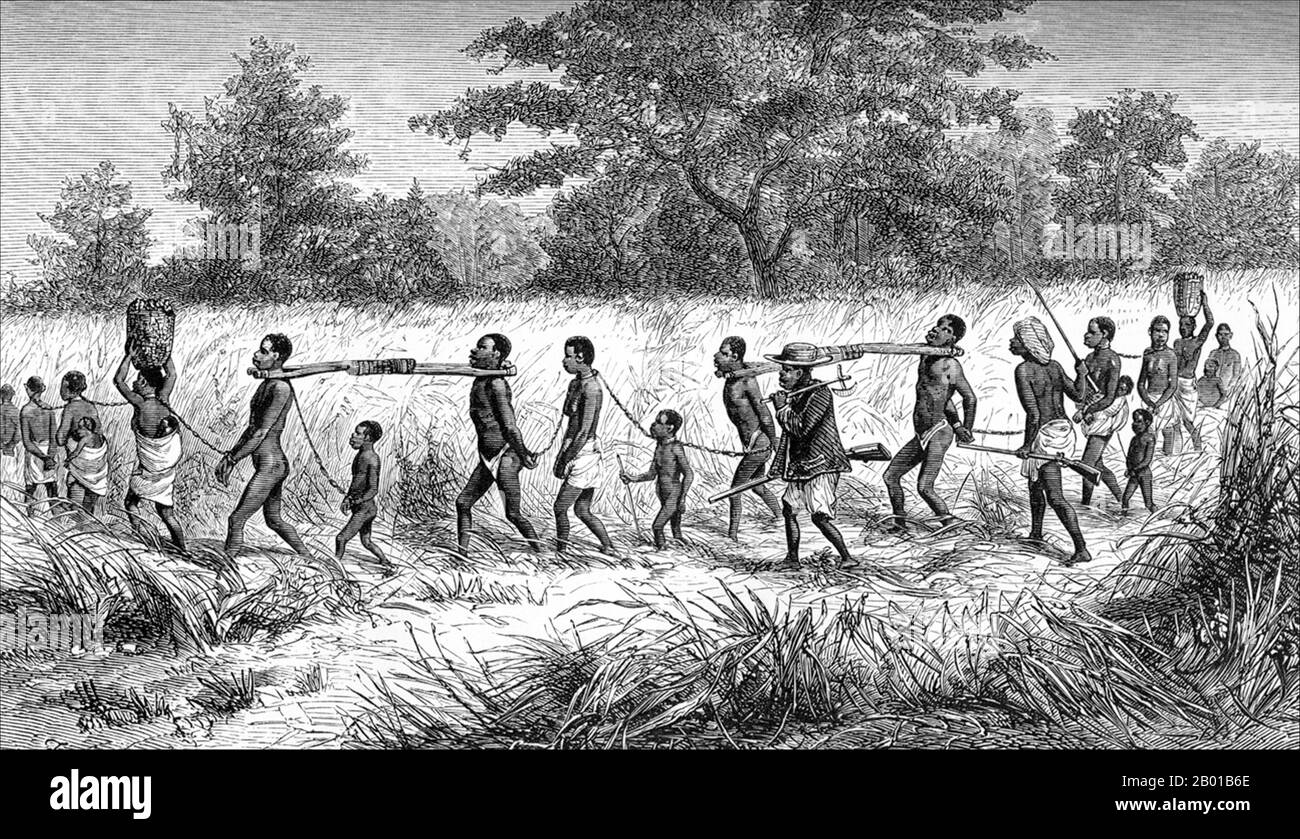 Central Africa: 'Gang Of Captives met at Mbame’s on their way to Tette'. Drawing by David Livingstone (19 March 1913 - 1 May 1873), 1865. 'The slave party, a long line of manacled men, women, and children, came wending their way round the hill and into the valley, on the side of which the village stood. The black drivers, armed with muskets, and bedecked with various articles of finery, marched jauntily in the front, middle, and rear of the line; some of them blowing exultant notes out of long tin horns. They seemed to feel that they were doing a very noble thing, and might proudly march...' Stock Photohttps://www.alamy.com/image-license-details/?v=1https://www.alamy.com/central-africa-gang-of-captives-met-at-mbames-on-their-way-to-tette-drawing-by-david-livingstone-19-march-1913-1-may-1873-1865-the-slave-party-a-long-line-of-manacled-men-women-and-children-came-wending-their-way-round-the-hill-and-into-the-valley-on-the-side-of-which-the-village-stood-the-black-drivers-armed-with-muskets-and-bedecked-with-various-articles-of-finery-marched-jauntily-in-the-front-middle-and-rear-of-the-line-some-of-them-blowing-exultant-notes-out-of-long-tin-horns-they-seemed-to-feel-that-they-were-doing-a-very-noble-thing-and-might-proudly-march-image344238118.html
Central Africa: 'Gang Of Captives met at Mbame’s on their way to Tette'. Drawing by David Livingstone (19 March 1913 - 1 May 1873), 1865. 'The slave party, a long line of manacled men, women, and children, came wending their way round the hill and into the valley, on the side of which the village stood. The black drivers, armed with muskets, and bedecked with various articles of finery, marched jauntily in the front, middle, and rear of the line; some of them blowing exultant notes out of long tin horns. They seemed to feel that they were doing a very noble thing, and might proudly march...' Stock Photohttps://www.alamy.com/image-license-details/?v=1https://www.alamy.com/central-africa-gang-of-captives-met-at-mbames-on-their-way-to-tette-drawing-by-david-livingstone-19-march-1913-1-may-1873-1865-the-slave-party-a-long-line-of-manacled-men-women-and-children-came-wending-their-way-round-the-hill-and-into-the-valley-on-the-side-of-which-the-village-stood-the-black-drivers-armed-with-muskets-and-bedecked-with-various-articles-of-finery-marched-jauntily-in-the-front-middle-and-rear-of-the-line-some-of-them-blowing-exultant-notes-out-of-long-tin-horns-they-seemed-to-feel-that-they-were-doing-a-very-noble-thing-and-might-proudly-march-image344238118.htmlRM2B01B6E–Central Africa: 'Gang Of Captives met at Mbame’s on their way to Tette'. Drawing by David Livingstone (19 March 1913 - 1 May 1873), 1865. 'The slave party, a long line of manacled men, women, and children, came wending their way round the hill and into the valley, on the side of which the village stood. The black drivers, armed with muskets, and bedecked with various articles of finery, marched jauntily in the front, middle, and rear of the line; some of them blowing exultant notes out of long tin horns. They seemed to feel that they were doing a very noble thing, and might proudly march...'
 Price Birch & Company (previously Franklin and Armfield), the largest slave dealers in the antebellum south situated on Duke Street, Alexandria, Virginia USA with access to the Potomac River. This photograph was taken in 1861 during the American Civil War, after the surrender it was used by Union Soldiers as a jail. The building was demolished in 1870, a building named 'Freedom House' now occupies the site. Stock Photohttps://www.alamy.com/image-license-details/?v=1https://www.alamy.com/stock-photo-price-birch-company-previously-franklin-and-armfield-the-largest-slave-93220293.html
Price Birch & Company (previously Franklin and Armfield), the largest slave dealers in the antebellum south situated on Duke Street, Alexandria, Virginia USA with access to the Potomac River. This photograph was taken in 1861 during the American Civil War, after the surrender it was used by Union Soldiers as a jail. The building was demolished in 1870, a building named 'Freedom House' now occupies the site. Stock Photohttps://www.alamy.com/image-license-details/?v=1https://www.alamy.com/stock-photo-price-birch-company-previously-franklin-and-armfield-the-largest-slave-93220293.htmlRMFBJFC5–Price Birch & Company (previously Franklin and Armfield), the largest slave dealers in the antebellum south situated on Duke Street, Alexandria, Virginia USA with access to the Potomac River. This photograph was taken in 1861 during the American Civil War, after the surrender it was used by Union Soldiers as a jail. The building was demolished in 1870, a building named 'Freedom House' now occupies the site.
 African American History Monument at the South Carolina capital building Columbia SC Stock Photohttps://www.alamy.com/image-license-details/?v=1https://www.alamy.com/african-american-history-monument-at-the-south-carolina-capital-building-columbia-sc-image469606576.html
African American History Monument at the South Carolina capital building Columbia SC Stock Photohttps://www.alamy.com/image-license-details/?v=1https://www.alamy.com/african-american-history-monument-at-the-south-carolina-capital-building-columbia-sc-image469606576.htmlRM2J80BYC–African American History Monument at the South Carolina capital building Columbia SC
 African Slaves, Slave Traders & Slave Ship off African Coast. Vintage Illustration or Engraving 1881 Stock Photohttps://www.alamy.com/image-license-details/?v=1https://www.alamy.com/african-slaves-slave-traders-slave-ship-off-african-coast-vintage-illustration-or-engraving-1881-image460470269.html
African Slaves, Slave Traders & Slave Ship off African Coast. Vintage Illustration or Engraving 1881 Stock Photohttps://www.alamy.com/image-license-details/?v=1https://www.alamy.com/african-slaves-slave-traders-slave-ship-off-african-coast-vintage-illustration-or-engraving-1881-image460470269.htmlRM2HN46EN–African Slaves, Slave Traders & Slave Ship off African Coast. Vintage Illustration or Engraving 1881
 A group of captured Africans being led away by a white slaver. Stock Photohttps://www.alamy.com/image-license-details/?v=1https://www.alamy.com/stock-photo-a-group-of-captured-africans-being-led-away-by-a-white-slaver-38107873.html
A group of captured Africans being led away by a white slaver. Stock Photohttps://www.alamy.com/image-license-details/?v=1https://www.alamy.com/stock-photo-a-group-of-captured-africans-being-led-away-by-a-white-slaver-38107873.htmlRMC5YXYD–A group of captured Africans being led away by a white slaver.
 Black and White Illustration of the African Slave Trade Stock Photohttps://www.alamy.com/image-license-details/?v=1https://www.alamy.com/black-and-white-illustration-of-the-african-slave-trade-image479369514.html
Black and White Illustration of the African Slave Trade Stock Photohttps://www.alamy.com/image-license-details/?v=1https://www.alamy.com/black-and-white-illustration-of-the-african-slave-trade-image479369514.htmlRM2JRW4KP–Black and White Illustration of the African Slave Trade
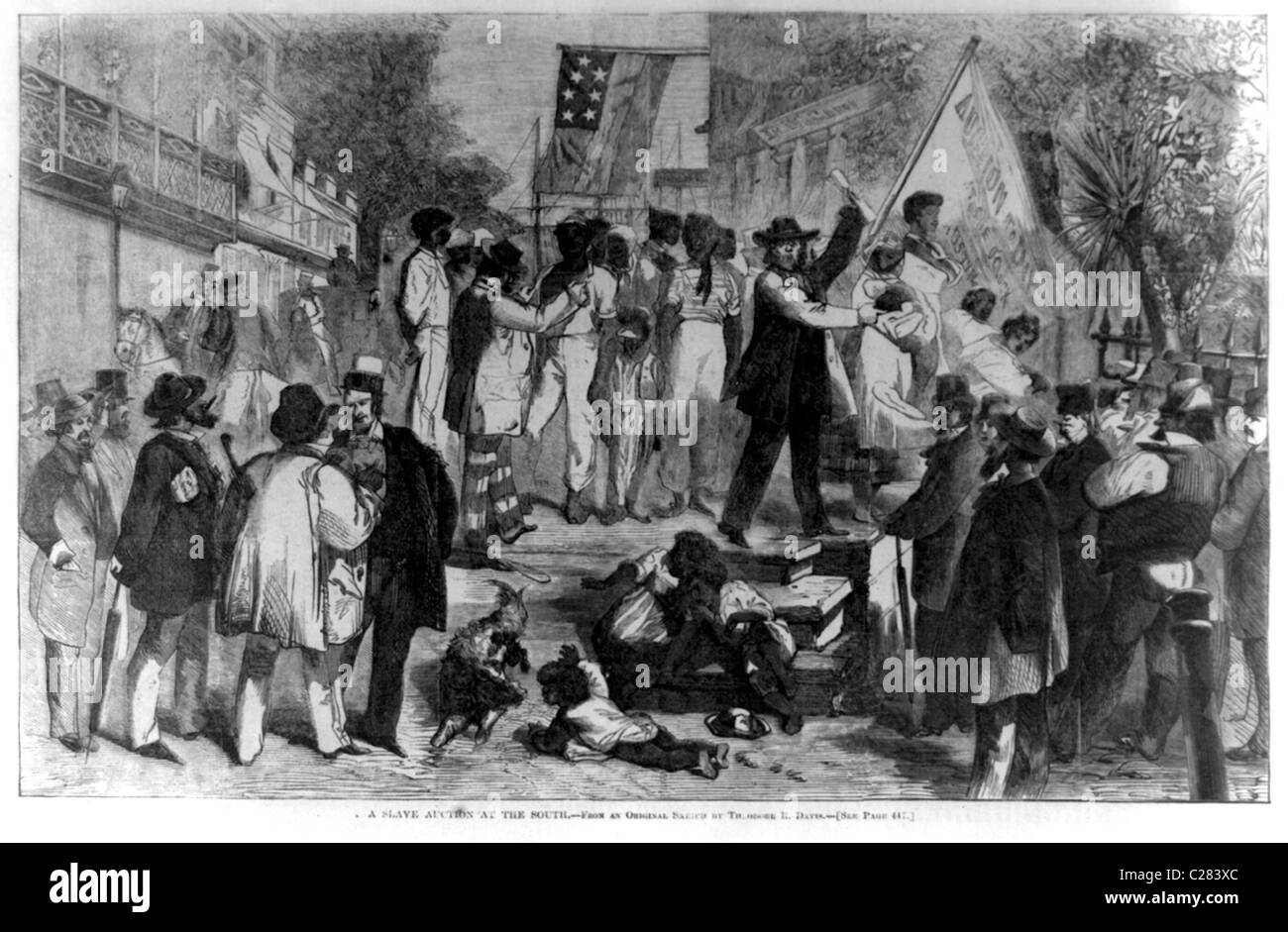 A slave auction at the south. African American men, women, and children being auctioned off in front of crowd of men. Stock Photohttps://www.alamy.com/image-license-details/?v=1https://www.alamy.com/stock-photo-a-slave-auction-at-the-south-african-american-men-women-and-children-35828756.html
A slave auction at the south. African American men, women, and children being auctioned off in front of crowd of men. Stock Photohttps://www.alamy.com/image-license-details/?v=1https://www.alamy.com/stock-photo-a-slave-auction-at-the-south-african-american-men-women-and-children-35828756.htmlRMC283XC–A slave auction at the south. African American men, women, and children being auctioned off in front of crowd of men.
 Slave Memorial In Zanzibar East Africa Stock Photohttps://www.alamy.com/image-license-details/?v=1https://www.alamy.com/stock-photo-slave-memorial-in-zanzibar-east-africa-30842862.html
Slave Memorial In Zanzibar East Africa Stock Photohttps://www.alamy.com/image-license-details/?v=1https://www.alamy.com/stock-photo-slave-memorial-in-zanzibar-east-africa-30842862.htmlRMBP50AP–Slave Memorial In Zanzibar East Africa
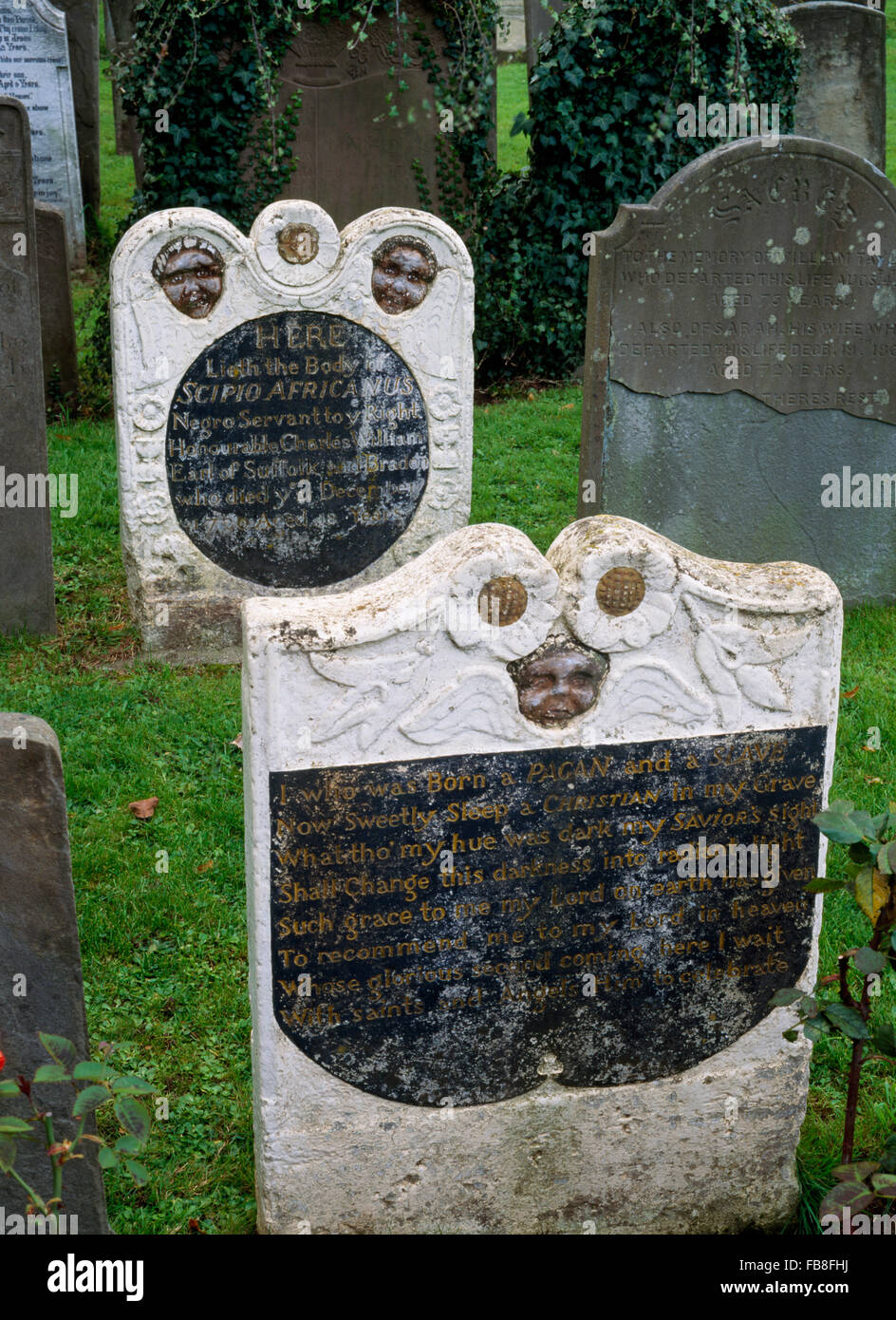 Grave of an African slave Scipio Africanus in St Mary's churchyard, Henbury, Bristol, England. Died aged 18 in 1720 Stock Photohttps://www.alamy.com/image-license-details/?v=1https://www.alamy.com/stock-photo-grave-of-an-african-slave-scipio-africanus-in-st-marys-churchyard-93000926.html
Grave of an African slave Scipio Africanus in St Mary's churchyard, Henbury, Bristol, England. Died aged 18 in 1720 Stock Photohttps://www.alamy.com/image-license-details/?v=1https://www.alamy.com/stock-photo-grave-of-an-african-slave-scipio-africanus-in-st-marys-churchyard-93000926.htmlRMFB8FHJ–Grave of an African slave Scipio Africanus in St Mary's churchyard, Henbury, Bristol, England. Died aged 18 in 1720
 Trafficking of Black african Country Smuggling in cargo container, Citizens Refugees Transnational Migration Victims Migrant. Stock Photohttps://www.alamy.com/image-license-details/?v=1https://www.alamy.com/trafficking-of-black-african-country-smuggling-in-cargo-container-citizens-refugees-transnational-migration-victims-migrant-image593319437.html
Trafficking of Black african Country Smuggling in cargo container, Citizens Refugees Transnational Migration Victims Migrant. Stock Photohttps://www.alamy.com/image-license-details/?v=1https://www.alamy.com/trafficking-of-black-african-country-smuggling-in-cargo-container-citizens-refugees-transnational-migration-victims-migrant-image593319437.htmlRF2WD80YW–Trafficking of Black african Country Smuggling in cargo container, Citizens Refugees Transnational Migration Victims Migrant.
 London, UK. 9th Dec, 2017. National Anti-Slavery March. Hundreds of protesters march from Belgrave Square to the Libyan Embassy in south west London to rally and protest against modern slave auctions of African refugees in Libya. Credit: Guy Corbishley/Alamy Live News Stock Photohttps://www.alamy.com/image-license-details/?v=1https://www.alamy.com/stock-image-london-uk-9th-dec-2017-national-anti-slavery-march-hundreds-of-protesters-167982325.html
London, UK. 9th Dec, 2017. National Anti-Slavery March. Hundreds of protesters march from Belgrave Square to the Libyan Embassy in south west London to rally and protest against modern slave auctions of African refugees in Libya. Credit: Guy Corbishley/Alamy Live News Stock Photohttps://www.alamy.com/image-license-details/?v=1https://www.alamy.com/stock-image-london-uk-9th-dec-2017-national-anti-slavery-march-hundreds-of-protesters-167982325.htmlRMKN874N–London, UK. 9th Dec, 2017. National Anti-Slavery March. Hundreds of protesters march from Belgrave Square to the Libyan Embassy in south west London to rally and protest against modern slave auctions of African refugees in Libya. Credit: Guy Corbishley/Alamy Live News
 Tippu Tib (Hamed bin Mohamed el Marjebi) (1837-1905). Swahili slave trader and governor. Between 1876 and 1877 he accompanied Henry Morton Stanley on an expedition along the Congo River. Engraving by W. Meyer. El Congo y la Creación del Estado Independiente de este nombre. Historia de los Trabajos y Exploraciones Verificados (The Congo and the Founding of its Free State. A Story of Work and Exploration), by Henry M. Stanley. Edited in Barcelona, ca.1890. Spain. Stock Photohttps://www.alamy.com/image-license-details/?v=1https://www.alamy.com/tippu-tib-hamed-bin-mohamed-el-marjebi-1837-1905-swahili-slave-trader-and-governor-between-1876-and-1877-he-accompanied-henry-morton-stanley-on-an-expedition-along-the-congo-river-engraving-by-w-meyer-el-congo-y-la-creacin-del-estado-independiente-de-este-nombre-historia-de-los-trabajos-y-exploraciones-verificados-the-congo-and-the-founding-of-its-free-state-a-story-of-work-and-exploration-by-henry-m-stanley-edited-in-barcelona-ca1890-spain-image425783910.html
Tippu Tib (Hamed bin Mohamed el Marjebi) (1837-1905). Swahili slave trader and governor. Between 1876 and 1877 he accompanied Henry Morton Stanley on an expedition along the Congo River. Engraving by W. Meyer. El Congo y la Creación del Estado Independiente de este nombre. Historia de los Trabajos y Exploraciones Verificados (The Congo and the Founding of its Free State. A Story of Work and Exploration), by Henry M. Stanley. Edited in Barcelona, ca.1890. Spain. Stock Photohttps://www.alamy.com/image-license-details/?v=1https://www.alamy.com/tippu-tib-hamed-bin-mohamed-el-marjebi-1837-1905-swahili-slave-trader-and-governor-between-1876-and-1877-he-accompanied-henry-morton-stanley-on-an-expedition-along-the-congo-river-engraving-by-w-meyer-el-congo-y-la-creacin-del-estado-independiente-de-este-nombre-historia-de-los-trabajos-y-exploraciones-verificados-the-congo-and-the-founding-of-its-free-state-a-story-of-work-and-exploration-by-henry-m-stanley-edited-in-barcelona-ca1890-spain-image425783910.htmlRM2FMM3M6–Tippu Tib (Hamed bin Mohamed el Marjebi) (1837-1905). Swahili slave trader and governor. Between 1876 and 1877 he accompanied Henry Morton Stanley on an expedition along the Congo River. Engraving by W. Meyer. El Congo y la Creación del Estado Independiente de este nombre. Historia de los Trabajos y Exploraciones Verificados (The Congo and the Founding of its Free State. A Story of Work and Exploration), by Henry M. Stanley. Edited in Barcelona, ca.1890. Spain.
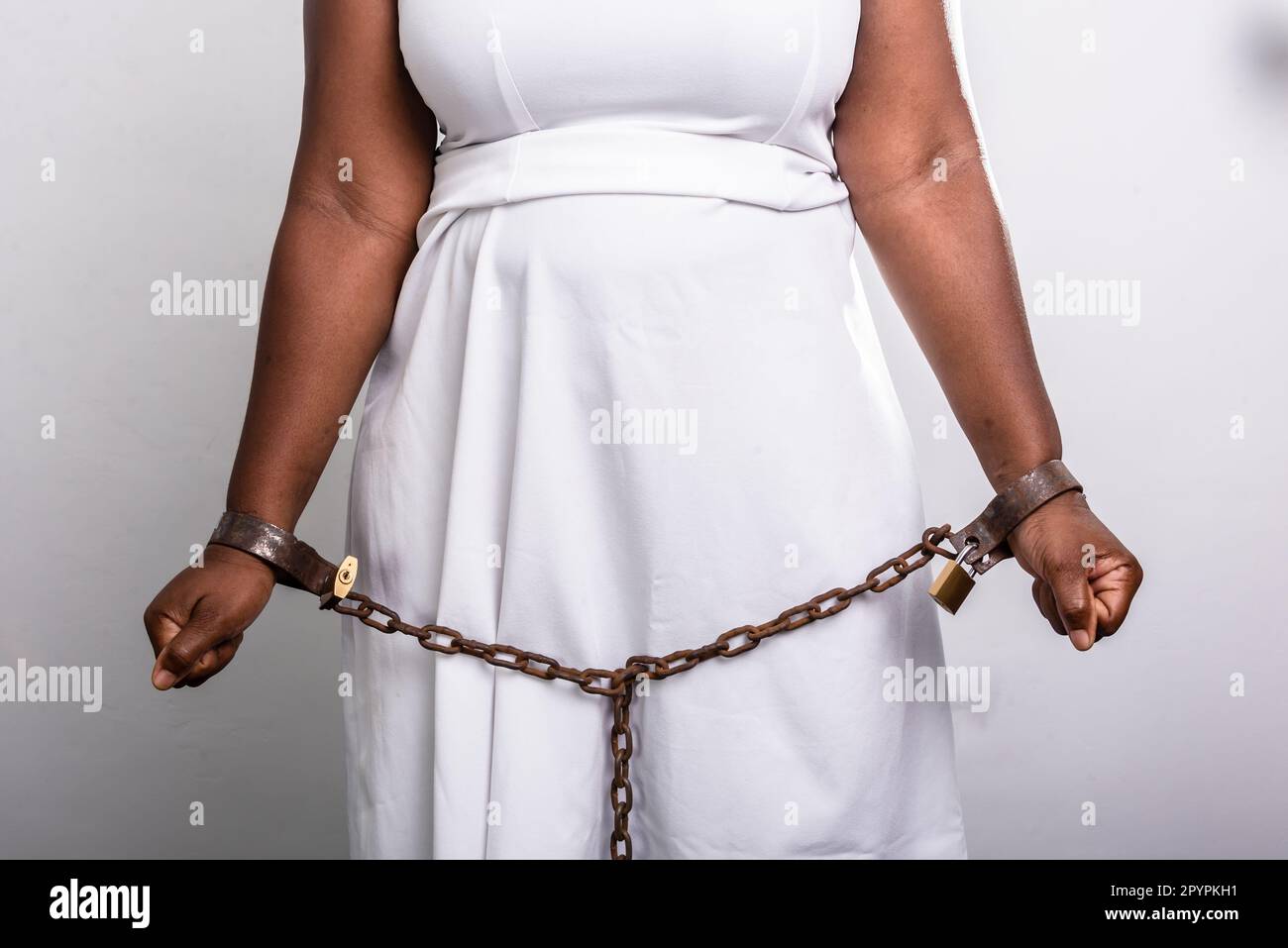 Hands and legs of a black woman chained with old rusty iron chain and padlock. Slave trade prevention concept. Stock Photohttps://www.alamy.com/image-license-details/?v=1https://www.alamy.com/hands-and-legs-of-a-black-woman-chained-with-old-rusty-iron-chain-and-padlock-slave-trade-prevention-concept-image550615437.html
Hands and legs of a black woman chained with old rusty iron chain and padlock. Slave trade prevention concept. Stock Photohttps://www.alamy.com/image-license-details/?v=1https://www.alamy.com/hands-and-legs-of-a-black-woman-chained-with-old-rusty-iron-chain-and-padlock-slave-trade-prevention-concept-image550615437.htmlRF2PYPKH1–Hands and legs of a black woman chained with old rusty iron chain and padlock. Slave trade prevention concept.
 Protesters outside the Libyan embassy calling for the British government to pressure Libya to end the slavery and inhumane treatment of migrants. Dec 9 2017 Stock Photohttps://www.alamy.com/image-license-details/?v=1https://www.alamy.com/stock-image-protesters-outside-the-libyan-embassy-calling-for-the-british-government-168162680.html
Protesters outside the Libyan embassy calling for the British government to pressure Libya to end the slavery and inhumane treatment of migrants. Dec 9 2017 Stock Photohttps://www.alamy.com/image-license-details/?v=1https://www.alamy.com/stock-image-protesters-outside-the-libyan-embassy-calling-for-the-british-government-168162680.htmlRMKNGD60–Protesters outside the Libyan embassy calling for the British government to pressure Libya to end the slavery and inhumane treatment of migrants. Dec 9 2017
 Traders bringing African captives to slave ships on the west coast of Africa 1700s. Hand-colored halftone of an illustration Stock Photohttps://www.alamy.com/image-license-details/?v=1https://www.alamy.com/traders-bringing-african-captives-to-slave-ships-on-the-west-coast-image6907118.html
Traders bringing African captives to slave ships on the west coast of Africa 1700s. Hand-colored halftone of an illustration Stock Photohttps://www.alamy.com/image-license-details/?v=1https://www.alamy.com/traders-bringing-african-captives-to-slave-ships-on-the-west-coast-image6907118.htmlRMA8FDJF–Traders bringing African captives to slave ships on the west coast of Africa 1700s. Hand-colored halftone of an illustration
 Samuel Ajayi Crowther (c1809–1891), former slave who became the first black Anglican Bishop. Crowther was ordained by the Church Missionary Society and in 1864 was consecrated bishop of the Niger territory in Africa. A linguist, with an honorary doctorate of divinity from Oxford University, Crowther worked on Bible translation into more than one African language. Stock Photohttps://www.alamy.com/image-license-details/?v=1https://www.alamy.com/samuel-ajayi-crowther-c18091891-former-slave-who-became-the-first-black-anglican-bishop-crowther-was-ordained-by-the-church-missionary-society-and-in-1864-was-consecrated-bishop-of-the-niger-territory-in-africa-a-linguist-with-an-honorary-doctorate-of-divinity-from-oxford-university-crowther-worked-on-bible-translation-into-more-than-one-african-language-image404664622.html
Samuel Ajayi Crowther (c1809–1891), former slave who became the first black Anglican Bishop. Crowther was ordained by the Church Missionary Society and in 1864 was consecrated bishop of the Niger territory in Africa. A linguist, with an honorary doctorate of divinity from Oxford University, Crowther worked on Bible translation into more than one African language. Stock Photohttps://www.alamy.com/image-license-details/?v=1https://www.alamy.com/samuel-ajayi-crowther-c18091891-former-slave-who-became-the-first-black-anglican-bishop-crowther-was-ordained-by-the-church-missionary-society-and-in-1864-was-consecrated-bishop-of-the-niger-territory-in-africa-a-linguist-with-an-honorary-doctorate-of-divinity-from-oxford-university-crowther-worked-on-bible-translation-into-more-than-one-african-language-image404664622.htmlRM2EEA1RX–Samuel Ajayi Crowther (c1809–1891), former slave who became the first black Anglican Bishop. Crowther was ordained by the Church Missionary Society and in 1864 was consecrated bishop of the Niger territory in Africa. A linguist, with an honorary doctorate of divinity from Oxford University, Crowther worked on Bible translation into more than one African language.
 Portrait of an African, oil on canvas circa 1760painted by Allan Ramsay (1713-1784). Believed to be a portrait of Charles Ignatius Sancho (c. 1729 - 1780) British composer, actor, and writer. He became a symbol of the humanity of Africans and immorality of the slave trade Stock Photohttps://www.alamy.com/image-license-details/?v=1https://www.alamy.com/portrait-of-an-african-oil-on-canvas-circa-1760painted-by-allan-ramsay-1713-1784-believed-to-be-a-portrait-of-charles-ignatius-sancho-c-1729-1780-british-composer-actor-and-writer-he-became-a-symbol-of-the-humanity-of-africans-and-immorality-of-the-slave-trade-image481949777.html
Portrait of an African, oil on canvas circa 1760painted by Allan Ramsay (1713-1784). Believed to be a portrait of Charles Ignatius Sancho (c. 1729 - 1780) British composer, actor, and writer. He became a symbol of the humanity of Africans and immorality of the slave trade Stock Photohttps://www.alamy.com/image-license-details/?v=1https://www.alamy.com/portrait-of-an-african-oil-on-canvas-circa-1760painted-by-allan-ramsay-1713-1784-believed-to-be-a-portrait-of-charles-ignatius-sancho-c-1729-1780-british-composer-actor-and-writer-he-became-a-symbol-of-the-humanity-of-africans-and-immorality-of-the-slave-trade-image481949777.htmlRM2K02KT1–Portrait of an African, oil on canvas circa 1760painted by Allan Ramsay (1713-1784). Believed to be a portrait of Charles Ignatius Sancho (c. 1729 - 1780) British composer, actor, and writer. He became a symbol of the humanity of Africans and immorality of the slave trade
 Slavery, Jamestown Colony, 1619 Stock Photohttps://www.alamy.com/image-license-details/?v=1https://www.alamy.com/slavery-jamestown-colony-1619-image245900986.html
Slavery, Jamestown Colony, 1619 Stock Photohttps://www.alamy.com/image-license-details/?v=1https://www.alamy.com/slavery-jamestown-colony-1619-image245900986.htmlRMT81N62–Slavery, Jamestown Colony, 1619
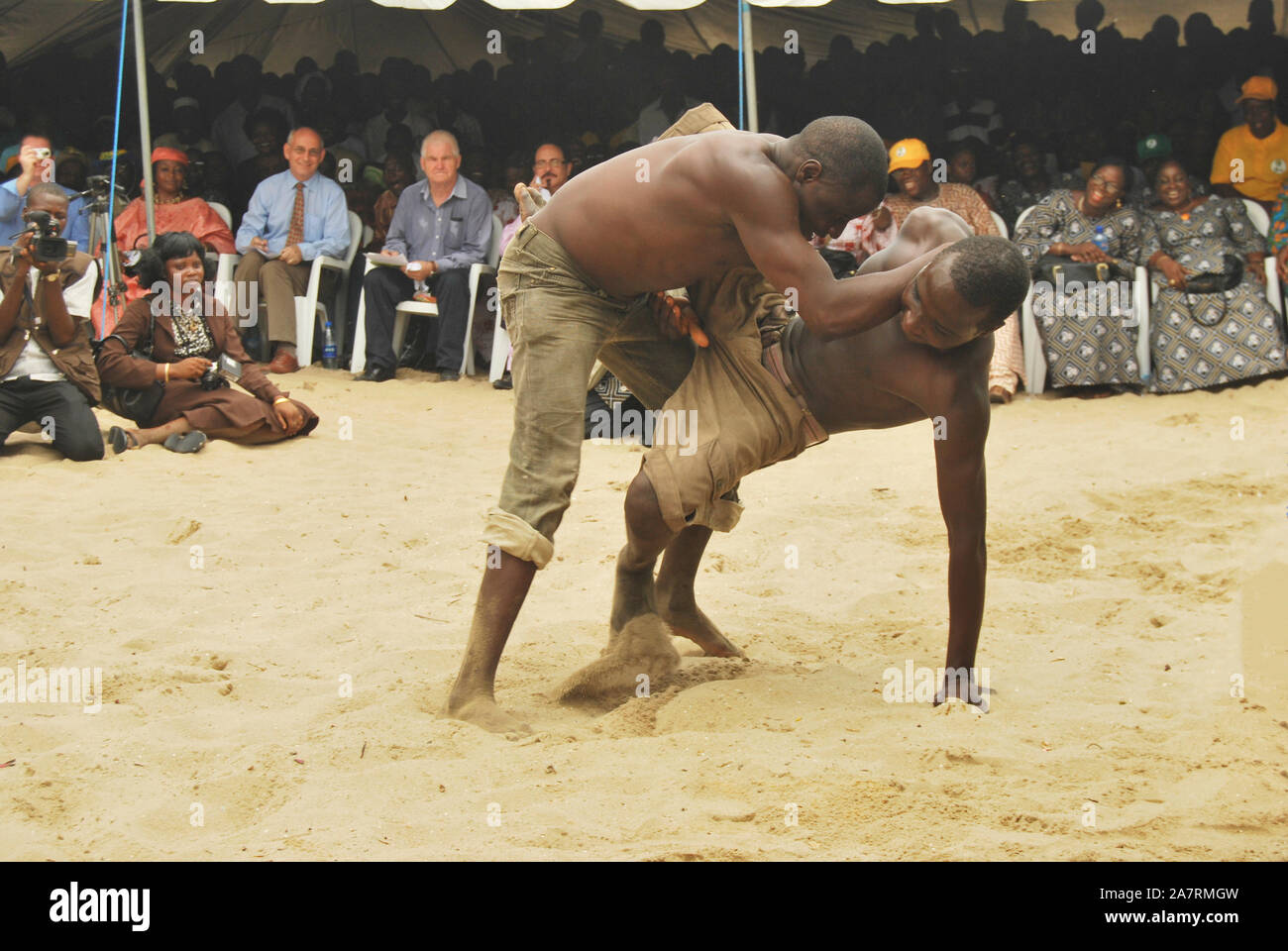 Loca Wrestlers showcasing their youthful energy during the Annual Black Heritage Festival, Badagry Lagos, Nigeria. Stock Photohttps://www.alamy.com/image-license-details/?v=1https://www.alamy.com/loca-wrestlers-showcasing-their-youthful-energy-during-the-annual-black-heritage-festival-badagry-lagos-nigeria-image331820633.html
Loca Wrestlers showcasing their youthful energy during the Annual Black Heritage Festival, Badagry Lagos, Nigeria. Stock Photohttps://www.alamy.com/image-license-details/?v=1https://www.alamy.com/loca-wrestlers-showcasing-their-youthful-energy-during-the-annual-black-heritage-festival-badagry-lagos-nigeria-image331820633.htmlRF2A7RMGW–Loca Wrestlers showcasing their youthful energy during the Annual Black Heritage Festival, Badagry Lagos, Nigeria.
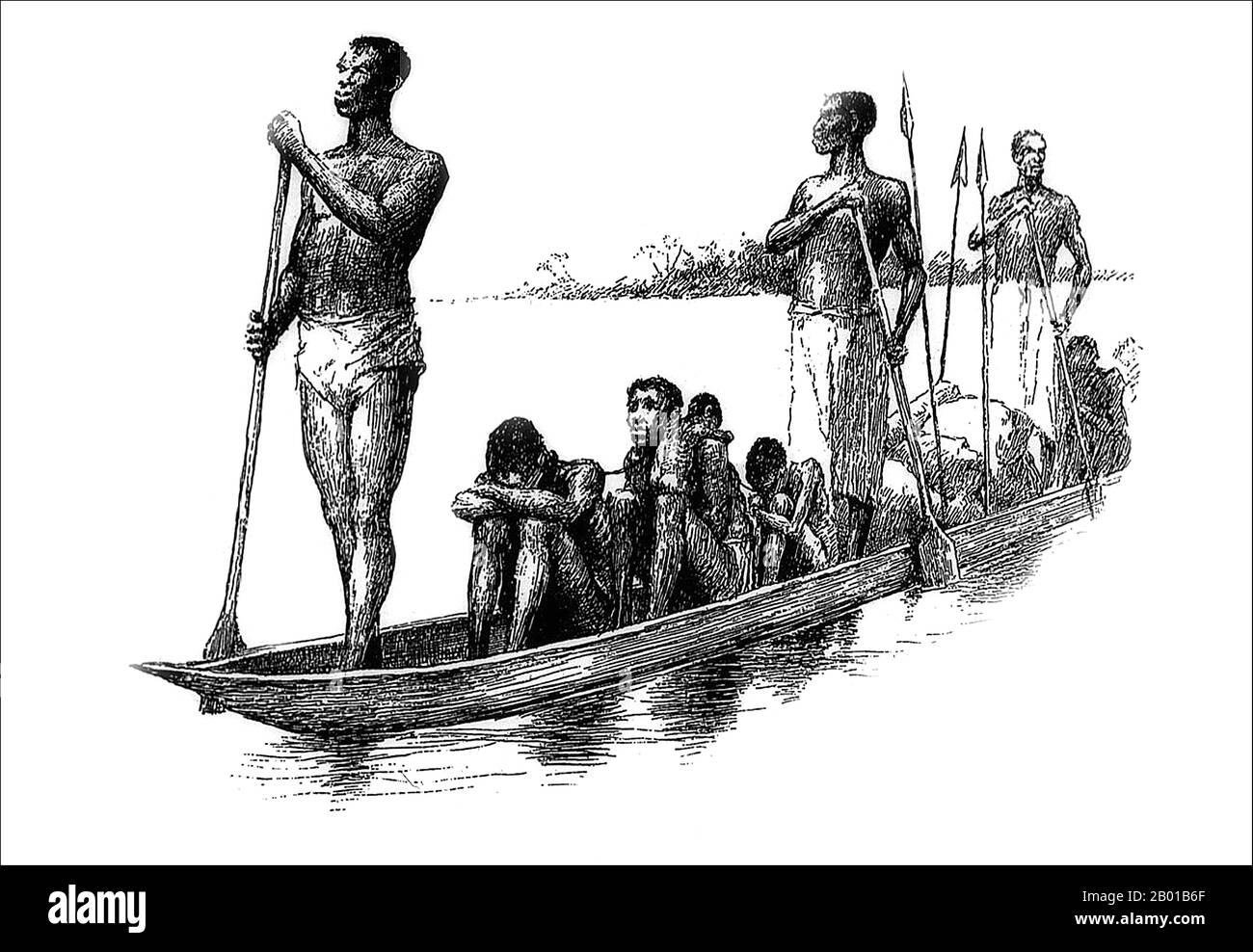 Central Africa: Captured slaves being transported across a river by canoe. Illustration by Edward Winsor Kemble (18 January 1861 - 19 September 1933), 1880s. Black slaves were imported into the Muslim world from Africa by a number of routes northward across the Sahara desert, and by sea into Arabia and the Persian Gulf. Estimates of the number involved vary greatly but it seems that there may easily have been 10 million, perhaps even twice that number. Two-thirds of African slaves were female. The males were considered to be troublesome. Stock Photohttps://www.alamy.com/image-license-details/?v=1https://www.alamy.com/central-africa-captured-slaves-being-transported-across-a-river-by-canoe-illustration-by-edward-winsor-kemble-18-january-1861-19-september-1933-1880s-black-slaves-were-imported-into-the-muslim-world-from-africa-by-a-number-of-routes-northward-across-the-sahara-desert-and-by-sea-into-arabia-and-the-persian-gulf-estimates-of-the-number-involved-vary-greatly-but-it-seems-that-there-may-easily-have-been-10-million-perhaps-even-twice-that-number-two-thirds-of-african-slaves-were-female-the-males-were-considered-to-be-troublesome-image344238119.html
Central Africa: Captured slaves being transported across a river by canoe. Illustration by Edward Winsor Kemble (18 January 1861 - 19 September 1933), 1880s. Black slaves were imported into the Muslim world from Africa by a number of routes northward across the Sahara desert, and by sea into Arabia and the Persian Gulf. Estimates of the number involved vary greatly but it seems that there may easily have been 10 million, perhaps even twice that number. Two-thirds of African slaves were female. The males were considered to be troublesome. Stock Photohttps://www.alamy.com/image-license-details/?v=1https://www.alamy.com/central-africa-captured-slaves-being-transported-across-a-river-by-canoe-illustration-by-edward-winsor-kemble-18-january-1861-19-september-1933-1880s-black-slaves-were-imported-into-the-muslim-world-from-africa-by-a-number-of-routes-northward-across-the-sahara-desert-and-by-sea-into-arabia-and-the-persian-gulf-estimates-of-the-number-involved-vary-greatly-but-it-seems-that-there-may-easily-have-been-10-million-perhaps-even-twice-that-number-two-thirds-of-african-slaves-were-female-the-males-were-considered-to-be-troublesome-image344238119.htmlRM2B01B6F–Central Africa: Captured slaves being transported across a river by canoe. Illustration by Edward Winsor Kemble (18 January 1861 - 19 September 1933), 1880s. Black slaves were imported into the Muslim world from Africa by a number of routes northward across the Sahara desert, and by sea into Arabia and the Persian Gulf. Estimates of the number involved vary greatly but it seems that there may easily have been 10 million, perhaps even twice that number. Two-thirds of African slaves were female. The males were considered to be troublesome.
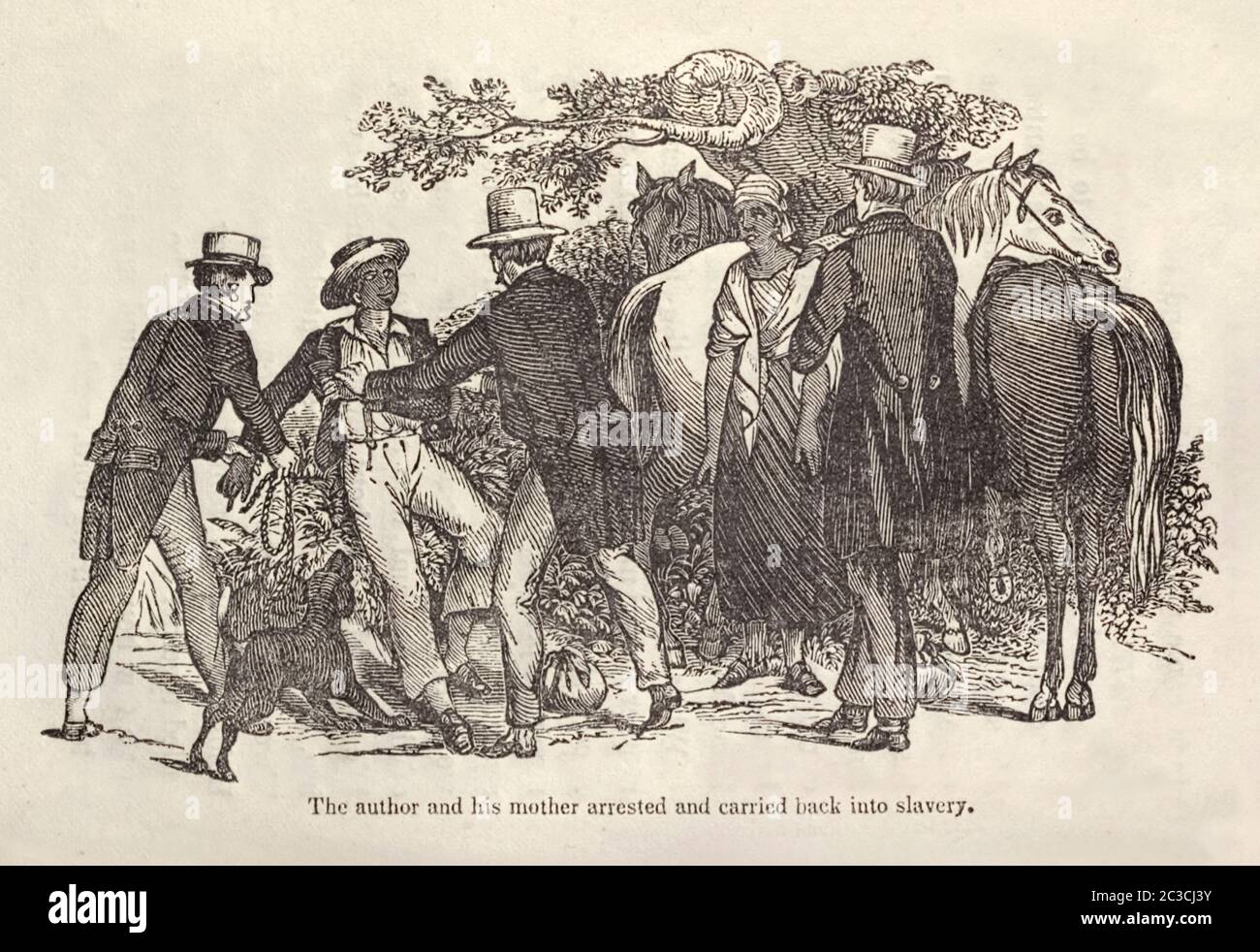 “The author and his mother arrested and carried back into slavery” illustration from ‘The Narrative of William W. Brown, a Fugitive Slave, Written by Himself’ by William Wells Brown (c.1814-1884). First published in 1847 this best selling slave narrative sets out the author’s experience as the son of a white planter and mother of Native American and black ancestry working the steamships out of St Louis, Missouri before escaping in 1834 in the free state of Ohio. Stock Photohttps://www.alamy.com/image-license-details/?v=1https://www.alamy.com/the-author-and-his-mother-arrested-and-carried-back-into-slavery-illustration-from-the-narrative-of-william-w-brown-a-fugitive-slave-written-by-himself-by-william-wells-brown-c1814-1884-first-published-in-1847-this-best-selling-slave-narrative-sets-out-the-authors-experience-as-the-son-of-a-white-planter-and-mother-of-native-american-and-black-ancestry-working-the-steamships-out-of-st-louis-missouri-before-escaping-in-1834-in-the-free-state-of-ohio-image363539343.html
“The author and his mother arrested and carried back into slavery” illustration from ‘The Narrative of William W. Brown, a Fugitive Slave, Written by Himself’ by William Wells Brown (c.1814-1884). First published in 1847 this best selling slave narrative sets out the author’s experience as the son of a white planter and mother of Native American and black ancestry working the steamships out of St Louis, Missouri before escaping in 1834 in the free state of Ohio. Stock Photohttps://www.alamy.com/image-license-details/?v=1https://www.alamy.com/the-author-and-his-mother-arrested-and-carried-back-into-slavery-illustration-from-the-narrative-of-william-w-brown-a-fugitive-slave-written-by-himself-by-william-wells-brown-c1814-1884-first-published-in-1847-this-best-selling-slave-narrative-sets-out-the-authors-experience-as-the-son-of-a-white-planter-and-mother-of-native-american-and-black-ancestry-working-the-steamships-out-of-st-louis-missouri-before-escaping-in-1834-in-the-free-state-of-ohio-image363539343.htmlRM2C3CJ3Y–“The author and his mother arrested and carried back into slavery” illustration from ‘The Narrative of William W. Brown, a Fugitive Slave, Written by Himself’ by William Wells Brown (c.1814-1884). First published in 1847 this best selling slave narrative sets out the author’s experience as the son of a white planter and mother of Native American and black ancestry working the steamships out of St Louis, Missouri before escaping in 1834 in the free state of Ohio.
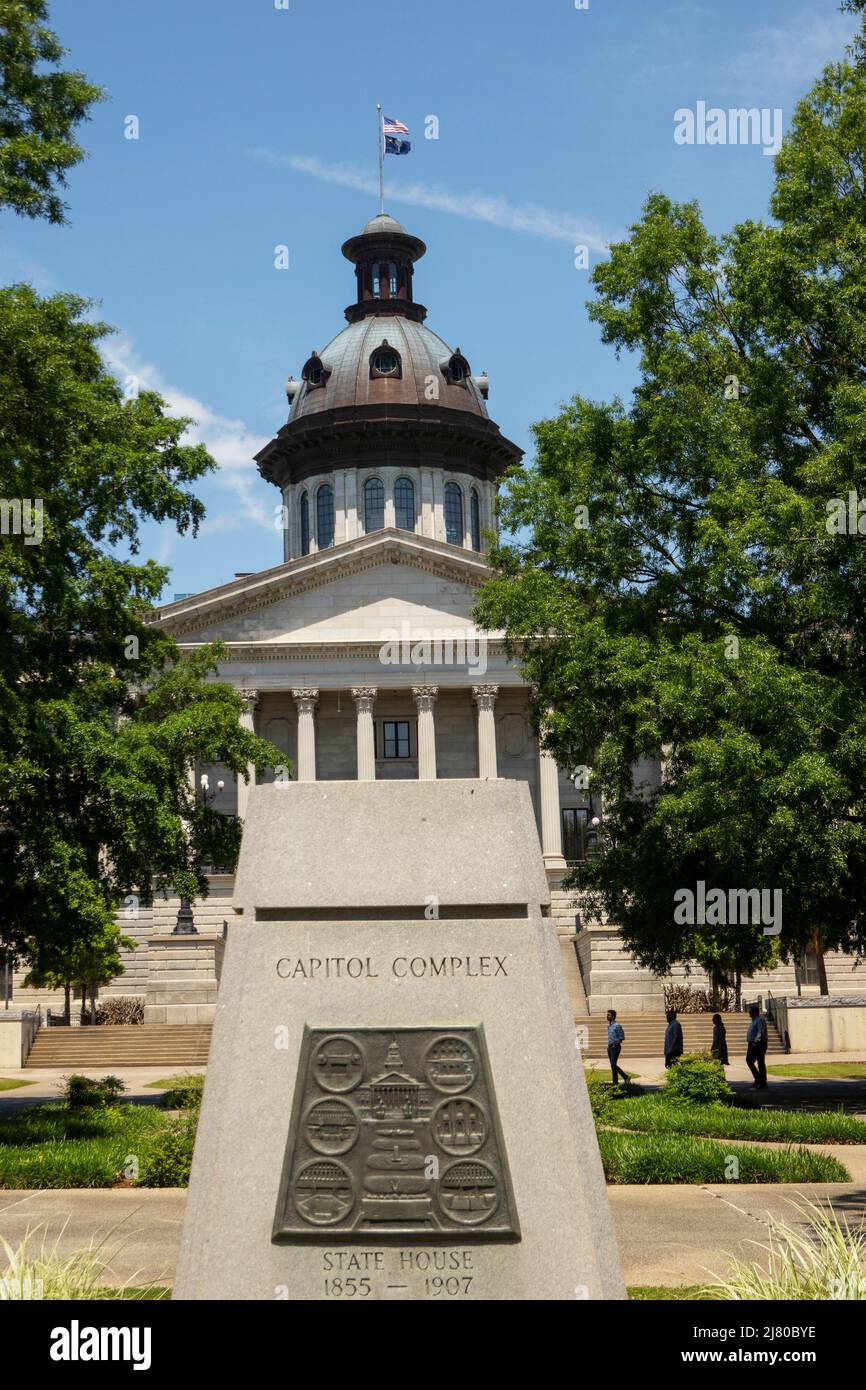 African American History Monument at the South Carolina capital building Columbia SC Stock Photohttps://www.alamy.com/image-license-details/?v=1https://www.alamy.com/african-american-history-monument-at-the-south-carolina-capital-building-columbia-sc-image469606578.html
African American History Monument at the South Carolina capital building Columbia SC Stock Photohttps://www.alamy.com/image-license-details/?v=1https://www.alamy.com/african-american-history-monument-at-the-south-carolina-capital-building-columbia-sc-image469606578.htmlRM2J80BYE–African American History Monument at the South Carolina capital building Columbia SC
 Slave traders, 1826. Artist: Unknown Stock Photohttps://www.alamy.com/image-license-details/?v=1https://www.alamy.com/slave-traders-1826-artist-unknown-image262743089.html
Slave traders, 1826. Artist: Unknown Stock Photohttps://www.alamy.com/image-license-details/?v=1https://www.alamy.com/slave-traders-1826-artist-unknown-image262743089.htmlRMW7CYDN–Slave traders, 1826. Artist: Unknown
 Growth of Bristol's trade came with the rise of England's American colonies in the 17th century. Bristol's location on the west side of Great Britain gave ships an advantage in sailing to and from the New World. The 18th century saw an expansion of England's role in the Atlantic trade in Africans taken for slavery to the Americas. Bristol and with Liverpool became a centre of the Triangular Trade. Manufactured goods were shipped to West Africa and exchanged for African shipped as slaves to the Americas. Then plantation goods such as sugar, tobacco, rum, rice, and cotton were returned. Stock Photohttps://www.alamy.com/image-license-details/?v=1https://www.alamy.com/growth-of-bristols-trade-came-with-the-rise-of-englands-american-colonies-in-the-17th-century-bristols-location-on-the-west-side-of-great-britain-gave-ships-an-advantage-in-sailing-to-and-from-the-new-world-the-18th-century-saw-an-expansion-of-englands-role-in-the-atlantic-trade-in-africans-taken-for-slavery-to-the-americas-bristol-and-with-liverpool-became-a-centre-of-the-triangular-trade-manufactured-goods-were-shipped-to-west-africa-and-exchanged-for-african-shipped-as-slaves-to-the-americas-then-plantation-goods-such-as-sugar-tobacco-rum-rice-and-cotton-were-returned-image226769251.html
Growth of Bristol's trade came with the rise of England's American colonies in the 17th century. Bristol's location on the west side of Great Britain gave ships an advantage in sailing to and from the New World. The 18th century saw an expansion of England's role in the Atlantic trade in Africans taken for slavery to the Americas. Bristol and with Liverpool became a centre of the Triangular Trade. Manufactured goods were shipped to West Africa and exchanged for African shipped as slaves to the Americas. Then plantation goods such as sugar, tobacco, rum, rice, and cotton were returned. Stock Photohttps://www.alamy.com/image-license-details/?v=1https://www.alamy.com/growth-of-bristols-trade-came-with-the-rise-of-englands-american-colonies-in-the-17th-century-bristols-location-on-the-west-side-of-great-britain-gave-ships-an-advantage-in-sailing-to-and-from-the-new-world-the-18th-century-saw-an-expansion-of-englands-role-in-the-atlantic-trade-in-africans-taken-for-slavery-to-the-americas-bristol-and-with-liverpool-became-a-centre-of-the-triangular-trade-manufactured-goods-were-shipped-to-west-africa-and-exchanged-for-african-shipped-as-slaves-to-the-americas-then-plantation-goods-such-as-sugar-tobacco-rum-rice-and-cotton-were-returned-image226769251.htmlRMR4X6DR–Growth of Bristol's trade came with the rise of England's American colonies in the 17th century. Bristol's location on the west side of Great Britain gave ships an advantage in sailing to and from the New World. The 18th century saw an expansion of England's role in the Atlantic trade in Africans taken for slavery to the Americas. Bristol and with Liverpool became a centre of the Triangular Trade. Manufactured goods were shipped to West Africa and exchanged for African shipped as slaves to the Americas. Then plantation goods such as sugar, tobacco, rum, rice, and cotton were returned.
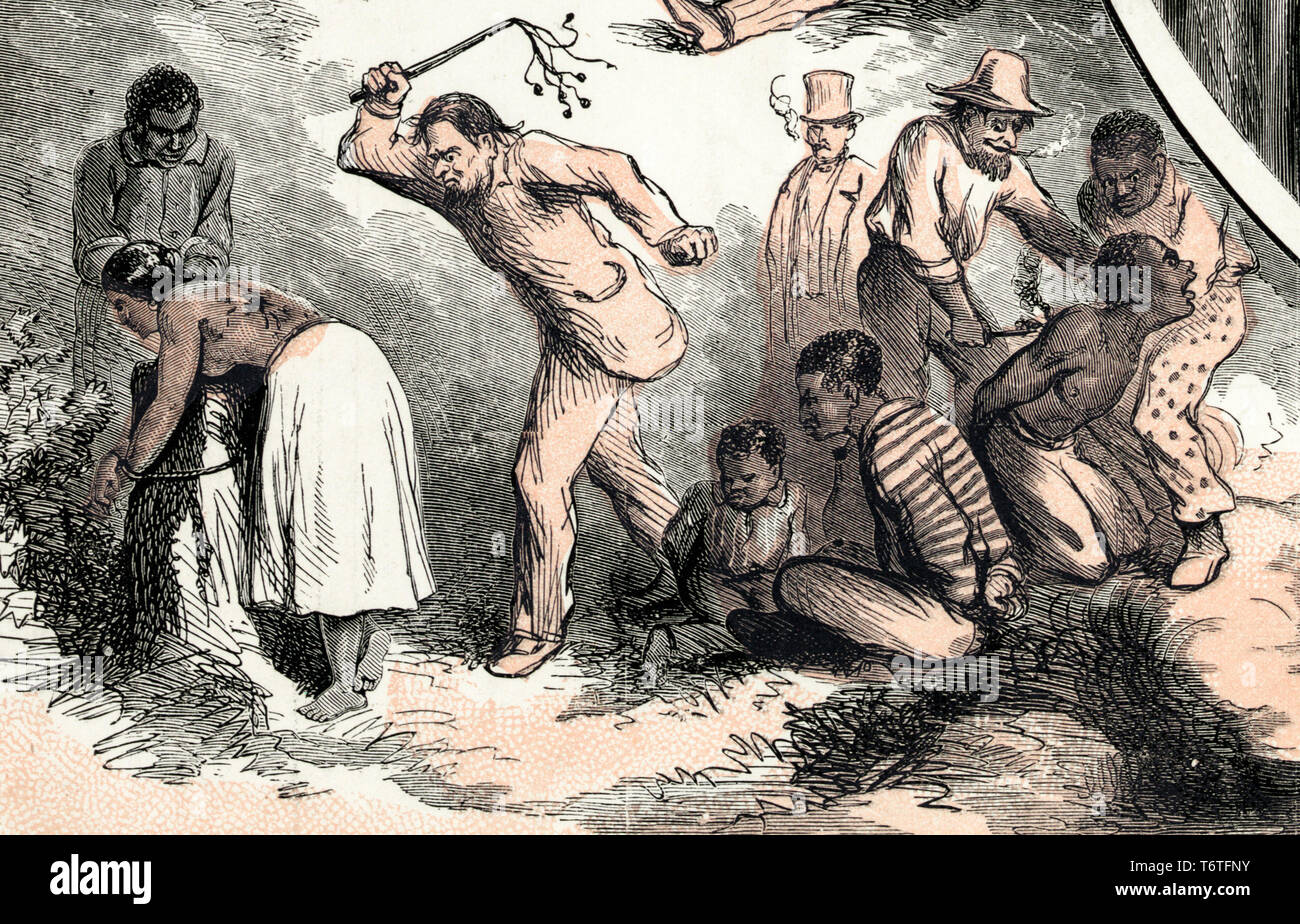 A female slave is whipped and a male slave branded. Detail from the Emancipation, end of the slave trade print by Thomas Nast (artist) & King & Baird (engraver), 1865 Stock Photohttps://www.alamy.com/image-license-details/?v=1https://www.alamy.com/a-female-slave-is-whipped-and-a-male-slave-branded-detail-from-the-emancipation-end-of-the-slave-trade-print-by-thomas-nast-artist-king-baird-engraver-1865-image245172311.html
A female slave is whipped and a male slave branded. Detail from the Emancipation, end of the slave trade print by Thomas Nast (artist) & King & Baird (engraver), 1865 Stock Photohttps://www.alamy.com/image-license-details/?v=1https://www.alamy.com/a-female-slave-is-whipped-and-a-male-slave-branded-detail-from-the-emancipation-end-of-the-slave-trade-print-by-thomas-nast-artist-king-baird-engraver-1865-image245172311.htmlRMT6TFNY–A female slave is whipped and a male slave branded. Detail from the Emancipation, end of the slave trade print by Thomas Nast (artist) & King & Baird (engraver), 1865
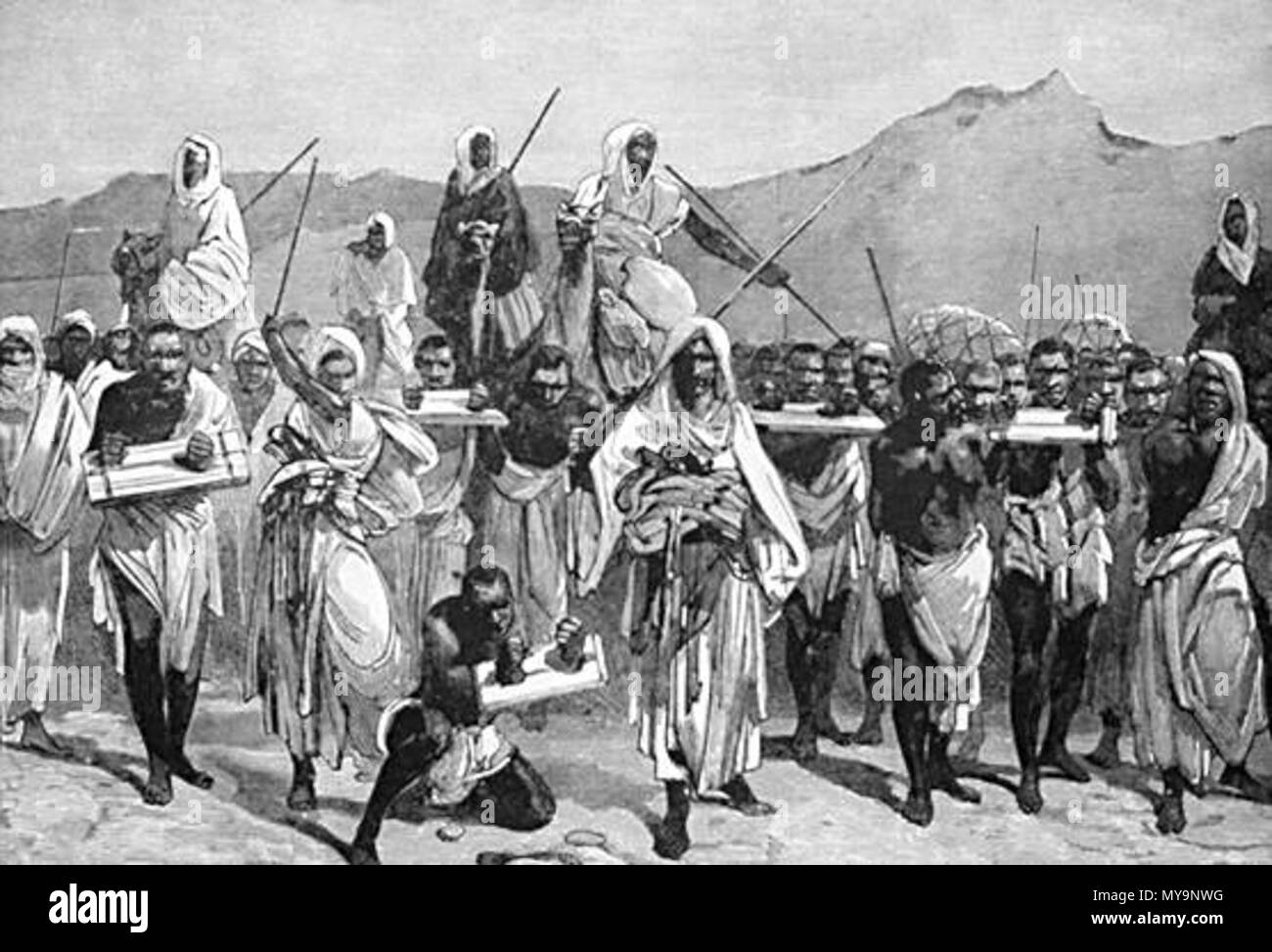 . English: Public domain image more than 100 years since creation, therefore further sourcing not required. Arab Slave Traders. A 19th-century engraving depicting an Arab slave-trading caravan transporting black African slaves across the Sahara. The trans-Saharan slave trade developed in the 7th and 8th centuries as Muslim Arabs conquered most of North Africa. The trade grew significantly from the 10th to the 15th century and peaked in the mid-19th century . 19th-century 18 March 2007 (original upload date). 19th-century engraving Uploaded by DavidYork71 at en.wikipedia 47 Arabslavers Stock Photohttps://www.alamy.com/image-license-details/?v=1https://www.alamy.com/english-public-domain-image-more-than-100-years-since-creation-therefore-further-sourcing-not-required-arab-slave-traders-a-19th-century-engraving-depicting-an-arab-slave-trading-caravan-transporting-black-african-slaves-across-the-sahara-the-trans-saharan-slave-trade-developed-in-the-7th-and-8th-centuries-as-muslim-arabs-conquered-most-of-north-africa-the-trade-grew-significantly-from-the-10th-to-the-15th-century-and-peaked-in-the-mid-19th-century-19th-century-18-march-2007-original-upload-date-19th-century-engraving-uploaded-by-davidyork71-at-enwikipedia-47-arabslavers-image188914140.html
. English: Public domain image more than 100 years since creation, therefore further sourcing not required. Arab Slave Traders. A 19th-century engraving depicting an Arab slave-trading caravan transporting black African slaves across the Sahara. The trans-Saharan slave trade developed in the 7th and 8th centuries as Muslim Arabs conquered most of North Africa. The trade grew significantly from the 10th to the 15th century and peaked in the mid-19th century . 19th-century 18 March 2007 (original upload date). 19th-century engraving Uploaded by DavidYork71 at en.wikipedia 47 Arabslavers Stock Photohttps://www.alamy.com/image-license-details/?v=1https://www.alamy.com/english-public-domain-image-more-than-100-years-since-creation-therefore-further-sourcing-not-required-arab-slave-traders-a-19th-century-engraving-depicting-an-arab-slave-trading-caravan-transporting-black-african-slaves-across-the-sahara-the-trans-saharan-slave-trade-developed-in-the-7th-and-8th-centuries-as-muslim-arabs-conquered-most-of-north-africa-the-trade-grew-significantly-from-the-10th-to-the-15th-century-and-peaked-in-the-mid-19th-century-19th-century-18-march-2007-original-upload-date-19th-century-engraving-uploaded-by-davidyork71-at-enwikipedia-47-arabslavers-image188914140.htmlRMMY9NWG–. English: Public domain image more than 100 years since creation, therefore further sourcing not required. Arab Slave Traders. A 19th-century engraving depicting an Arab slave-trading caravan transporting black African slaves across the Sahara. The trans-Saharan slave trade developed in the 7th and 8th centuries as Muslim Arabs conquered most of North Africa. The trade grew significantly from the 10th to the 15th century and peaked in the mid-19th century . 19th-century 18 March 2007 (original upload date). 19th-century engraving Uploaded by DavidYork71 at en.wikipedia 47 Arabslavers
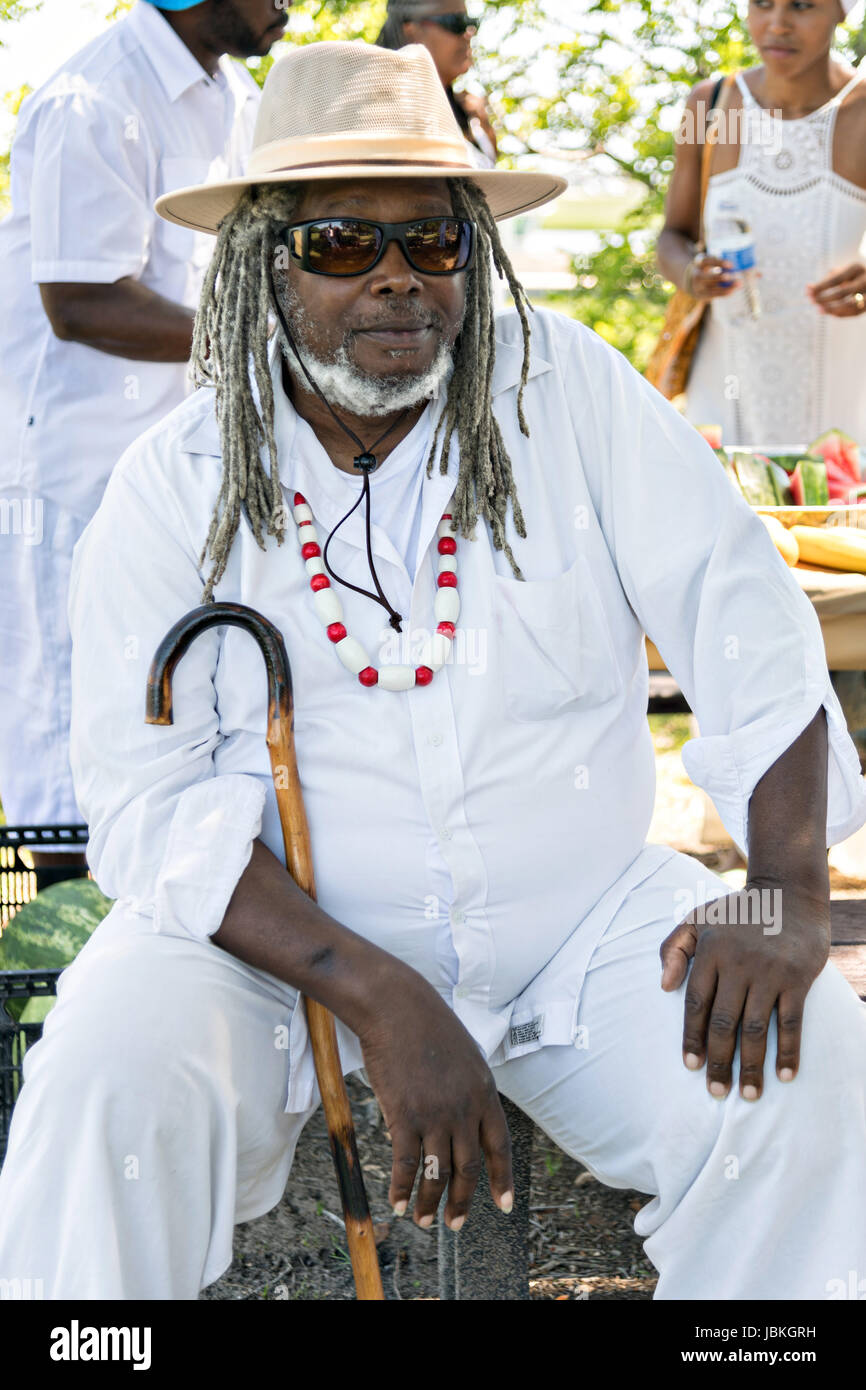 A descendant of enslaved Africans brought to Charleston in the Middle Passage rests during a remembrance ceremony at Fort Moutrie National Monument June 10, 2017 in Sullivan's Island, South Carolina. The Middle Passage refers to the triangular trade in which millions of Africans were shipped to the New World as part of the Atlantic slave trade. An estimated 15% of the Africans died at sea and considerably more in the process of capturing and transporting. The total number of African deaths directly attributable to the Middle Passage voyage is estimated at up to two million African deaths. Stock Photohttps://www.alamy.com/image-license-details/?v=1https://www.alamy.com/stock-photo-a-descendant-of-enslaved-africans-brought-to-charleston-in-the-middle-144874453.html
A descendant of enslaved Africans brought to Charleston in the Middle Passage rests during a remembrance ceremony at Fort Moutrie National Monument June 10, 2017 in Sullivan's Island, South Carolina. The Middle Passage refers to the triangular trade in which millions of Africans were shipped to the New World as part of the Atlantic slave trade. An estimated 15% of the Africans died at sea and considerably more in the process of capturing and transporting. The total number of African deaths directly attributable to the Middle Passage voyage is estimated at up to two million African deaths. Stock Photohttps://www.alamy.com/image-license-details/?v=1https://www.alamy.com/stock-photo-a-descendant-of-enslaved-africans-brought-to-charleston-in-the-middle-144874453.htmlRMJBKGRH–A descendant of enslaved Africans brought to Charleston in the Middle Passage rests during a remembrance ceremony at Fort Moutrie National Monument June 10, 2017 in Sullivan's Island, South Carolina. The Middle Passage refers to the triangular trade in which millions of Africans were shipped to the New World as part of the Atlantic slave trade. An estimated 15% of the Africans died at sea and considerably more in the process of capturing and transporting. The total number of African deaths directly attributable to the Middle Passage voyage is estimated at up to two million African deaths.
 Headstone to an African slave Scipio Africanus, in St Mary's churchyard, Henbury, Bristol, England. Died aged 18 in 1720 Stock Photohttps://www.alamy.com/image-license-details/?v=1https://www.alamy.com/stock-photo-headstone-to-an-african-slave-scipio-africanus-in-st-marys-churchyard-93000936.html
Headstone to an African slave Scipio Africanus, in St Mary's churchyard, Henbury, Bristol, England. Died aged 18 in 1720 Stock Photohttps://www.alamy.com/image-license-details/?v=1https://www.alamy.com/stock-photo-headstone-to-an-african-slave-scipio-africanus-in-st-marys-churchyard-93000936.htmlRMFB8FJ0–Headstone to an African slave Scipio Africanus, in St Mary's churchyard, Henbury, Bristol, England. Died aged 18 in 1720
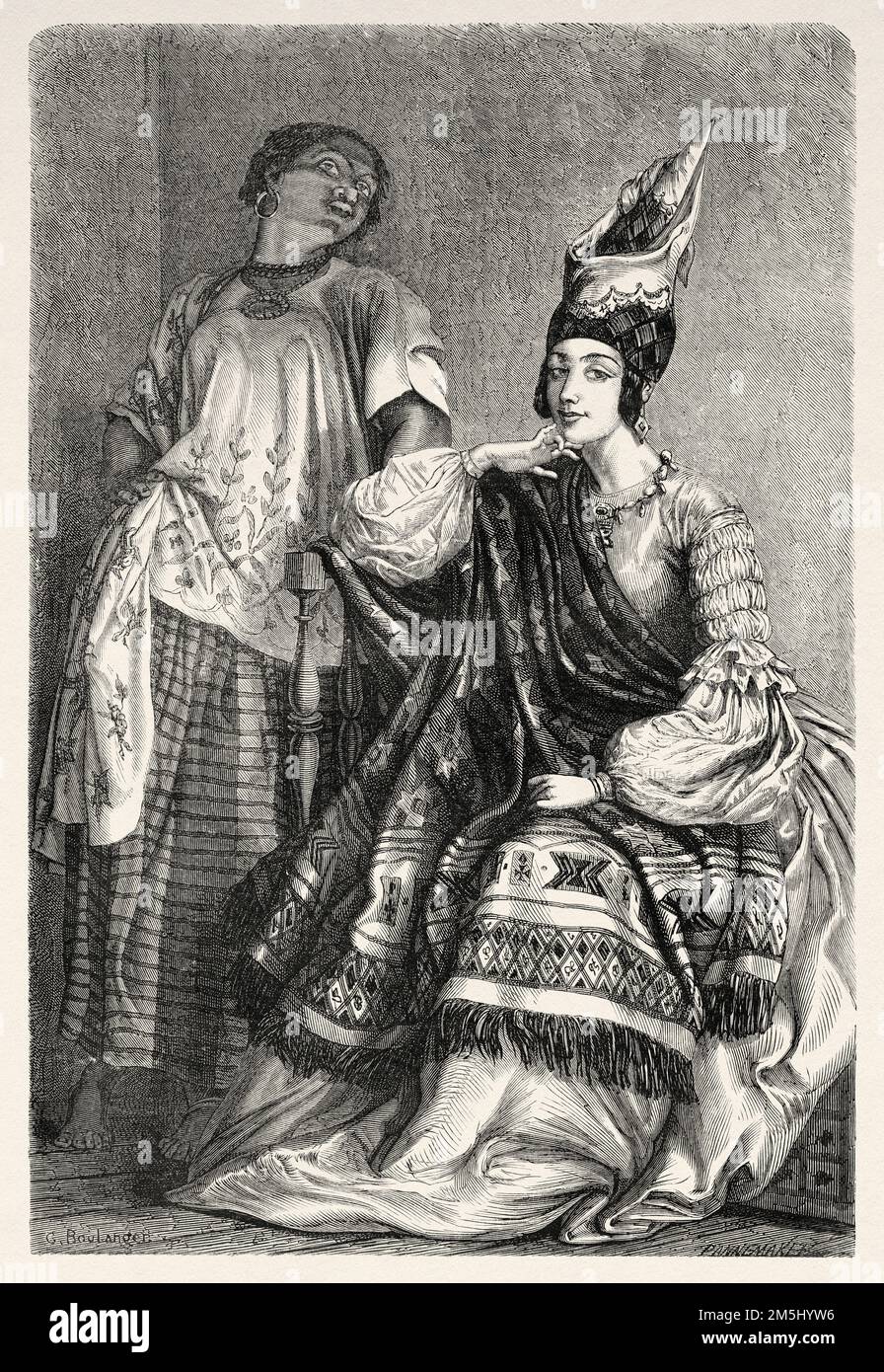 Signare. Female metis trader and her black slave, Senegal. Africa. Travel and expedition to Senegal and bordering countries 1847-1860 Stock Photohttps://www.alamy.com/image-license-details/?v=1https://www.alamy.com/signare-female-metis-trader-and-her-black-slave-senegal-africa-travel-and-expedition-to-senegal-and-bordering-countries-1847-1860-image502569010.html
Signare. Female metis trader and her black slave, Senegal. Africa. Travel and expedition to Senegal and bordering countries 1847-1860 Stock Photohttps://www.alamy.com/image-license-details/?v=1https://www.alamy.com/signare-female-metis-trader-and-her-black-slave-senegal-africa-travel-and-expedition-to-senegal-and-bordering-countries-1847-1860-image502569010.htmlRM2M5HYW6–Signare. Female metis trader and her black slave, Senegal. Africa. Travel and expedition to Senegal and bordering countries 1847-1860
 London, UK. 9th Dec, 2017. National Anti-Slavery March. Hundreds of protesters march from Belgrave Square to the Libyan Embassy in south west London to rally and protest against modern slave auctions of African refugees in Libya. Credit: Guy Corbishley/Alamy Live News Stock Photohttps://www.alamy.com/image-license-details/?v=1https://www.alamy.com/stock-image-london-uk-9th-dec-2017-national-anti-slavery-march-hundreds-of-protesters-167982328.html
London, UK. 9th Dec, 2017. National Anti-Slavery March. Hundreds of protesters march from Belgrave Square to the Libyan Embassy in south west London to rally and protest against modern slave auctions of African refugees in Libya. Credit: Guy Corbishley/Alamy Live News Stock Photohttps://www.alamy.com/image-license-details/?v=1https://www.alamy.com/stock-image-london-uk-9th-dec-2017-national-anti-slavery-march-hundreds-of-protesters-167982328.htmlRMKN874T–London, UK. 9th Dec, 2017. National Anti-Slavery March. Hundreds of protesters march from Belgrave Square to the Libyan Embassy in south west London to rally and protest against modern slave auctions of African refugees in Libya. Credit: Guy Corbishley/Alamy Live News
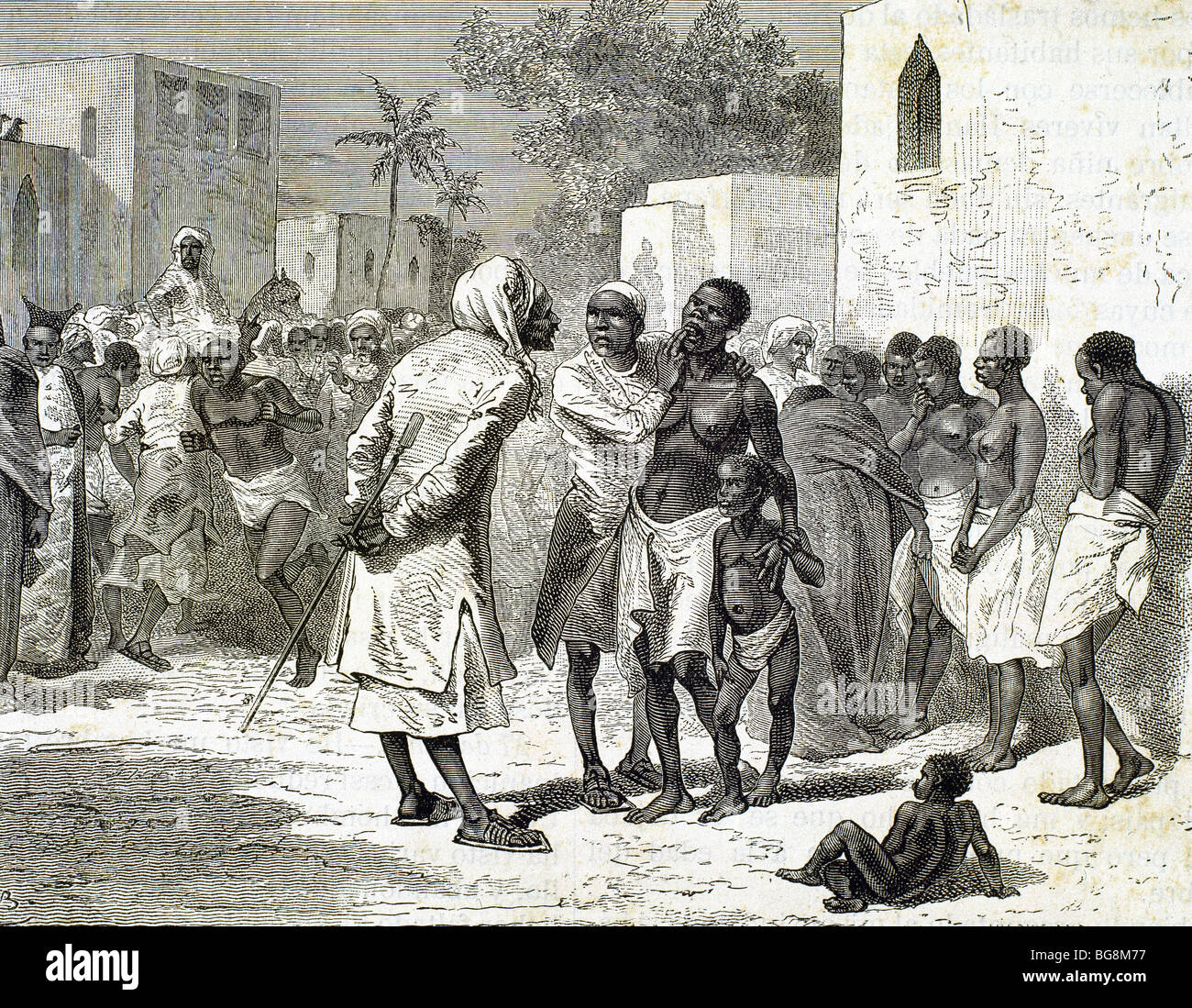 HISTORY OF AFRICA. Slave market in Zanzibar. Engraving by Hildibrand. 1882. Stock Photohttps://www.alamy.com/image-license-details/?v=1https://www.alamy.com/stock-photo-history-of-africa-slave-market-in-zanzibar-engraving-by-hildibrand-27236363.html
HISTORY OF AFRICA. Slave market in Zanzibar. Engraving by Hildibrand. 1882. Stock Photohttps://www.alamy.com/image-license-details/?v=1https://www.alamy.com/stock-photo-history-of-africa-slave-market-in-zanzibar-engraving-by-hildibrand-27236363.htmlRMBG8M77–HISTORY OF AFRICA. Slave market in Zanzibar. Engraving by Hildibrand. 1882.
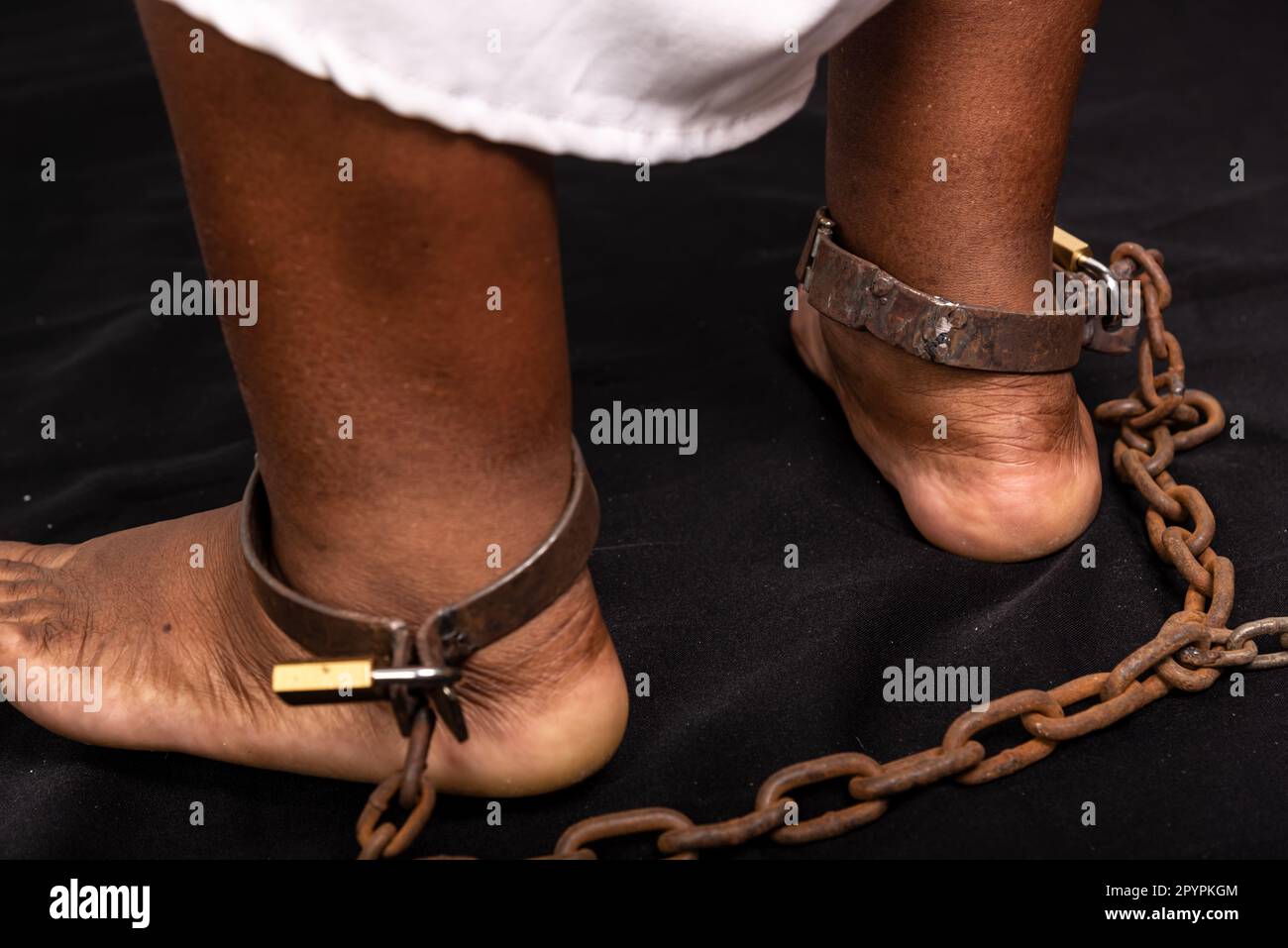 Portrait of woman's legs chained with old rusty metal chain and padlock. Slave trade prevention concept. Stock Photohttps://www.alamy.com/image-license-details/?v=1https://www.alamy.com/portrait-of-womans-legs-chained-with-old-rusty-metal-chain-and-padlock-slave-trade-prevention-concept-image550615428.html
Portrait of woman's legs chained with old rusty metal chain and padlock. Slave trade prevention concept. Stock Photohttps://www.alamy.com/image-license-details/?v=1https://www.alamy.com/portrait-of-womans-legs-chained-with-old-rusty-metal-chain-and-padlock-slave-trade-prevention-concept-image550615428.htmlRF2PYPKGM–Portrait of woman's legs chained with old rusty metal chain and padlock. Slave trade prevention concept.
 Protesters outside the Libyan embassy calling for the British government to pressure Libya to end the slavery and inhumane treatment of migrants. Dec 9 2017 Stock Photohttps://www.alamy.com/image-license-details/?v=1https://www.alamy.com/stock-image-protesters-outside-the-libyan-embassy-calling-for-the-british-government-168167602.html
Protesters outside the Libyan embassy calling for the British government to pressure Libya to end the slavery and inhumane treatment of migrants. Dec 9 2017 Stock Photohttps://www.alamy.com/image-license-details/?v=1https://www.alamy.com/stock-image-protesters-outside-the-libyan-embassy-calling-for-the-british-government-168167602.htmlRMKNGKDP–Protesters outside the Libyan embassy calling for the British government to pressure Libya to end the slavery and inhumane treatment of migrants. Dec 9 2017
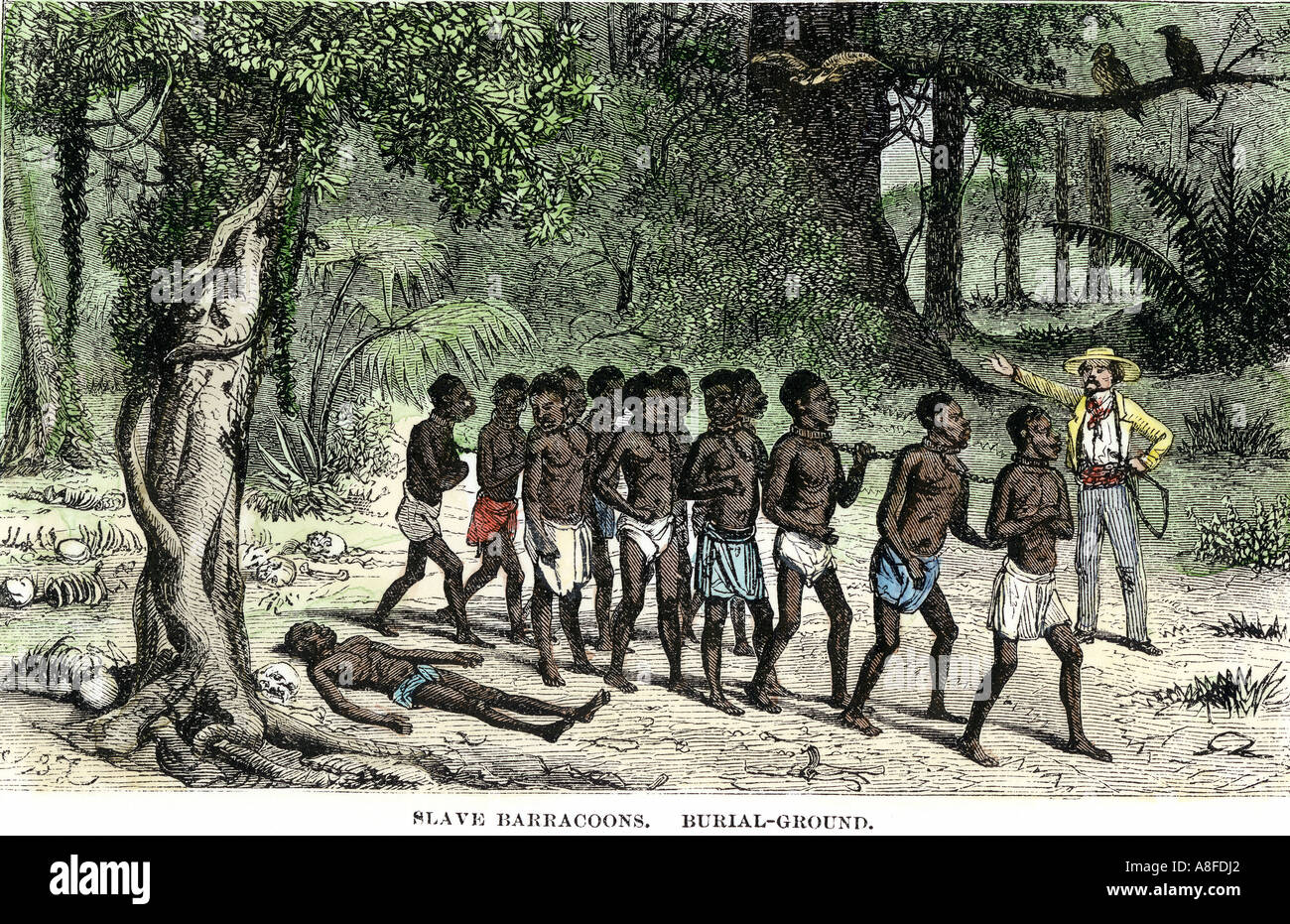 African captives being marched to slave ships through slave burial grounds 1800s. Hand-colored woodcut Stock Photohttps://www.alamy.com/image-license-details/?v=1https://www.alamy.com/african-captives-being-marched-to-slave-ships-through-slave-burial-image6907105.html
African captives being marched to slave ships through slave burial grounds 1800s. Hand-colored woodcut Stock Photohttps://www.alamy.com/image-license-details/?v=1https://www.alamy.com/african-captives-being-marched-to-slave-ships-through-slave-burial-image6907105.htmlRMA8FDJ2–African captives being marched to slave ships through slave burial grounds 1800s. Hand-colored woodcut
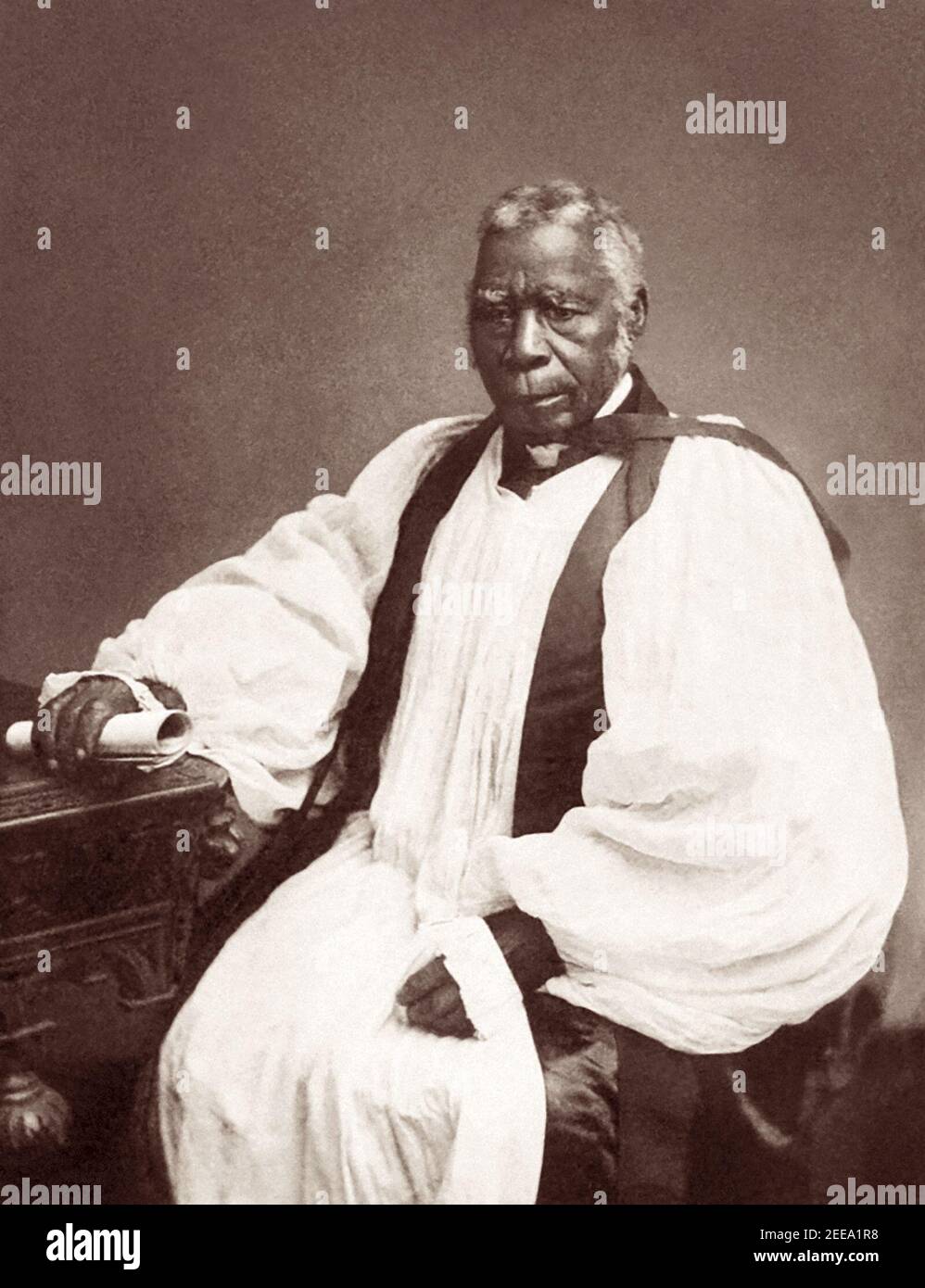 Samuel Ajayi Crowther (c1809–1891), former slave who became the first black Anglican Bishop. Crowther was ordained by the Church Missionary Society and in 1864 was consecrated bishop of the Niger territory in Africa. A linguist, with an honorary doctorate of divinity from Oxford University, Crowther worked on Bible translation into more than one African language. Stock Photohttps://www.alamy.com/image-license-details/?v=1https://www.alamy.com/samuel-ajayi-crowther-c18091891-former-slave-who-became-the-first-black-anglican-bishop-crowther-was-ordained-by-the-church-missionary-society-and-in-1864-was-consecrated-bishop-of-the-niger-territory-in-africa-a-linguist-with-an-honorary-doctorate-of-divinity-from-oxford-university-crowther-worked-on-bible-translation-into-more-than-one-african-language-image404664604.html
Samuel Ajayi Crowther (c1809–1891), former slave who became the first black Anglican Bishop. Crowther was ordained by the Church Missionary Society and in 1864 was consecrated bishop of the Niger territory in Africa. A linguist, with an honorary doctorate of divinity from Oxford University, Crowther worked on Bible translation into more than one African language. Stock Photohttps://www.alamy.com/image-license-details/?v=1https://www.alamy.com/samuel-ajayi-crowther-c18091891-former-slave-who-became-the-first-black-anglican-bishop-crowther-was-ordained-by-the-church-missionary-society-and-in-1864-was-consecrated-bishop-of-the-niger-territory-in-africa-a-linguist-with-an-honorary-doctorate-of-divinity-from-oxford-university-crowther-worked-on-bible-translation-into-more-than-one-african-language-image404664604.htmlRM2EEA1R8–Samuel Ajayi Crowther (c1809–1891), former slave who became the first black Anglican Bishop. Crowther was ordained by the Church Missionary Society and in 1864 was consecrated bishop of the Niger territory in Africa. A linguist, with an honorary doctorate of divinity from Oxford University, Crowther worked on Bible translation into more than one African language.
 Old Plateau Cemetery, a historic slave cemetery, is pictured in Africatown, March 5, 2021, in Mobile, Alabama. Stock Photohttps://www.alamy.com/image-license-details/?v=1https://www.alamy.com/old-plateau-cemetery-a-historic-slave-cemetery-is-pictured-in-africatown-march-5-2021-in-mobile-alabama-image413557186.html
Old Plateau Cemetery, a historic slave cemetery, is pictured in Africatown, March 5, 2021, in Mobile, Alabama. Stock Photohttps://www.alamy.com/image-license-details/?v=1https://www.alamy.com/old-plateau-cemetery-a-historic-slave-cemetery-is-pictured-in-africatown-march-5-2021-in-mobile-alabama-image413557186.htmlRM2F0R4BE–Old Plateau Cemetery, a historic slave cemetery, is pictured in Africatown, March 5, 2021, in Mobile, Alabama.
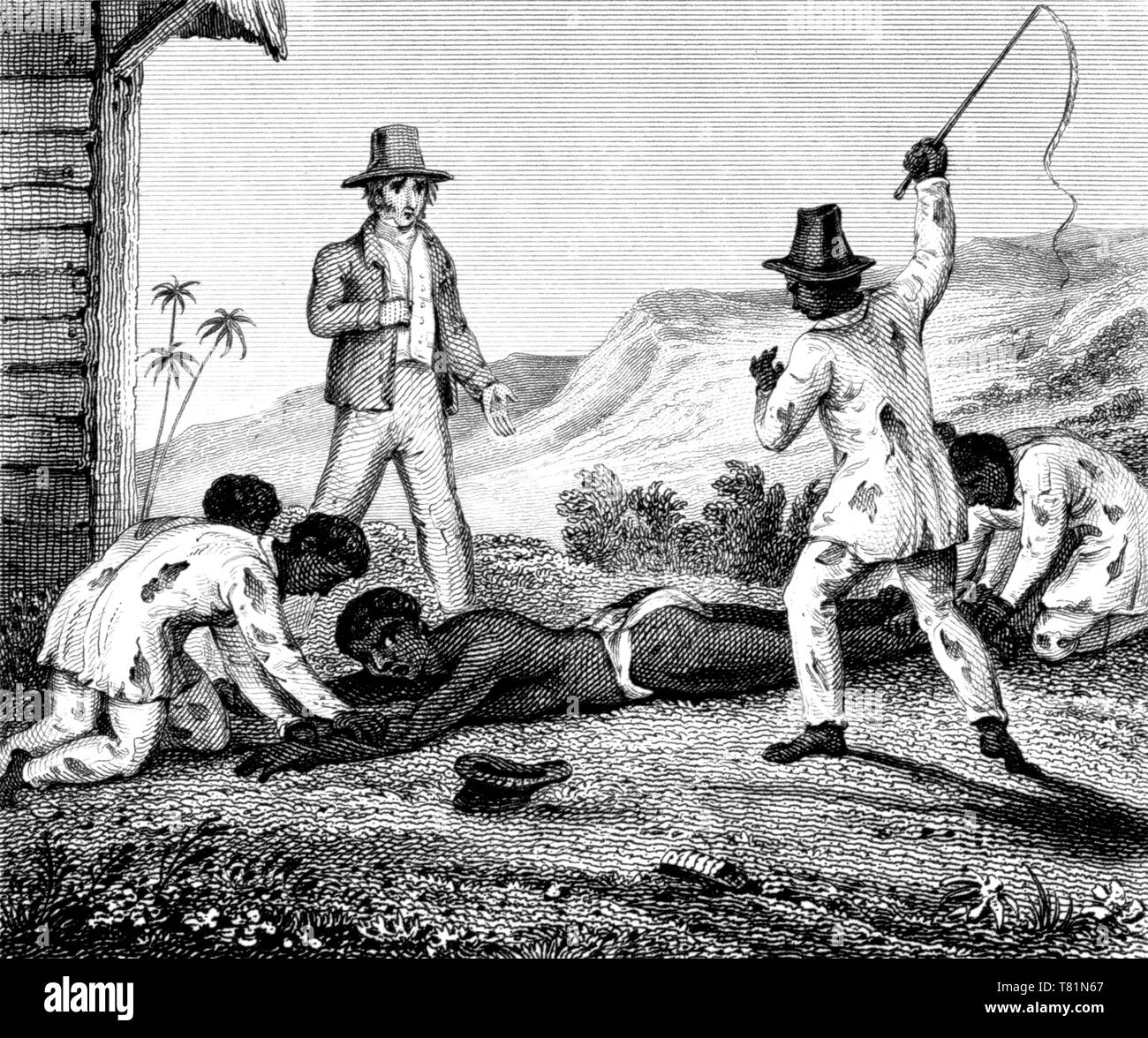 Caribbean Slave Trade, Flogging, 1825 Stock Photohttps://www.alamy.com/image-license-details/?v=1https://www.alamy.com/caribbean-slave-trade-flogging-1825-image245900991.html
Caribbean Slave Trade, Flogging, 1825 Stock Photohttps://www.alamy.com/image-license-details/?v=1https://www.alamy.com/caribbean-slave-trade-flogging-1825-image245900991.htmlRMT81N67–Caribbean Slave Trade, Flogging, 1825
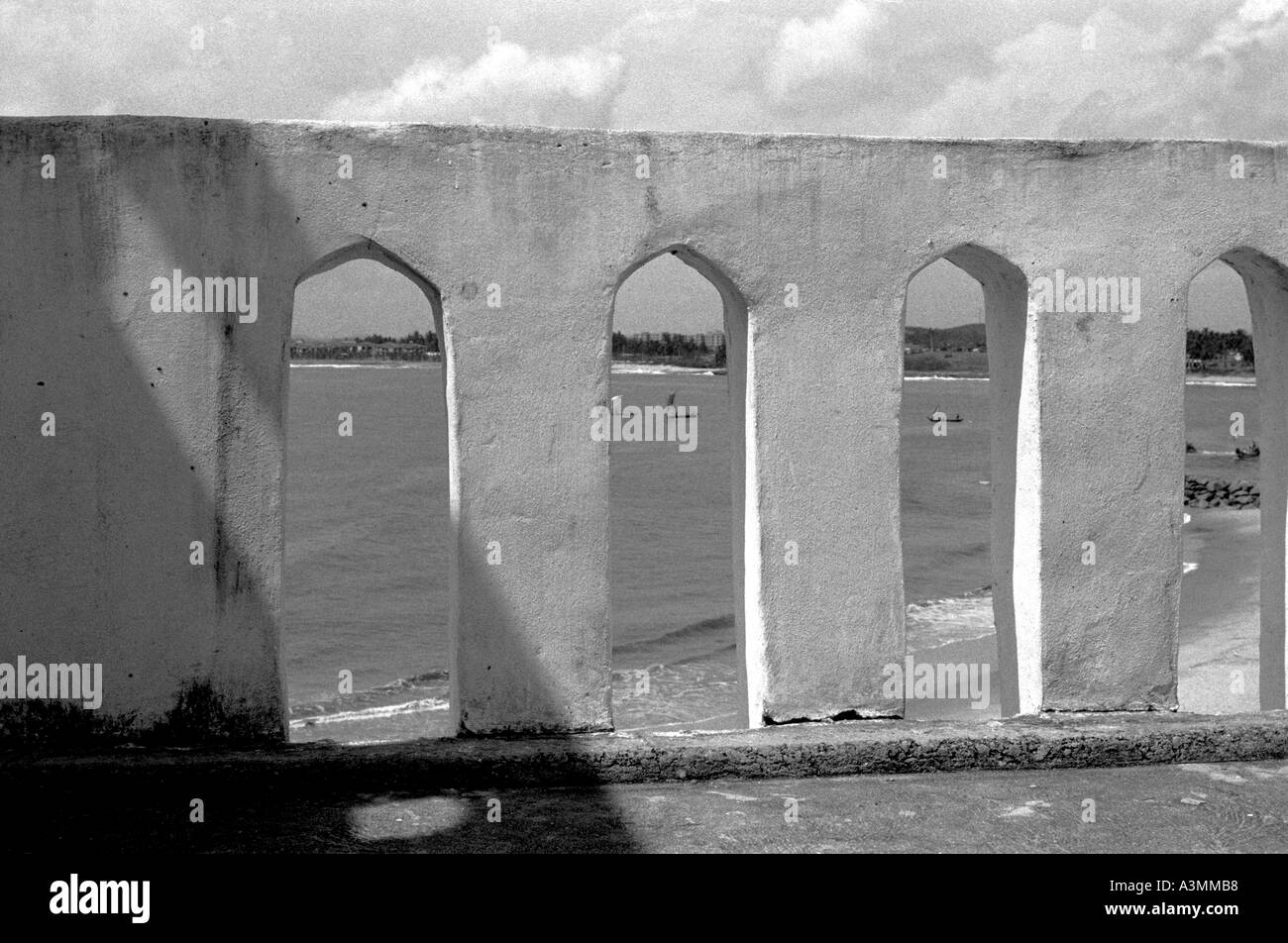 Arches of a slave fort on the Cape Coast of Ghana West Africa Stock Photohttps://www.alamy.com/image-license-details/?v=1https://www.alamy.com/arches-of-a-slave-fort-on-the-cape-coast-of-ghana-west-africa-image3531959.html
Arches of a slave fort on the Cape Coast of Ghana West Africa Stock Photohttps://www.alamy.com/image-license-details/?v=1https://www.alamy.com/arches-of-a-slave-fort-on-the-cape-coast-of-ghana-west-africa-image3531959.htmlRFA3MMB8–Arches of a slave fort on the Cape Coast of Ghana West Africa
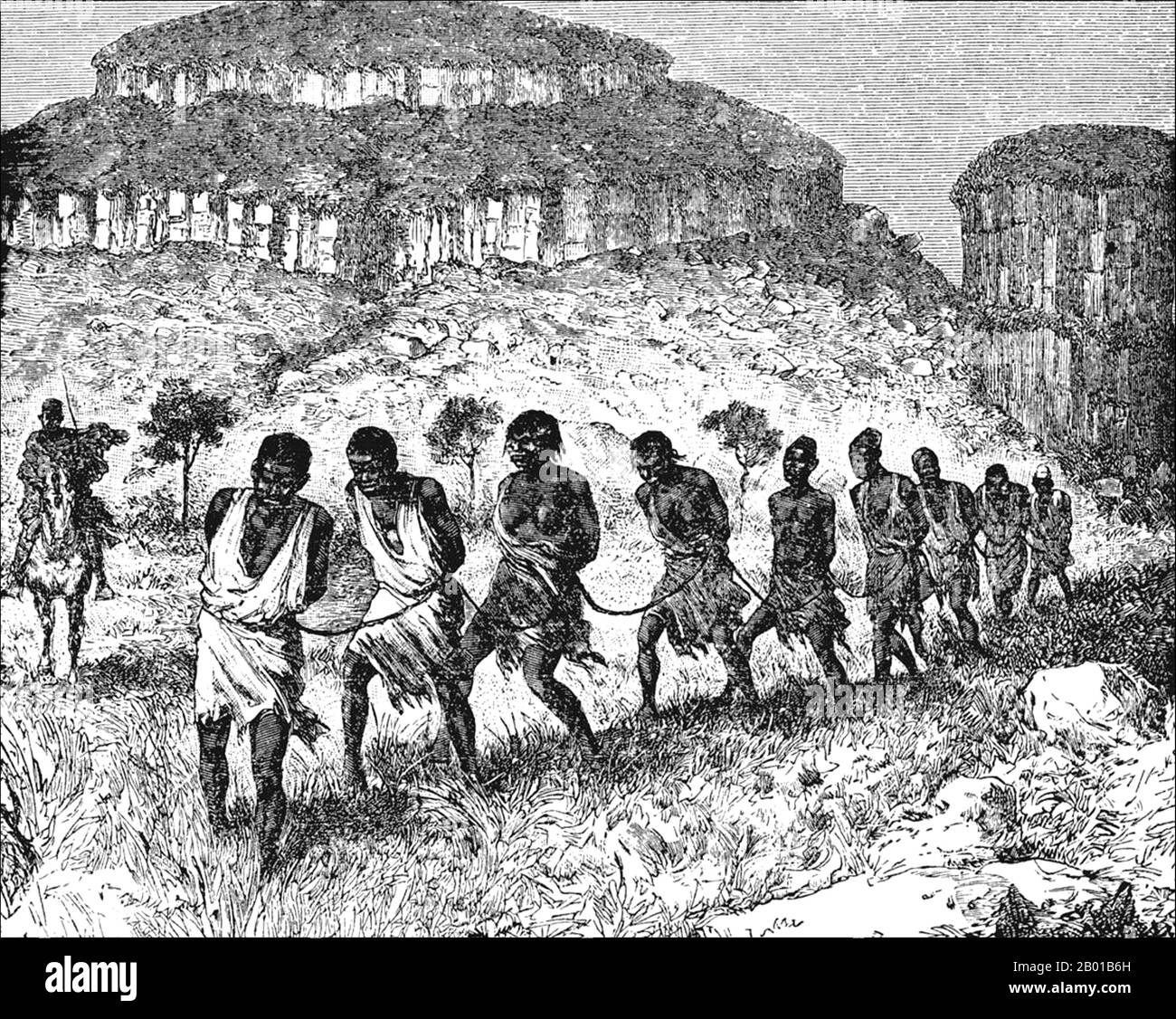 Senegambia/West Africa: 'The Mana-Oulè and Caravan of Slaves'. Illustration by Joseph Simon Gallieni (24 April 1849 - 27 May 1916), 1879. Black slaves were imported into the Muslim world from Africa by a number of routes northward across the Sahara desert, and by sea into Arabia and the Persian Gulf. Estimates of the number involved vary greatly but it seems that there may easily have been 10 million, perhaps even twice that number. Two-thirds of African slaves were female, as male slaves were considered to be troublesome. Stock Photohttps://www.alamy.com/image-license-details/?v=1https://www.alamy.com/senegambiawest-africa-the-mana-oul-and-caravan-of-slaves-illustration-by-joseph-simon-gallieni-24-april-1849-27-may-1916-1879-black-slaves-were-imported-into-the-muslim-world-from-africa-by-a-number-of-routes-northward-across-the-sahara-desert-and-by-sea-into-arabia-and-the-persian-gulf-estimates-of-the-number-involved-vary-greatly-but-it-seems-that-there-may-easily-have-been-10-million-perhaps-even-twice-that-number-two-thirds-of-african-slaves-were-female-as-male-slaves-were-considered-to-be-troublesome-image344238121.html
Senegambia/West Africa: 'The Mana-Oulè and Caravan of Slaves'. Illustration by Joseph Simon Gallieni (24 April 1849 - 27 May 1916), 1879. Black slaves were imported into the Muslim world from Africa by a number of routes northward across the Sahara desert, and by sea into Arabia and the Persian Gulf. Estimates of the number involved vary greatly but it seems that there may easily have been 10 million, perhaps even twice that number. Two-thirds of African slaves were female, as male slaves were considered to be troublesome. Stock Photohttps://www.alamy.com/image-license-details/?v=1https://www.alamy.com/senegambiawest-africa-the-mana-oul-and-caravan-of-slaves-illustration-by-joseph-simon-gallieni-24-april-1849-27-may-1916-1879-black-slaves-were-imported-into-the-muslim-world-from-africa-by-a-number-of-routes-northward-across-the-sahara-desert-and-by-sea-into-arabia-and-the-persian-gulf-estimates-of-the-number-involved-vary-greatly-but-it-seems-that-there-may-easily-have-been-10-million-perhaps-even-twice-that-number-two-thirds-of-african-slaves-were-female-as-male-slaves-were-considered-to-be-troublesome-image344238121.htmlRM2B01B6H–Senegambia/West Africa: 'The Mana-Oulè and Caravan of Slaves'. Illustration by Joseph Simon Gallieni (24 April 1849 - 27 May 1916), 1879. Black slaves were imported into the Muslim world from Africa by a number of routes northward across the Sahara desert, and by sea into Arabia and the Persian Gulf. Estimates of the number involved vary greatly but it seems that there may easily have been 10 million, perhaps even twice that number. Two-thirds of African slaves were female, as male slaves were considered to be troublesome.
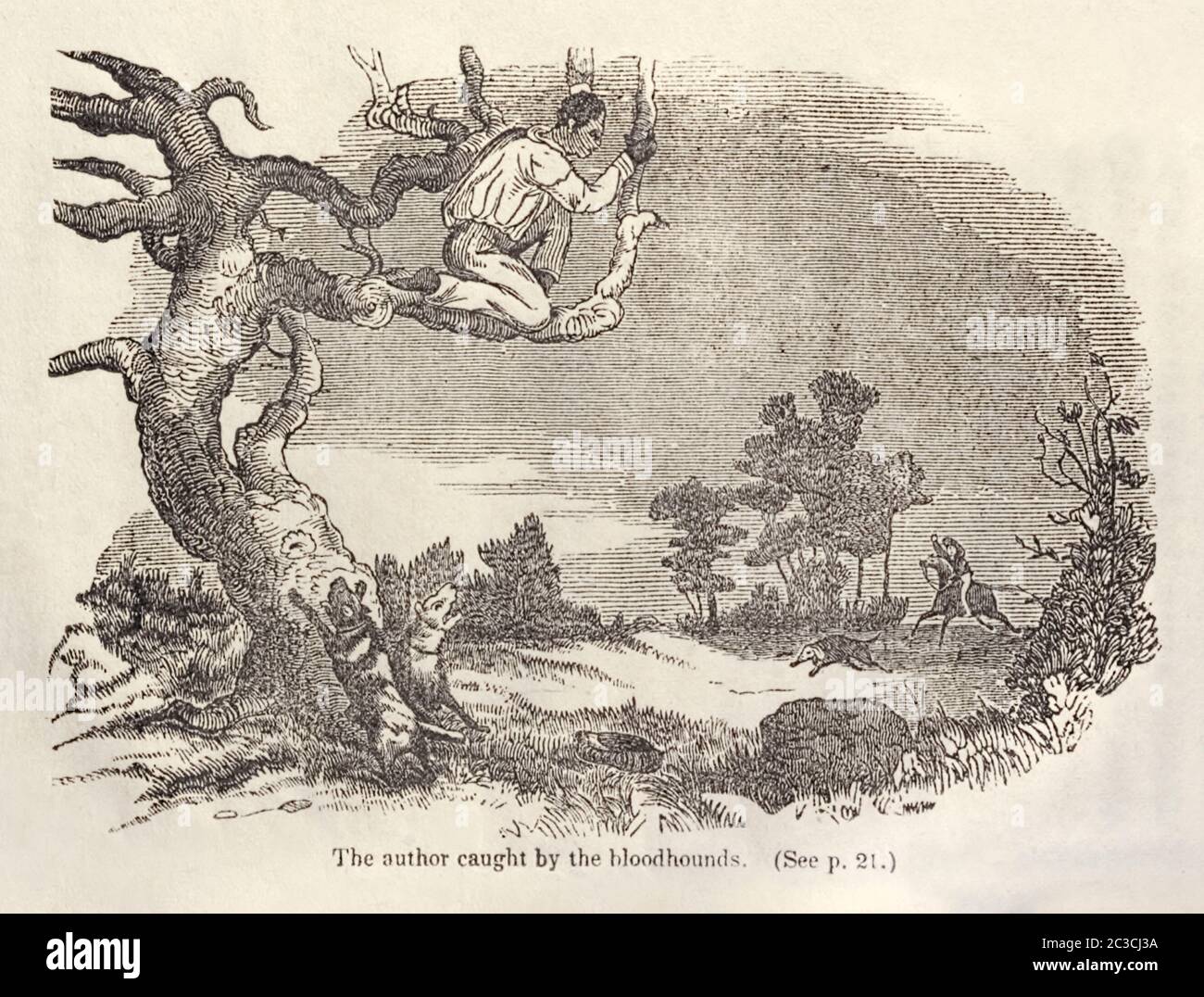 “The author caught by the bloodhounds” frontispiece illustration from ‘The Narrative of William W. Brown, a Fugitive Slave, Written by Himself’ by William Wells Brown (c.1814-1884). First published in 1847 this best selling slave narrative sets out the author’s experience as the son of a white planter and mother of Native American and black ancestry working the steamships out of St Louis, Missouri before escaping in 1834 in the free state of Ohio. Stock Photohttps://www.alamy.com/image-license-details/?v=1https://www.alamy.com/the-author-caught-by-the-bloodhounds-frontispiece-illustration-from-the-narrative-of-william-w-brown-a-fugitive-slave-written-by-himself-by-william-wells-brown-c1814-1884-first-published-in-1847-this-best-selling-slave-narrative-sets-out-the-authors-experience-as-the-son-of-a-white-planter-and-mother-of-native-american-and-black-ancestry-working-the-steamships-out-of-st-louis-missouri-before-escaping-in-1834-in-the-free-state-of-ohio-image363539326.html
“The author caught by the bloodhounds” frontispiece illustration from ‘The Narrative of William W. Brown, a Fugitive Slave, Written by Himself’ by William Wells Brown (c.1814-1884). First published in 1847 this best selling slave narrative sets out the author’s experience as the son of a white planter and mother of Native American and black ancestry working the steamships out of St Louis, Missouri before escaping in 1834 in the free state of Ohio. Stock Photohttps://www.alamy.com/image-license-details/?v=1https://www.alamy.com/the-author-caught-by-the-bloodhounds-frontispiece-illustration-from-the-narrative-of-william-w-brown-a-fugitive-slave-written-by-himself-by-william-wells-brown-c1814-1884-first-published-in-1847-this-best-selling-slave-narrative-sets-out-the-authors-experience-as-the-son-of-a-white-planter-and-mother-of-native-american-and-black-ancestry-working-the-steamships-out-of-st-louis-missouri-before-escaping-in-1834-in-the-free-state-of-ohio-image363539326.htmlRM2C3CJ3A–“The author caught by the bloodhounds” frontispiece illustration from ‘The Narrative of William W. Brown, a Fugitive Slave, Written by Himself’ by William Wells Brown (c.1814-1884). First published in 1847 this best selling slave narrative sets out the author’s experience as the son of a white planter and mother of Native American and black ancestry working the steamships out of St Louis, Missouri before escaping in 1834 in the free state of Ohio.
 Maryland State house in Annapolis MD Stock Photohttps://www.alamy.com/image-license-details/?v=1https://www.alamy.com/maryland-state-house-in-annapolis-md-image534480342.html
Maryland State house in Annapolis MD Stock Photohttps://www.alamy.com/image-license-details/?v=1https://www.alamy.com/maryland-state-house-in-annapolis-md-image534480342.htmlRM2P1FK3J–Maryland State house in Annapolis MD
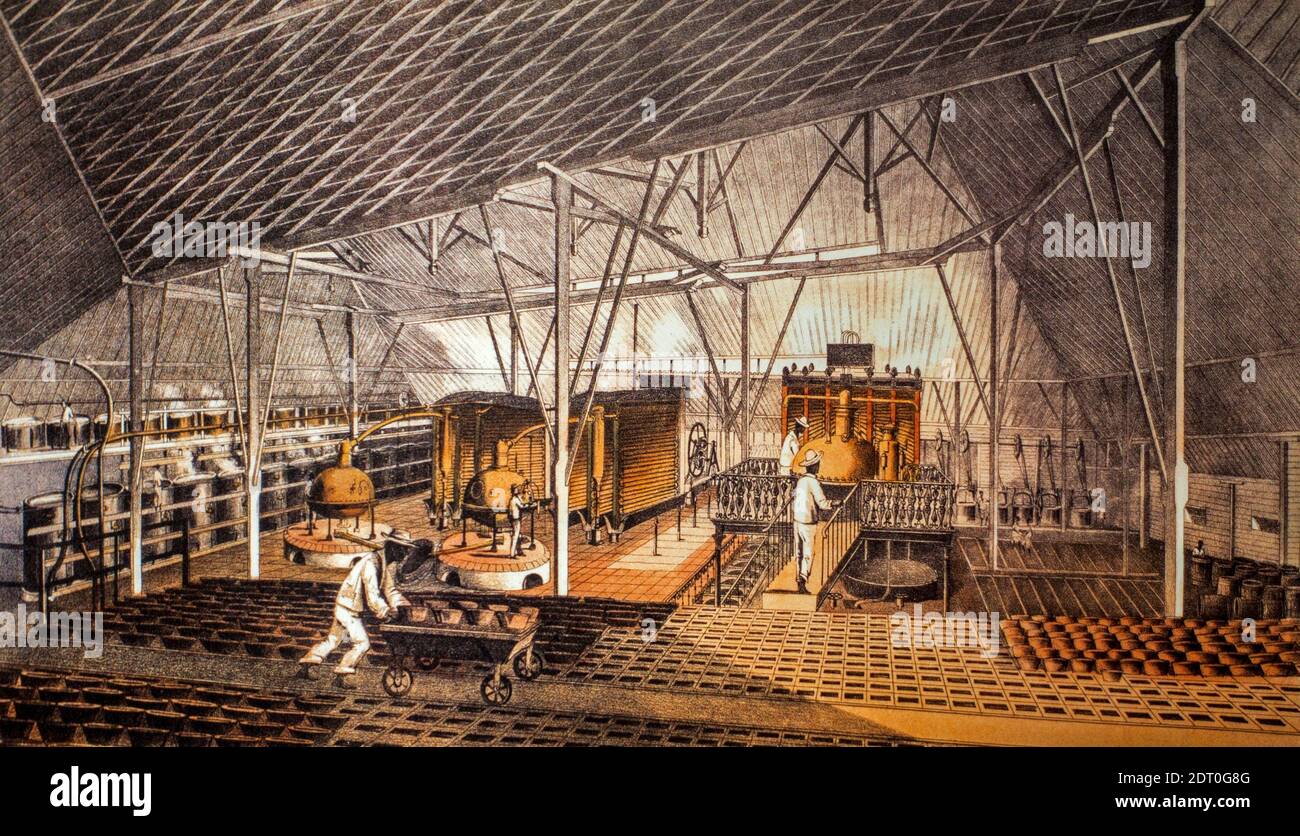 1856 lithograph showing African slaves and Chinese wage-laborers working in the La Ponina sugar factory near Cardenas, Cuba Stock Photohttps://www.alamy.com/image-license-details/?v=1https://www.alamy.com/1856-lithograph-showing-african-slaves-and-chinese-wage-laborers-working-in-the-la-ponina-sugar-factory-near-cardenas-cuba-image393392624.html
1856 lithograph showing African slaves and Chinese wage-laborers working in the La Ponina sugar factory near Cardenas, Cuba Stock Photohttps://www.alamy.com/image-license-details/?v=1https://www.alamy.com/1856-lithograph-showing-african-slaves-and-chinese-wage-laborers-working-in-the-la-ponina-sugar-factory-near-cardenas-cuba-image393392624.htmlRM2DT0G8G–1856 lithograph showing African slaves and Chinese wage-laborers working in the La Ponina sugar factory near Cardenas, Cuba
 Atilogwu Dancers performing at the Annual Black Heritage Festival, Badagry Lagos, Nigeria. Stock Photohttps://www.alamy.com/image-license-details/?v=1https://www.alamy.com/atilogwu-dancers-performing-at-the-annual-black-heritage-festival-badagry-lagos-nigeria-image331820616.html
Atilogwu Dancers performing at the Annual Black Heritage Festival, Badagry Lagos, Nigeria. Stock Photohttps://www.alamy.com/image-license-details/?v=1https://www.alamy.com/atilogwu-dancers-performing-at-the-annual-black-heritage-festival-badagry-lagos-nigeria-image331820616.htmlRF2A7RMG8–Atilogwu Dancers performing at the Annual Black Heritage Festival, Badagry Lagos, Nigeria.
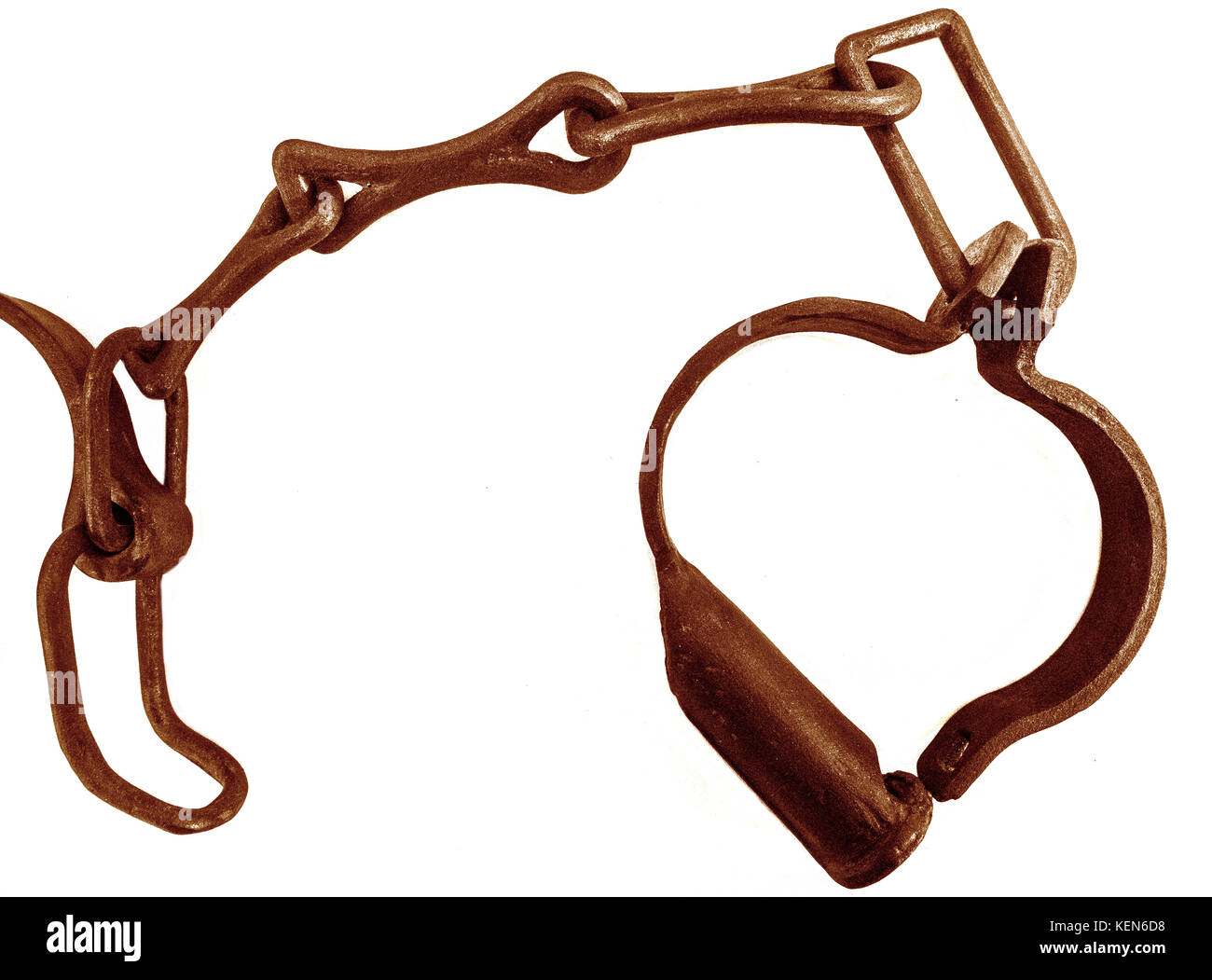 LEG IRONS SLAVE SHIP SLAVERY TRADE 19th Century leg irons shackles shamefully used to shackle captured indigenous Africans from African Continent countries Africa Slave Trade Stock Photohttps://www.alamy.com/image-license-details/?v=1https://www.alamy.com/stock-image-leg-irons-slave-ship-slavery-trade-19th-century-leg-irons-shackles-163964564.html
LEG IRONS SLAVE SHIP SLAVERY TRADE 19th Century leg irons shackles shamefully used to shackle captured indigenous Africans from African Continent countries Africa Slave Trade Stock Photohttps://www.alamy.com/image-license-details/?v=1https://www.alamy.com/stock-image-leg-irons-slave-ship-slavery-trade-19th-century-leg-irons-shackles-163964564.htmlRMKEN6D8–LEG IRONS SLAVE SHIP SLAVERY TRADE 19th Century leg irons shackles shamefully used to shackle captured indigenous Africans from African Continent countries Africa Slave Trade
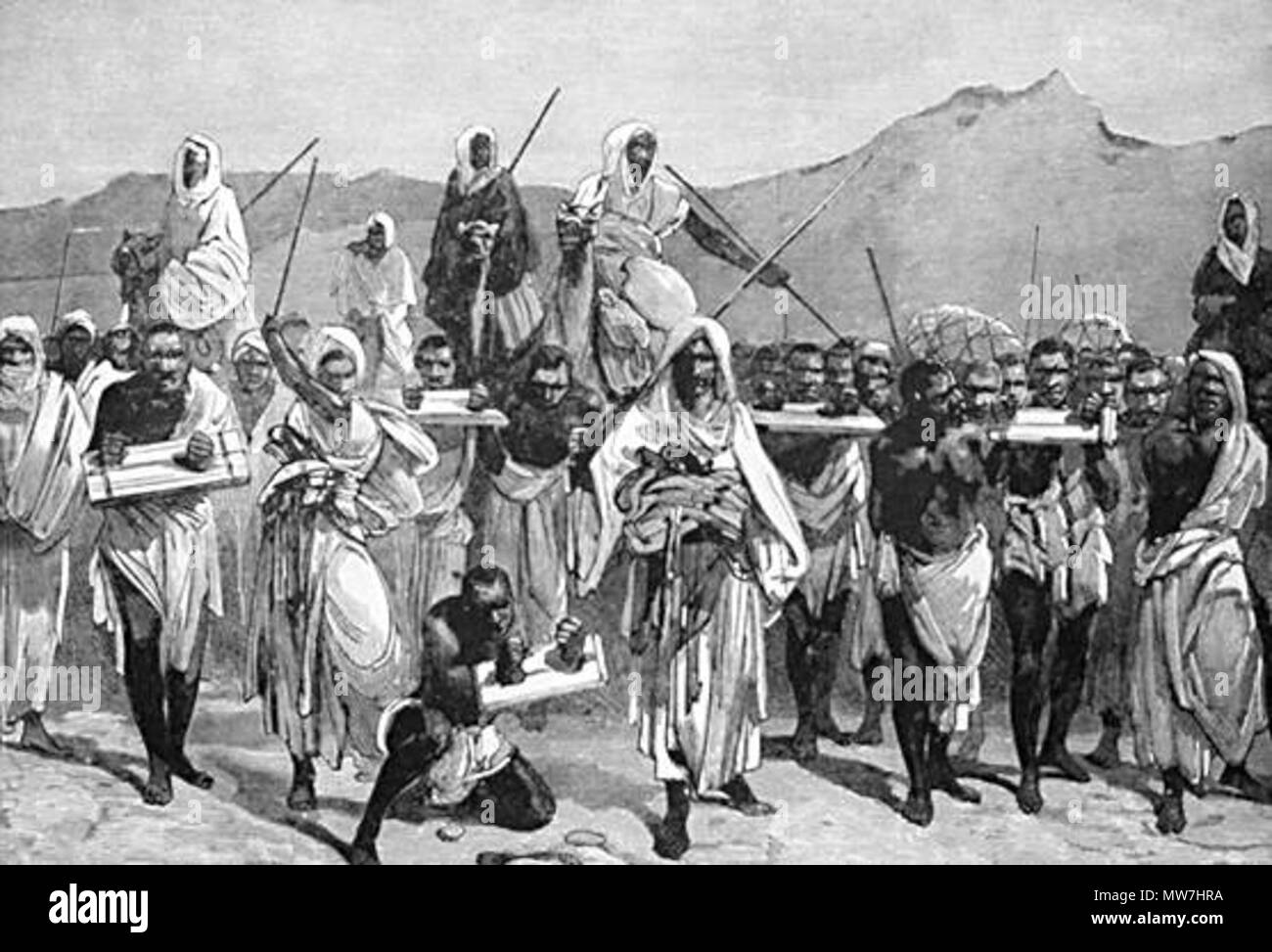 . English: Public domain image more than 100 years since creation, therefore further sourcing not required. Arab Slave Traders. A 19th-century engraving depicting an Arab slave-trading caravan transporting black African slaves across the Sahara. The trans-Saharan slave trade developed in the 7th and 8th centuries as Muslim Arabs conquered most of North Africa. The trade grew significantly from the 10th to the 15th century and peaked in the mid-19th century . 19th-century 18 March 2007 (original upload date). 19th-century engraving Uploaded by DavidYork71 at en.wikipedia 54 Arabslavers Stock Photohttps://www.alamy.com/image-license-details/?v=1https://www.alamy.com/english-public-domain-image-more-than-100-years-since-creation-therefore-further-sourcing-not-required-arab-slave-traders-a-19th-century-engraving-depicting-an-arab-slave-trading-caravan-transporting-black-african-slaves-across-the-sahara-the-trans-saharan-slave-trade-developed-in-the-7th-and-8th-centuries-as-muslim-arabs-conquered-most-of-north-africa-the-trade-grew-significantly-from-the-10th-to-the-15th-century-and-peaked-in-the-mid-19th-century-19th-century-18-march-2007-original-upload-date-19th-century-engraving-uploaded-by-davidyork71-at-enwikipedia-54-arabslavers-image187637726.html
. English: Public domain image more than 100 years since creation, therefore further sourcing not required. Arab Slave Traders. A 19th-century engraving depicting an Arab slave-trading caravan transporting black African slaves across the Sahara. The trans-Saharan slave trade developed in the 7th and 8th centuries as Muslim Arabs conquered most of North Africa. The trade grew significantly from the 10th to the 15th century and peaked in the mid-19th century . 19th-century 18 March 2007 (original upload date). 19th-century engraving Uploaded by DavidYork71 at en.wikipedia 54 Arabslavers Stock Photohttps://www.alamy.com/image-license-details/?v=1https://www.alamy.com/english-public-domain-image-more-than-100-years-since-creation-therefore-further-sourcing-not-required-arab-slave-traders-a-19th-century-engraving-depicting-an-arab-slave-trading-caravan-transporting-black-african-slaves-across-the-sahara-the-trans-saharan-slave-trade-developed-in-the-7th-and-8th-centuries-as-muslim-arabs-conquered-most-of-north-africa-the-trade-grew-significantly-from-the-10th-to-the-15th-century-and-peaked-in-the-mid-19th-century-19th-century-18-march-2007-original-upload-date-19th-century-engraving-uploaded-by-davidyork71-at-enwikipedia-54-arabslavers-image187637726.htmlRMMW7HRA–. English: Public domain image more than 100 years since creation, therefore further sourcing not required. Arab Slave Traders. A 19th-century engraving depicting an Arab slave-trading caravan transporting black African slaves across the Sahara. The trans-Saharan slave trade developed in the 7th and 8th centuries as Muslim Arabs conquered most of North Africa. The trade grew significantly from the 10th to the 15th century and peaked in the mid-19th century . 19th-century 18 March 2007 (original upload date). 19th-century engraving Uploaded by DavidYork71 at en.wikipedia 54 Arabslavers
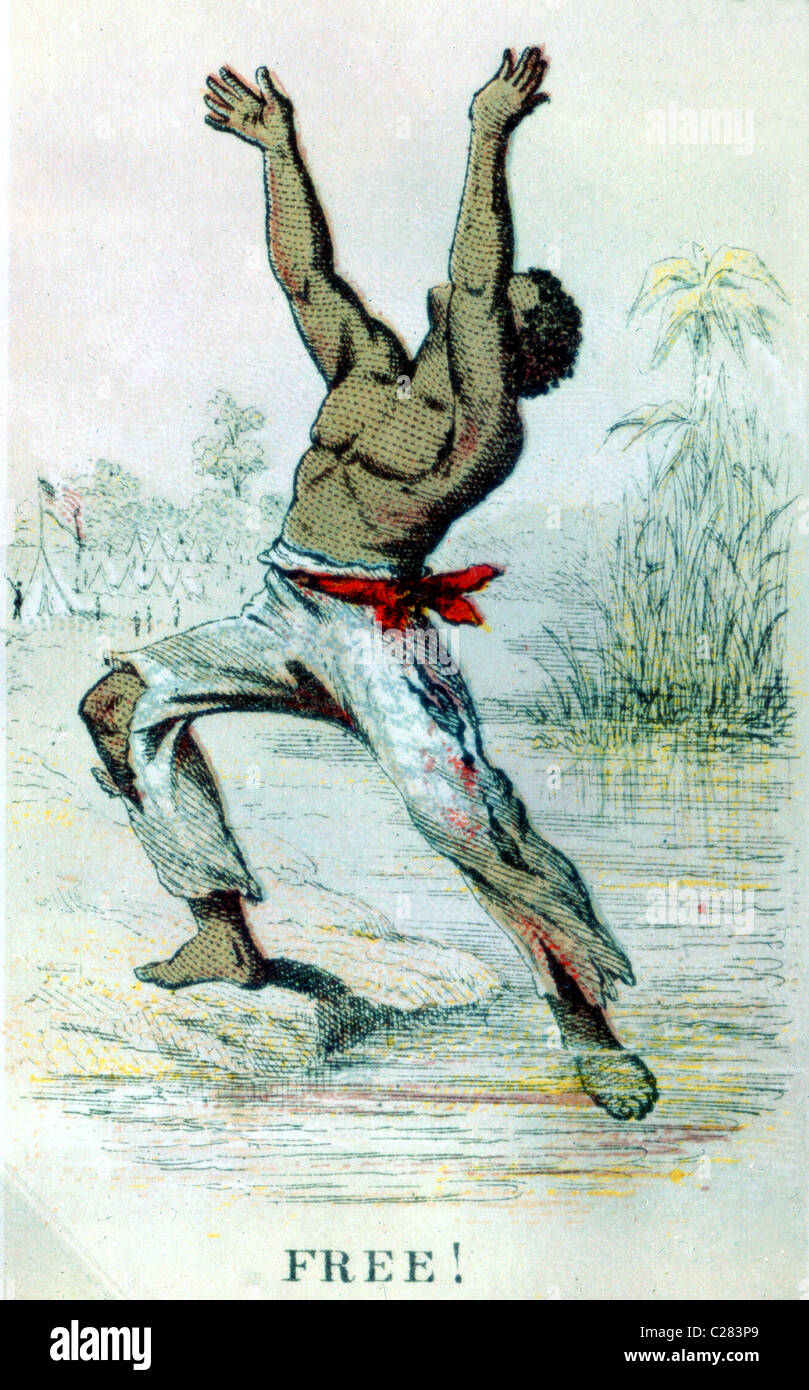 Free! African American slave reaching freedom. Stock Photohttps://www.alamy.com/image-license-details/?v=1https://www.alamy.com/stock-photo-free!-african-american-slave-reaching-freedom-35828641.html
Free! African American slave reaching freedom. Stock Photohttps://www.alamy.com/image-license-details/?v=1https://www.alamy.com/stock-photo-free!-african-american-slave-reaching-freedom-35828641.htmlRMC283P9–Free! African American slave reaching freedom.
 Slave fortress Fort Elmina at Cape Coast, Ghana. Presentation of slave marches in the museum part of the fortress --- Sklavenfestung Fort Elmina bei Cape Coast, Ghana. Darstellung von Sklavenmärschen im Museumsteil der Festung Stock Photohttps://www.alamy.com/image-license-details/?v=1https://www.alamy.com/slave-fortress-fort-elmina-at-cape-coast-ghana-presentation-of-slave-marches-in-the-museum-part-of-the-fortress-sklavenfestung-fort-elmina-bei-cape-coast-ghana-darstellung-von-sklavenmrschen-im-museumsteil-der-festung-image327719415.html
Slave fortress Fort Elmina at Cape Coast, Ghana. Presentation of slave marches in the museum part of the fortress --- Sklavenfestung Fort Elmina bei Cape Coast, Ghana. Darstellung von Sklavenmärschen im Museumsteil der Festung Stock Photohttps://www.alamy.com/image-license-details/?v=1https://www.alamy.com/slave-fortress-fort-elmina-at-cape-coast-ghana-presentation-of-slave-marches-in-the-museum-part-of-the-fortress-sklavenfestung-fort-elmina-bei-cape-coast-ghana-darstellung-von-sklavenmrschen-im-museumsteil-der-festung-image327719415.htmlRM2A14WCR–Slave fortress Fort Elmina at Cape Coast, Ghana. Presentation of slave marches in the museum part of the fortress --- Sklavenfestung Fort Elmina bei Cape Coast, Ghana. Darstellung von Sklavenmärschen im Museumsteil der Festung
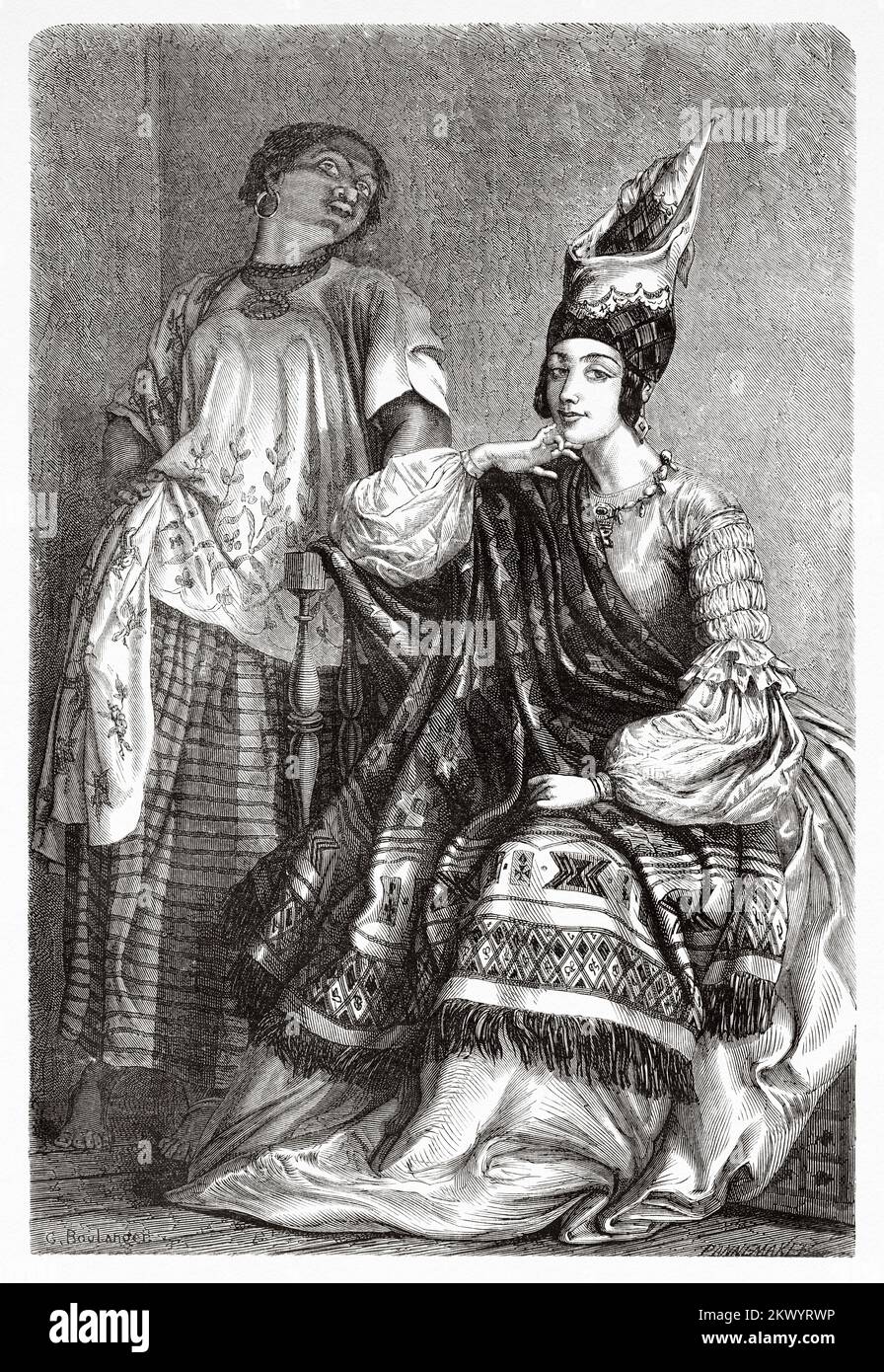 Signare. Female metis trader and her black slave, Senegal. Africa. Travel and expedition to Senegal and bordering countries 1847-1860 Stock Photohttps://www.alamy.com/image-license-details/?v=1https://www.alamy.com/signare-female-metis-trader-and-her-black-slave-senegal-africa-travel-and-expedition-to-senegal-and-bordering-countries-1847-1860-image497868162.html
Signare. Female metis trader and her black slave, Senegal. Africa. Travel and expedition to Senegal and bordering countries 1847-1860 Stock Photohttps://www.alamy.com/image-license-details/?v=1https://www.alamy.com/signare-female-metis-trader-and-her-black-slave-senegal-africa-travel-and-expedition-to-senegal-and-bordering-countries-1847-1860-image497868162.htmlRM2KWYRWP–Signare. Female metis trader and her black slave, Senegal. Africa. Travel and expedition to Senegal and bordering countries 1847-1860
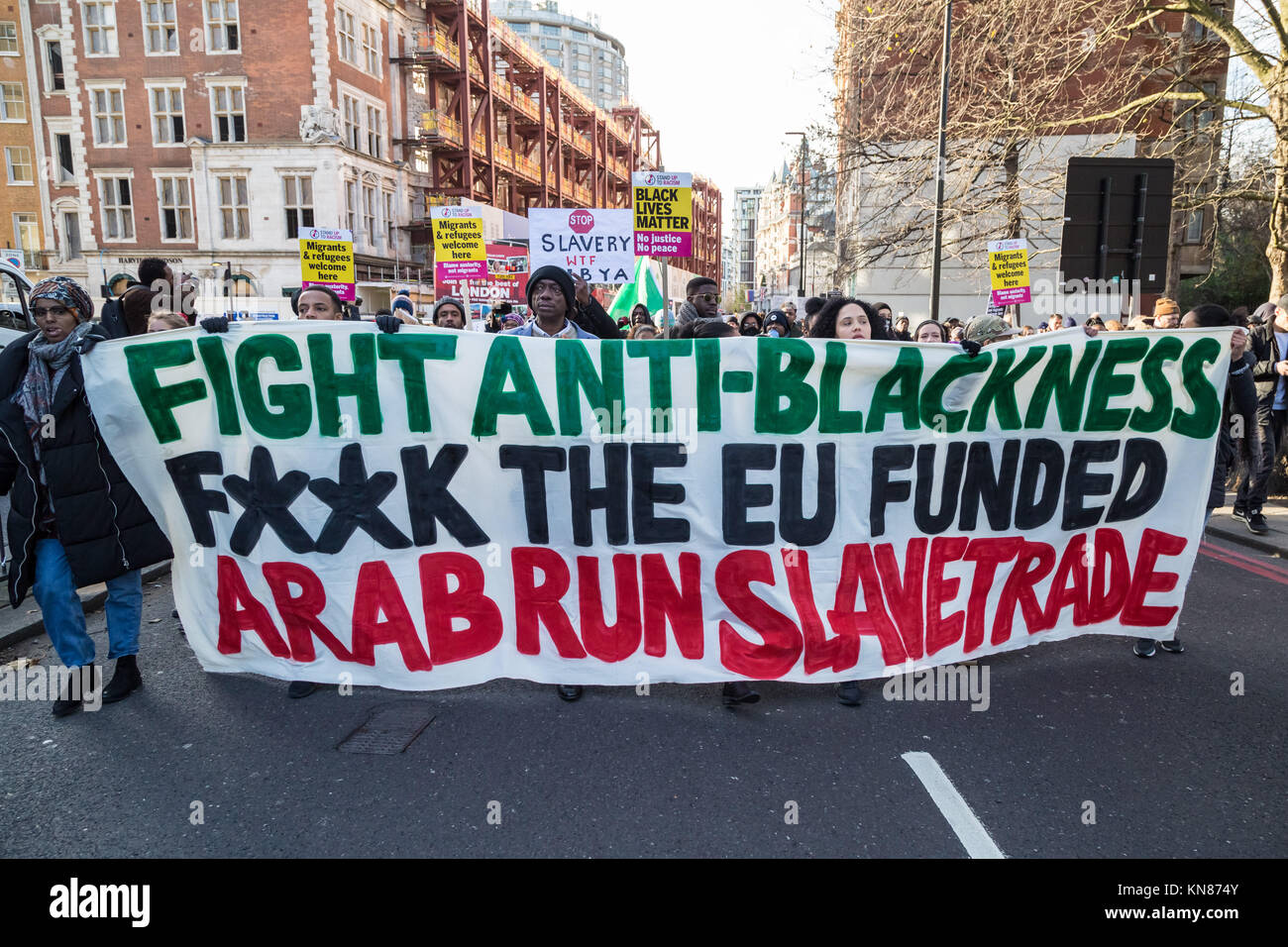 London, UK. 9th Dec, 2017. National Anti-Slavery March. Hundreds of protesters march from Belgrave Square to the Libyan Embassy in south west London to rally and protest against modern slave auctions of African refugees in Libya. Credit: Guy Corbishley/Alamy Live News Stock Photohttps://www.alamy.com/image-license-details/?v=1https://www.alamy.com/stock-image-london-uk-9th-dec-2017-national-anti-slavery-march-hundreds-of-protesters-167982331.html
London, UK. 9th Dec, 2017. National Anti-Slavery March. Hundreds of protesters march from Belgrave Square to the Libyan Embassy in south west London to rally and protest against modern slave auctions of African refugees in Libya. Credit: Guy Corbishley/Alamy Live News Stock Photohttps://www.alamy.com/image-license-details/?v=1https://www.alamy.com/stock-image-london-uk-9th-dec-2017-national-anti-slavery-march-hundreds-of-protesters-167982331.htmlRMKN874Y–London, UK. 9th Dec, 2017. National Anti-Slavery March. Hundreds of protesters march from Belgrave Square to the Libyan Embassy in south west London to rally and protest against modern slave auctions of African refugees in Libya. Credit: Guy Corbishley/Alamy Live News
 The New Orleans Historic Voodoo Museum. Black Cat ju-ju. Used to protect the home against evil spirits. New Orleans. USA. Stock Photohttps://www.alamy.com/image-license-details/?v=1https://www.alamy.com/the-new-orleans-historic-voodoo-museum-black-cat-ju-ju-used-to-protect-image62306432.html
The New Orleans Historic Voodoo Museum. Black Cat ju-ju. Used to protect the home against evil spirits. New Orleans. USA. Stock Photohttps://www.alamy.com/image-license-details/?v=1https://www.alamy.com/the-new-orleans-historic-voodoo-museum-black-cat-ju-ju-used-to-protect-image62306432.htmlRMDHA8DM–The New Orleans Historic Voodoo Museum. Black Cat ju-ju. Used to protect the home against evil spirits. New Orleans. USA.
 Portrait of sad woman trapped with old rusty chains and mask on her face. Slave trade prevention concept. Stock Photohttps://www.alamy.com/image-license-details/?v=1https://www.alamy.com/portrait-of-sad-woman-trapped-with-old-rusty-chains-and-mask-on-her-face-slave-trade-prevention-concept-image550615470.html
Portrait of sad woman trapped with old rusty chains and mask on her face. Slave trade prevention concept. Stock Photohttps://www.alamy.com/image-license-details/?v=1https://www.alamy.com/portrait-of-sad-woman-trapped-with-old-rusty-chains-and-mask-on-her-face-slave-trade-prevention-concept-image550615470.htmlRF2PYPKJ6–Portrait of sad woman trapped with old rusty chains and mask on her face. Slave trade prevention concept.
 Protesters outside the Libyan embassy calling for the British government to pressure Libya to end the slavery and inhumane treatment of migrants. Dec 9 2017 Stock Photohttps://www.alamy.com/image-license-details/?v=1https://www.alamy.com/stock-image-protesters-outside-the-libyan-embassy-calling-for-the-british-government-168165066.html
Protesters outside the Libyan embassy calling for the British government to pressure Libya to end the slavery and inhumane treatment of migrants. Dec 9 2017 Stock Photohttps://www.alamy.com/image-license-details/?v=1https://www.alamy.com/stock-image-protesters-outside-the-libyan-embassy-calling-for-the-british-government-168165066.htmlRMKNGG76–Protesters outside the Libyan embassy calling for the British government to pressure Libya to end the slavery and inhumane treatment of migrants. Dec 9 2017
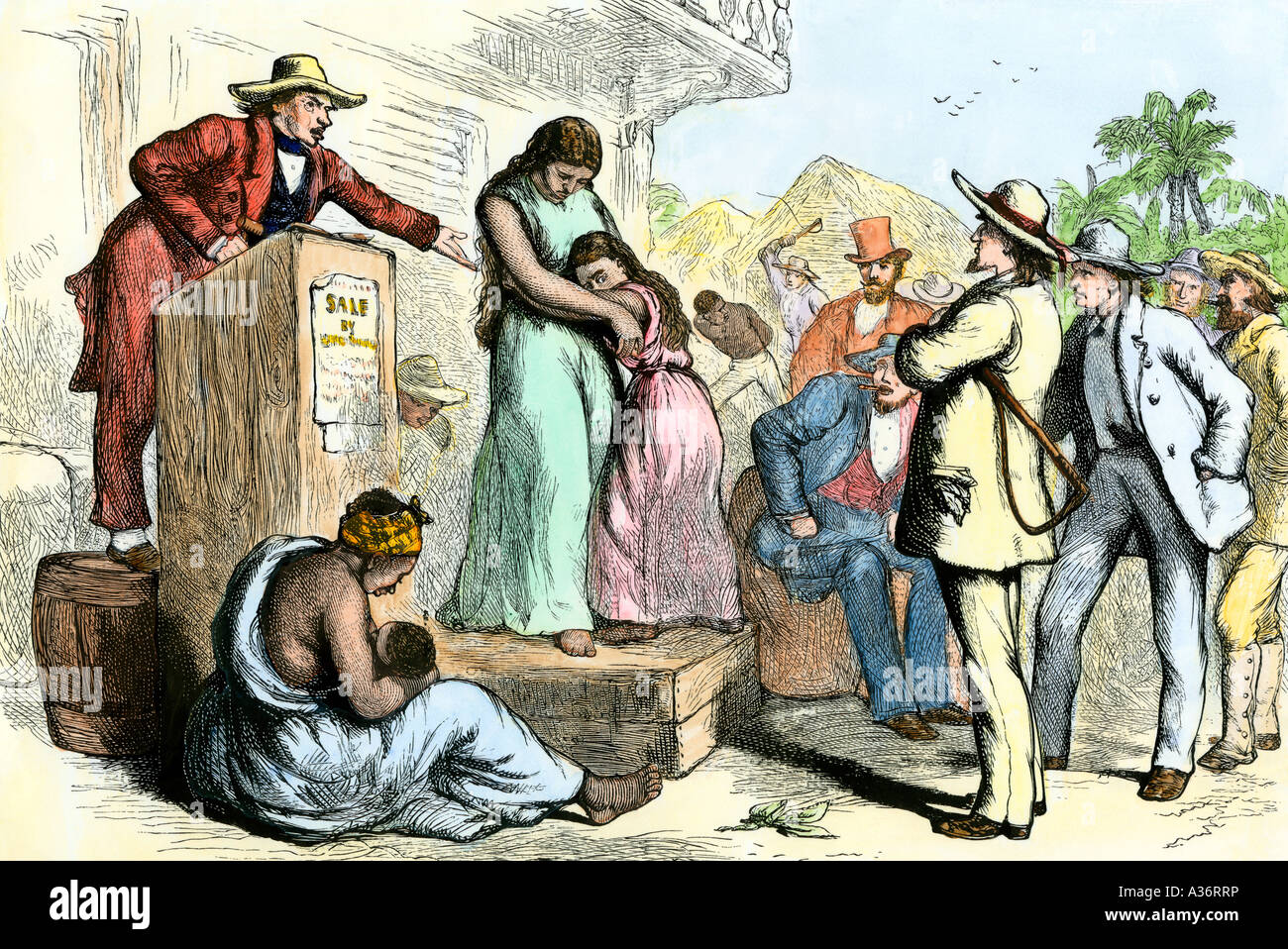 Slave mother and daughter on the auction block in the US South. Hand-colored woodcut Stock Photohttps://www.alamy.com/image-license-details/?v=1https://www.alamy.com/stock-photo-slave-mother-and-daughter-on-the-auction-block-in-the-us-south-hand-10689225.html
Slave mother and daughter on the auction block in the US South. Hand-colored woodcut Stock Photohttps://www.alamy.com/image-license-details/?v=1https://www.alamy.com/stock-photo-slave-mother-and-daughter-on-the-auction-block-in-the-us-south-hand-10689225.htmlRMA36RRP–Slave mother and daughter on the auction block in the US South. Hand-colored woodcut
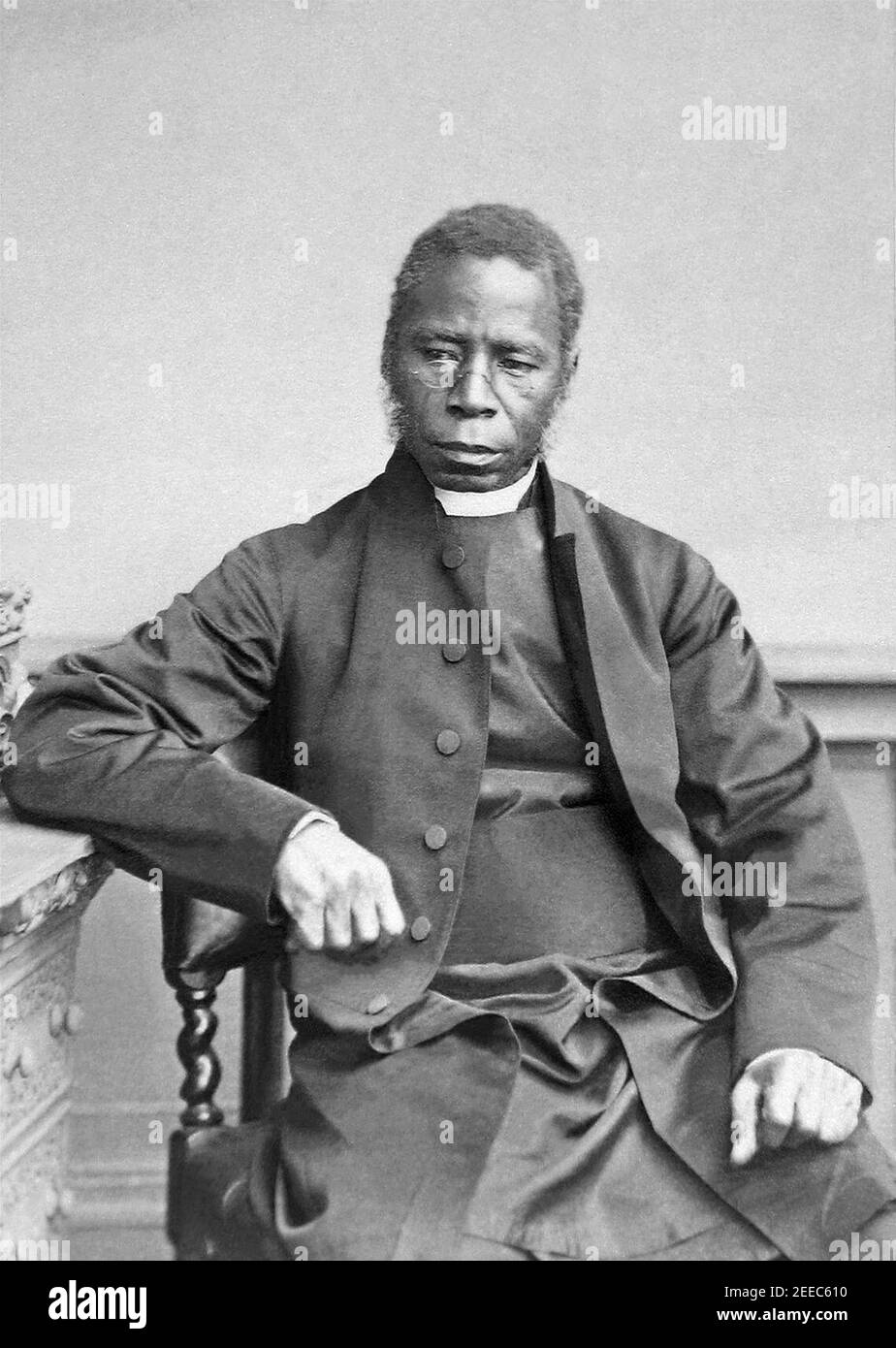 Samuel Ajayi Crowther (c1809–1891), former slave who became the first black Anglican Bishop. Crowther was ordained by the Church Missionary Society and in 1864 was consecrated bishop of the Niger territory in Africa. A linguist, with an honorary doctorate of divinity from Oxford University, Crowther worked on Bible translation into more than one African language. Stock Photohttps://www.alamy.com/image-license-details/?v=1https://www.alamy.com/samuel-ajayi-crowther-c18091891-former-slave-who-became-the-first-black-anglican-bishop-crowther-was-ordained-by-the-church-missionary-society-and-in-1864-was-consecrated-bishop-of-the-niger-territory-in-africa-a-linguist-with-an-honorary-doctorate-of-divinity-from-oxford-university-crowther-worked-on-bible-translation-into-more-than-one-african-language-image404711804.html
Samuel Ajayi Crowther (c1809–1891), former slave who became the first black Anglican Bishop. Crowther was ordained by the Church Missionary Society and in 1864 was consecrated bishop of the Niger territory in Africa. A linguist, with an honorary doctorate of divinity from Oxford University, Crowther worked on Bible translation into more than one African language. Stock Photohttps://www.alamy.com/image-license-details/?v=1https://www.alamy.com/samuel-ajayi-crowther-c18091891-former-slave-who-became-the-first-black-anglican-bishop-crowther-was-ordained-by-the-church-missionary-society-and-in-1864-was-consecrated-bishop-of-the-niger-territory-in-africa-a-linguist-with-an-honorary-doctorate-of-divinity-from-oxford-university-crowther-worked-on-bible-translation-into-more-than-one-african-language-image404711804.htmlRM2EEC610–Samuel Ajayi Crowther (c1809–1891), former slave who became the first black Anglican Bishop. Crowther was ordained by the Church Missionary Society and in 1864 was consecrated bishop of the Niger territory in Africa. A linguist, with an honorary doctorate of divinity from Oxford University, Crowther worked on Bible translation into more than one African language.
 A historic marker stands in Old Plateau Cemetery, a historic slave cemetery in Africatown, March 5, 2021, in Mobile, Alabama. Stock Photohttps://www.alamy.com/image-license-details/?v=1https://www.alamy.com/a-historic-marker-stands-in-old-plateau-cemetery-a-historic-slave-cemetery-in-africatown-march-5-2021-in-mobile-alabama-image413557185.html
A historic marker stands in Old Plateau Cemetery, a historic slave cemetery in Africatown, March 5, 2021, in Mobile, Alabama. Stock Photohttps://www.alamy.com/image-license-details/?v=1https://www.alamy.com/a-historic-marker-stands-in-old-plateau-cemetery-a-historic-slave-cemetery-in-africatown-march-5-2021-in-mobile-alabama-image413557185.htmlRM2F0R4BD–A historic marker stands in Old Plateau Cemetery, a historic slave cemetery in Africatown, March 5, 2021, in Mobile, Alabama.
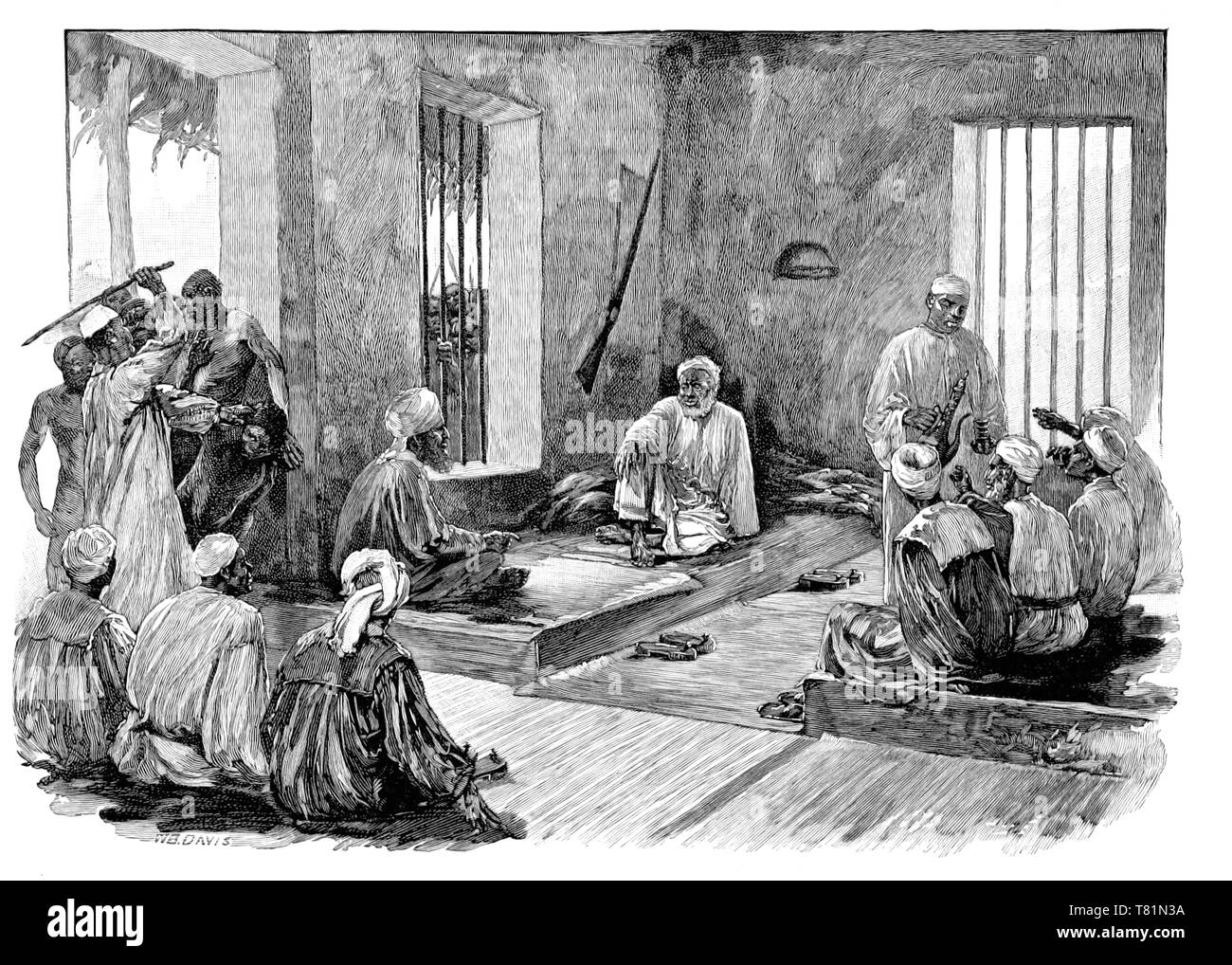 Tippu Tip, African Slave Trader Stock Photohttps://www.alamy.com/image-license-details/?v=1https://www.alamy.com/tippu-tip-african-slave-trader-image245900910.html
Tippu Tip, African Slave Trader Stock Photohttps://www.alamy.com/image-license-details/?v=1https://www.alamy.com/tippu-tip-african-slave-trader-image245900910.htmlRMT81N3A–Tippu Tip, African Slave Trader
 Young man at the entrance to the cave or slave chamber used to house slaves at Mangapwani Zanzibar Tanzania East Africa Stock Photohttps://www.alamy.com/image-license-details/?v=1https://www.alamy.com/young-man-at-the-entrance-to-the-cave-or-slave-chamber-used-to-house-image3009134.html
Young man at the entrance to the cave or slave chamber used to house slaves at Mangapwani Zanzibar Tanzania East Africa Stock Photohttps://www.alamy.com/image-license-details/?v=1https://www.alamy.com/young-man-at-the-entrance-to-the-cave-or-slave-chamber-used-to-house-image3009134.htmlRMARXA6F–Young man at the entrance to the cave or slave chamber used to house slaves at Mangapwani Zanzibar Tanzania East Africa
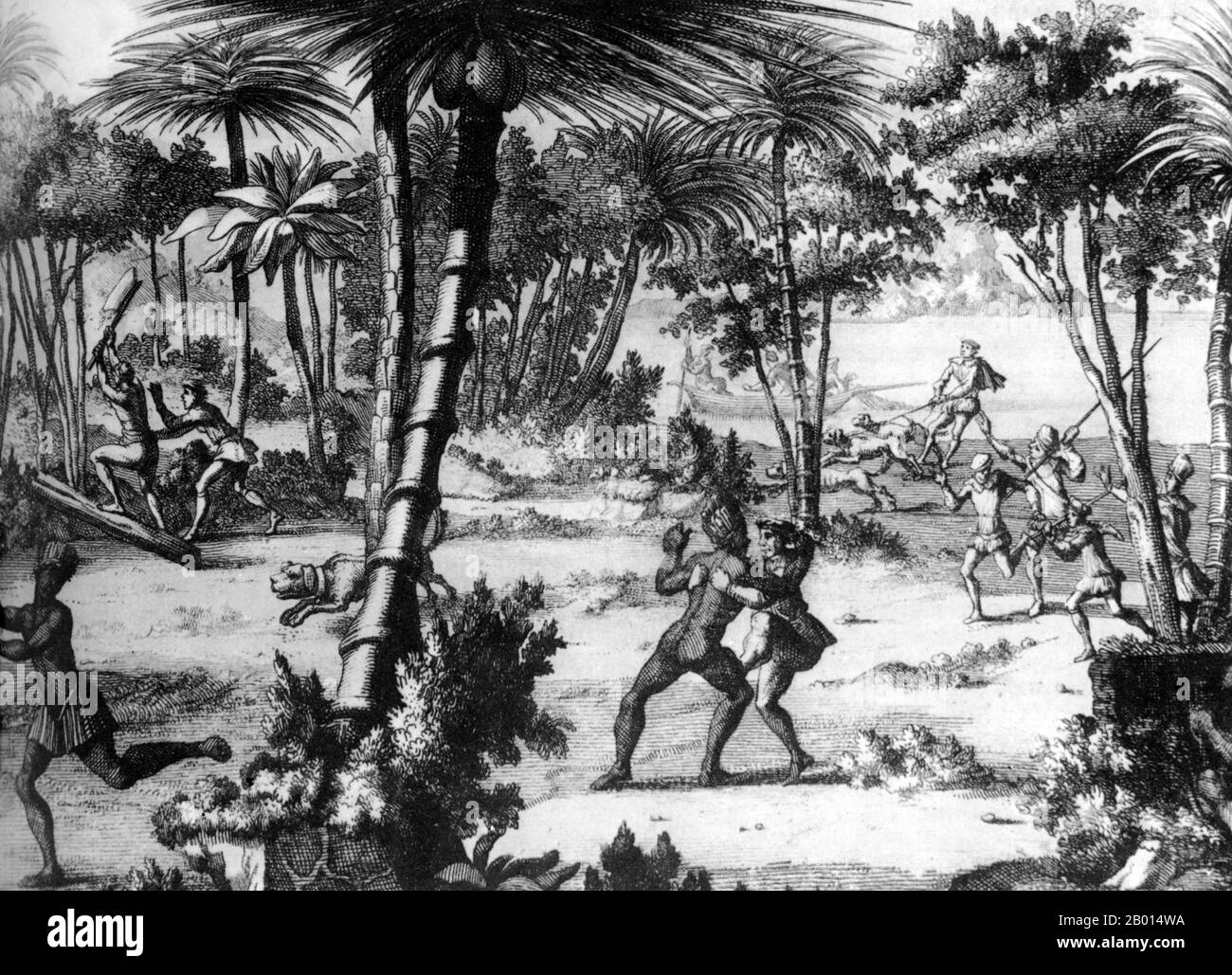 Africa: European slave traders attack and capture victims in Africa. Engraving, c. 17th century. The Spanish were the first Europeans to transport African slaves to the New World on islands such as Cuba and Hispaniola (now the Dominican Republic and Haiti). They were soon followed by the Portuguese, France, Britain and the Netherlands. The alarming death rate in the native population spurred the first royal laws protecting them (Laws of Burgos, 1512–1513). The first African slaves arrived in Hispaniola in 1501 soon after the Papal Bull of 1493 gave all of the New World to Spain. Stock Photohttps://www.alamy.com/image-license-details/?v=1https://www.alamy.com/africa-european-slave-traders-attack-and-capture-victims-in-africa-engraving-c-17th-century-the-spanish-were-the-first-europeans-to-transport-african-slaves-to-the-new-world-on-islands-such-as-cuba-and-hispaniola-now-the-dominican-republic-and-haiti-they-were-soon-followed-by-the-portuguese-france-britain-and-the-netherlands-the-alarming-death-rate-in-the-native-population-spurred-the-first-royal-laws-protecting-them-laws-of-burgos-15121513-the-first-african-slaves-arrived-in-hispaniola-in-1501-soon-after-the-papal-bull-of-1493-gave-all-of-the-new-world-to-spain-image344233158.html
Africa: European slave traders attack and capture victims in Africa. Engraving, c. 17th century. The Spanish were the first Europeans to transport African slaves to the New World on islands such as Cuba and Hispaniola (now the Dominican Republic and Haiti). They were soon followed by the Portuguese, France, Britain and the Netherlands. The alarming death rate in the native population spurred the first royal laws protecting them (Laws of Burgos, 1512–1513). The first African slaves arrived in Hispaniola in 1501 soon after the Papal Bull of 1493 gave all of the New World to Spain. Stock Photohttps://www.alamy.com/image-license-details/?v=1https://www.alamy.com/africa-european-slave-traders-attack-and-capture-victims-in-africa-engraving-c-17th-century-the-spanish-were-the-first-europeans-to-transport-african-slaves-to-the-new-world-on-islands-such-as-cuba-and-hispaniola-now-the-dominican-republic-and-haiti-they-were-soon-followed-by-the-portuguese-france-britain-and-the-netherlands-the-alarming-death-rate-in-the-native-population-spurred-the-first-royal-laws-protecting-them-laws-of-burgos-15121513-the-first-african-slaves-arrived-in-hispaniola-in-1501-soon-after-the-papal-bull-of-1493-gave-all-of-the-new-world-to-spain-image344233158.htmlRM2B014WA–Africa: European slave traders attack and capture victims in Africa. Engraving, c. 17th century. The Spanish were the first Europeans to transport African slaves to the New World on islands such as Cuba and Hispaniola (now the Dominican Republic and Haiti). They were soon followed by the Portuguese, France, Britain and the Netherlands. The alarming death rate in the native population spurred the first royal laws protecting them (Laws of Burgos, 1512–1513). The first African slaves arrived in Hispaniola in 1501 soon after the Papal Bull of 1493 gave all of the New World to Spain.
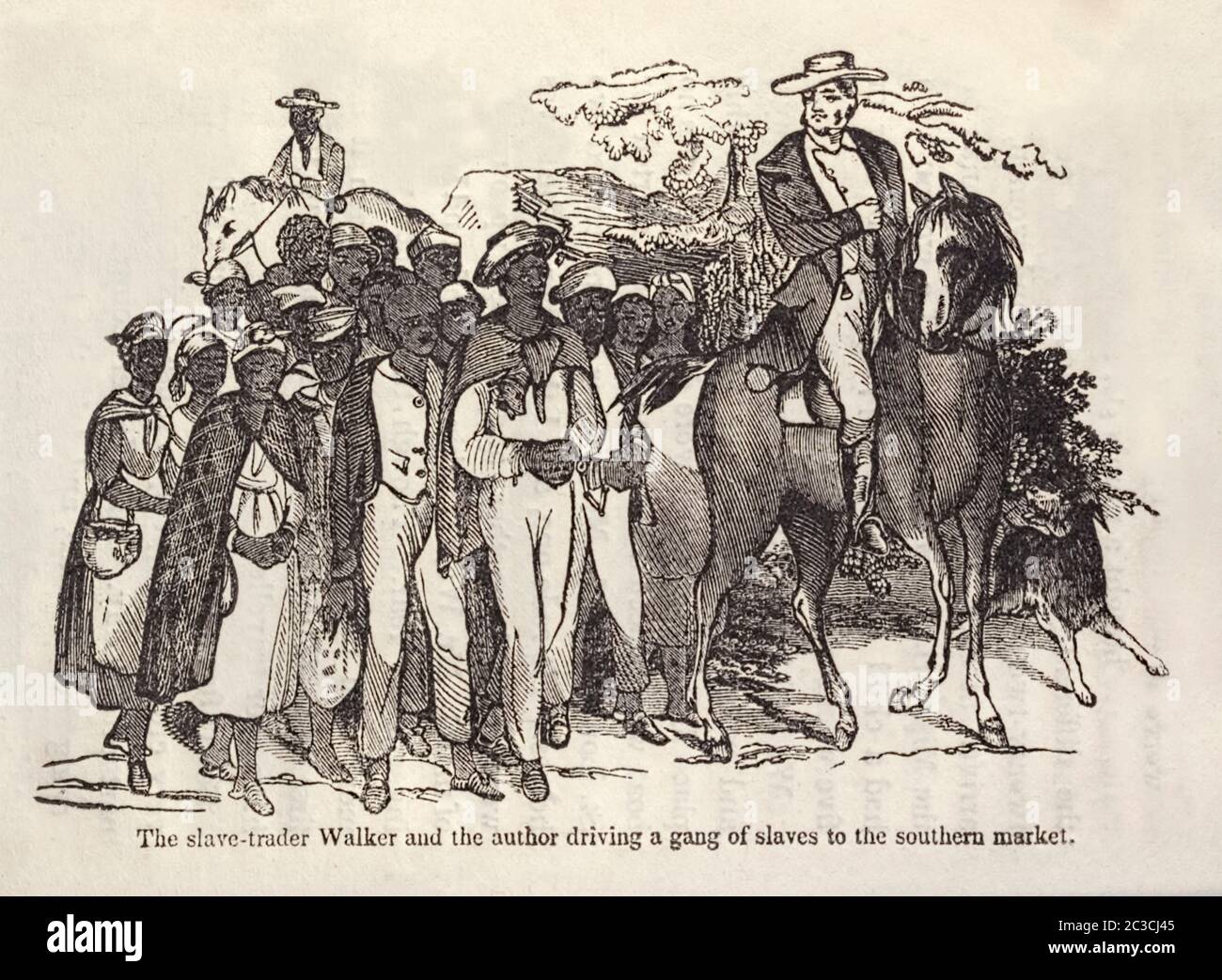 “The slave-trader Walker and the author driving a gang of slaves to the southern market” illustration from ‘The Narrative of William W. Brown, a Fugitive Slave, Written by Himself’ by William Wells Brown (c.1814-1884). First published in 1847 this bestselling slave narrative sets out the author’s experience as the son of a white planter and mother of Native American and black ancestry working the steamships out of St Louis, Missouri before escaping in 1834 in the free state of Ohio. Stock Photohttps://www.alamy.com/image-license-details/?v=1https://www.alamy.com/the-slave-trader-walker-and-the-author-driving-a-gang-of-slaves-to-the-southern-market-illustration-from-the-narrative-of-william-w-brown-a-fugitive-slave-written-by-himself-by-william-wells-brown-c1814-1884-first-published-in-1847-this-bestselling-slave-narrative-sets-out-the-authors-experience-as-the-son-of-a-white-planter-and-mother-of-native-american-and-black-ancestry-working-the-steamships-out-of-st-louis-missouri-before-escaping-in-1834-in-the-free-state-of-ohio-image363539349.html
“The slave-trader Walker and the author driving a gang of slaves to the southern market” illustration from ‘The Narrative of William W. Brown, a Fugitive Slave, Written by Himself’ by William Wells Brown (c.1814-1884). First published in 1847 this bestselling slave narrative sets out the author’s experience as the son of a white planter and mother of Native American and black ancestry working the steamships out of St Louis, Missouri before escaping in 1834 in the free state of Ohio. Stock Photohttps://www.alamy.com/image-license-details/?v=1https://www.alamy.com/the-slave-trader-walker-and-the-author-driving-a-gang-of-slaves-to-the-southern-market-illustration-from-the-narrative-of-william-w-brown-a-fugitive-slave-written-by-himself-by-william-wells-brown-c1814-1884-first-published-in-1847-this-bestselling-slave-narrative-sets-out-the-authors-experience-as-the-son-of-a-white-planter-and-mother-of-native-american-and-black-ancestry-working-the-steamships-out-of-st-louis-missouri-before-escaping-in-1834-in-the-free-state-of-ohio-image363539349.htmlRM2C3CJ45–“The slave-trader Walker and the author driving a gang of slaves to the southern market” illustration from ‘The Narrative of William W. Brown, a Fugitive Slave, Written by Himself’ by William Wells Brown (c.1814-1884). First published in 1847 this bestselling slave narrative sets out the author’s experience as the son of a white planter and mother of Native American and black ancestry working the steamships out of St Louis, Missouri before escaping in 1834 in the free state of Ohio.
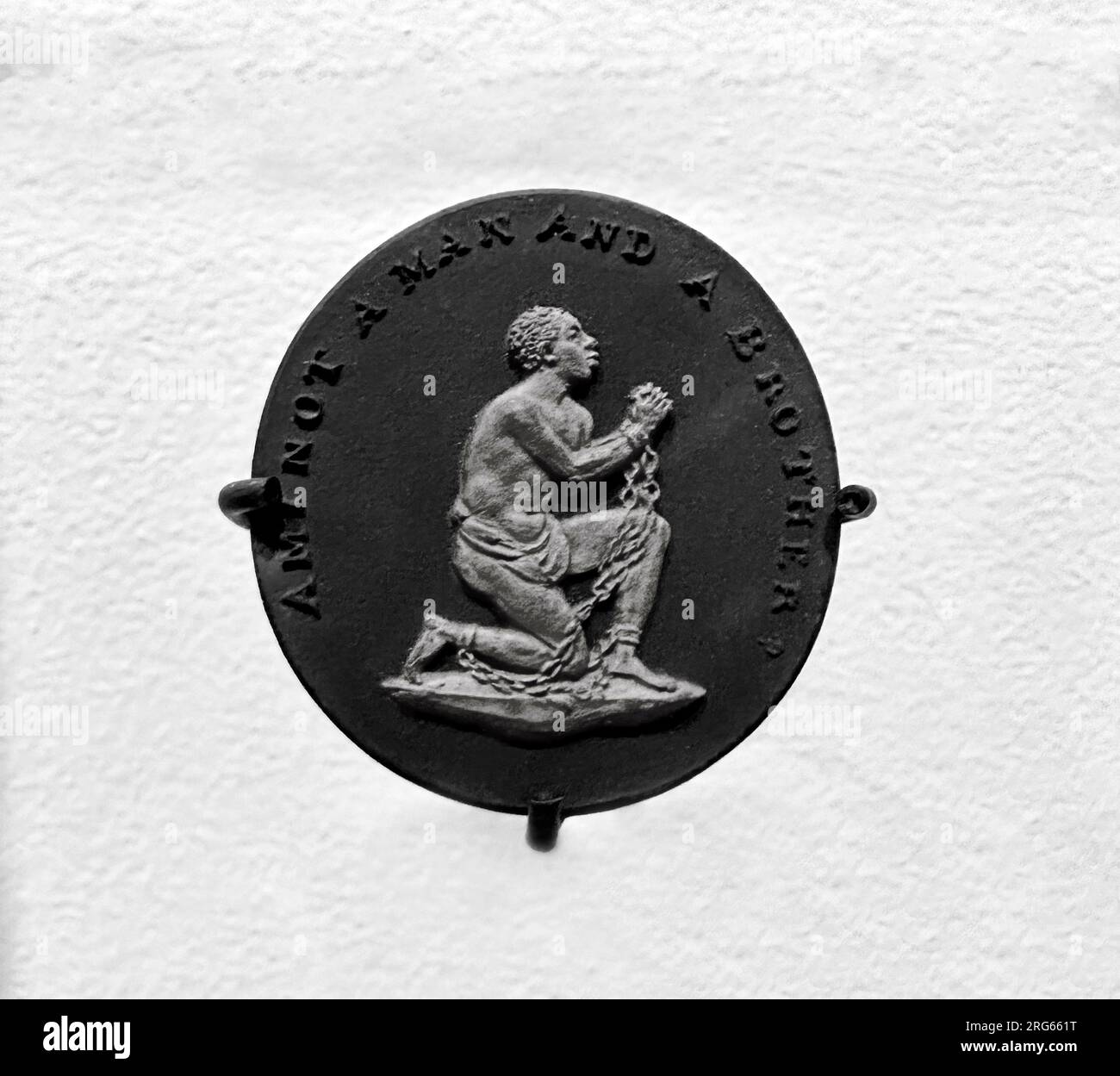 Medallion made by Wedgwood for the Abolition of the slave trade who raised money for the cause Stock Photohttps://www.alamy.com/image-license-details/?v=1https://www.alamy.com/medallion-made-by-wedgwood-for-the-abolition-of-the-slave-trade-who-raised-money-for-the-cause-image560702740.html
Medallion made by Wedgwood for the Abolition of the slave trade who raised money for the cause Stock Photohttps://www.alamy.com/image-license-details/?v=1https://www.alamy.com/medallion-made-by-wedgwood-for-the-abolition-of-the-slave-trade-who-raised-money-for-the-cause-image560702740.htmlRM2RG661T–Medallion made by Wedgwood for the Abolition of the slave trade who raised money for the cause
 GERMANY, Hamburg, german history, mausoleum and tomb of Heinrich Carl von Schimmelmann 1724-1782 a rich merchant and slave trader / DEUTSCHLAND, Hamburg, Spuren der deutschen Kolonialgeschichte, Grabstätte und Mausoleum von Graf Heinrich Carl von Schimmelmann, reicher Kaufmann und Sklavenhändler 1724-1782 , er besaß u.a. Kontore und Fabriken, Zuckerrohr Plantagen mit 1000 Sklaven in der Karibik und betrieb den atlantischen Dreieckshandel Stock Photohttps://www.alamy.com/image-license-details/?v=1https://www.alamy.com/germany-hamburg-german-history-mausoleum-and-tomb-of-heinrich-carl-von-schimmelmann-1724-1782-a-rich-merchant-and-slave-trader-deutschland-hamburg-spuren-der-deutschen-kolonialgeschichte-grabsttte-und-mausoleum-von-graf-heinrich-carl-von-schimmelmann-reicher-kaufmann-und-sklavenhndler-1724-1782-er-besa-ua-kontore-und-fabriken-zuckerrohr-plantagen-mit-1000-sklaven-in-der-karibik-und-betrieb-den-atlantischen-dreieckshandel-image444178316.html
GERMANY, Hamburg, german history, mausoleum and tomb of Heinrich Carl von Schimmelmann 1724-1782 a rich merchant and slave trader / DEUTSCHLAND, Hamburg, Spuren der deutschen Kolonialgeschichte, Grabstätte und Mausoleum von Graf Heinrich Carl von Schimmelmann, reicher Kaufmann und Sklavenhändler 1724-1782 , er besaß u.a. Kontore und Fabriken, Zuckerrohr Plantagen mit 1000 Sklaven in der Karibik und betrieb den atlantischen Dreieckshandel Stock Photohttps://www.alamy.com/image-license-details/?v=1https://www.alamy.com/germany-hamburg-german-history-mausoleum-and-tomb-of-heinrich-carl-von-schimmelmann-1724-1782-a-rich-merchant-and-slave-trader-deutschland-hamburg-spuren-der-deutschen-kolonialgeschichte-grabsttte-und-mausoleum-von-graf-heinrich-carl-von-schimmelmann-reicher-kaufmann-und-sklavenhndler-1724-1782-er-besa-ua-kontore-und-fabriken-zuckerrohr-plantagen-mit-1000-sklaven-in-der-karibik-und-betrieb-den-atlantischen-dreieckshandel-image444178316.htmlRM2GPJ1Y8–GERMANY, Hamburg, german history, mausoleum and tomb of Heinrich Carl von Schimmelmann 1724-1782 a rich merchant and slave trader / DEUTSCHLAND, Hamburg, Spuren der deutschen Kolonialgeschichte, Grabstätte und Mausoleum von Graf Heinrich Carl von Schimmelmann, reicher Kaufmann und Sklavenhändler 1724-1782 , er besaß u.a. Kontore und Fabriken, Zuckerrohr Plantagen mit 1000 Sklaven in der Karibik und betrieb den atlantischen Dreieckshandel
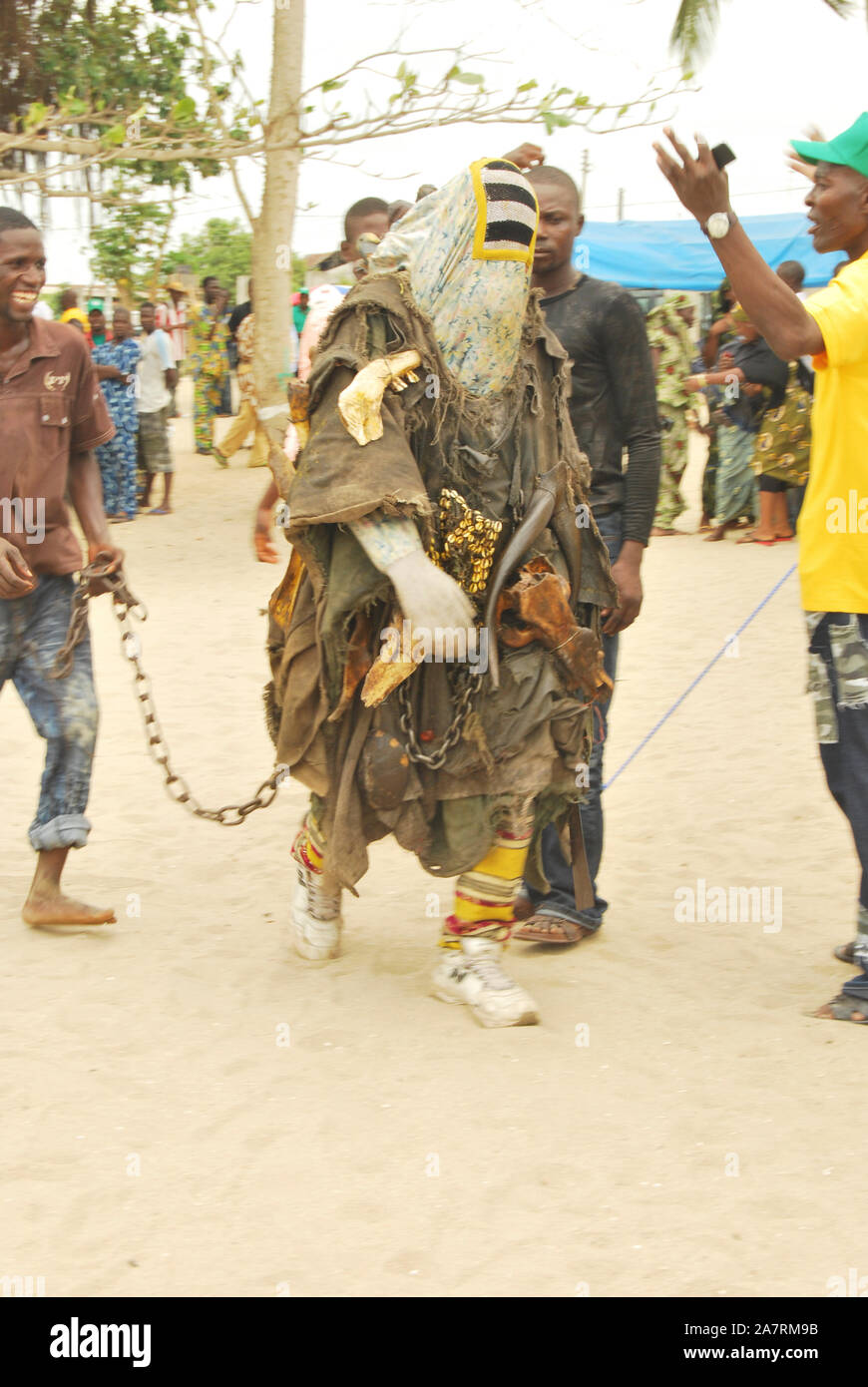 A Masquerade arriving at the venue of the Annual Black Heritage Festival, Badagry Lagos, Nigeria. Stock Photohttps://www.alamy.com/image-license-details/?v=1https://www.alamy.com/a-masquerade-arriving-at-the-venue-of-the-annual-black-heritage-festival-badagry-lagos-nigeria-image331820423.html
A Masquerade arriving at the venue of the Annual Black Heritage Festival, Badagry Lagos, Nigeria. Stock Photohttps://www.alamy.com/image-license-details/?v=1https://www.alamy.com/a-masquerade-arriving-at-the-venue-of-the-annual-black-heritage-festival-badagry-lagos-nigeria-image331820423.htmlRF2A7RM9B–A Masquerade arriving at the venue of the Annual Black Heritage Festival, Badagry Lagos, Nigeria.
 Slave monument Old Slave market Stonetown Zanzibar East Africa Stock Photohttps://www.alamy.com/image-license-details/?v=1https://www.alamy.com/stock-photo-slave-monument-old-slave-market-stonetown-zanzibar-east-africa-12132797.html
Slave monument Old Slave market Stonetown Zanzibar East Africa Stock Photohttps://www.alamy.com/image-license-details/?v=1https://www.alamy.com/stock-photo-slave-monument-old-slave-market-stonetown-zanzibar-east-africa-12132797.htmlRMA8M85J–Slave monument Old Slave market Stonetown Zanzibar East Africa
 . English: Public domain image more than 100 years since creation, therefore further sourcing not required. Arab Slave Traders. A 19th-century engraving depicting an Arab slave-trading caravan transporting black African slaves across the Sahara. The trans-Saharan slave trade developed in the 7th and 8th centuries as Muslim Arabs conquered most of North Africa. The trade grew significantly from the 10th to the 15th century and peaked in the mid-19th century . 19th-century 18 March 2007 (original upload date). 19th-century engraving Uploaded by DavidYork71 at en.wikipedia 54 Arabslavers Stock Photohttps://www.alamy.com/image-license-details/?v=1https://www.alamy.com/english-public-domain-image-more-than-100-years-since-creation-therefore-further-sourcing-not-required-arab-slave-traders-a-19th-century-engraving-depicting-an-arab-slave-trading-caravan-transporting-black-african-slaves-across-the-sahara-the-trans-saharan-slave-trade-developed-in-the-7th-and-8th-centuries-as-muslim-arabs-conquered-most-of-north-africa-the-trade-grew-significantly-from-the-10th-to-the-15th-century-and-peaked-in-the-mid-19th-century-19th-century-18-march-2007-original-upload-date-19th-century-engraving-uploaded-by-davidyork71-at-enwikipedia-54-arabslavers-image188183257.html
. English: Public domain image more than 100 years since creation, therefore further sourcing not required. Arab Slave Traders. A 19th-century engraving depicting an Arab slave-trading caravan transporting black African slaves across the Sahara. The trans-Saharan slave trade developed in the 7th and 8th centuries as Muslim Arabs conquered most of North Africa. The trade grew significantly from the 10th to the 15th century and peaked in the mid-19th century . 19th-century 18 March 2007 (original upload date). 19th-century engraving Uploaded by DavidYork71 at en.wikipedia 54 Arabslavers Stock Photohttps://www.alamy.com/image-license-details/?v=1https://www.alamy.com/english-public-domain-image-more-than-100-years-since-creation-therefore-further-sourcing-not-required-arab-slave-traders-a-19th-century-engraving-depicting-an-arab-slave-trading-caravan-transporting-black-african-slaves-across-the-sahara-the-trans-saharan-slave-trade-developed-in-the-7th-and-8th-centuries-as-muslim-arabs-conquered-most-of-north-africa-the-trade-grew-significantly-from-the-10th-to-the-15th-century-and-peaked-in-the-mid-19th-century-19th-century-18-march-2007-original-upload-date-19th-century-engraving-uploaded-by-davidyork71-at-enwikipedia-54-arabslavers-image188183257.htmlRMMX4DJH–. English: Public domain image more than 100 years since creation, therefore further sourcing not required. Arab Slave Traders. A 19th-century engraving depicting an Arab slave-trading caravan transporting black African slaves across the Sahara. The trans-Saharan slave trade developed in the 7th and 8th centuries as Muslim Arabs conquered most of North Africa. The trade grew significantly from the 10th to the 15th century and peaked in the mid-19th century . 19th-century 18 March 2007 (original upload date). 19th-century engraving Uploaded by DavidYork71 at en.wikipedia 54 Arabslavers
 Interior of Albreda Slave Museum in The Gambia West Africa Stock Photohttps://www.alamy.com/image-license-details/?v=1https://www.alamy.com/interior-of-albreda-slave-museum-in-the-gambia-west-africa-image741258.html
Interior of Albreda Slave Museum in The Gambia West Africa Stock Photohttps://www.alamy.com/image-license-details/?v=1https://www.alamy.com/interior-of-albreda-slave-museum-in-the-gambia-west-africa-image741258.htmlRMAB4F8A–Interior of Albreda Slave Museum in The Gambia West Africa
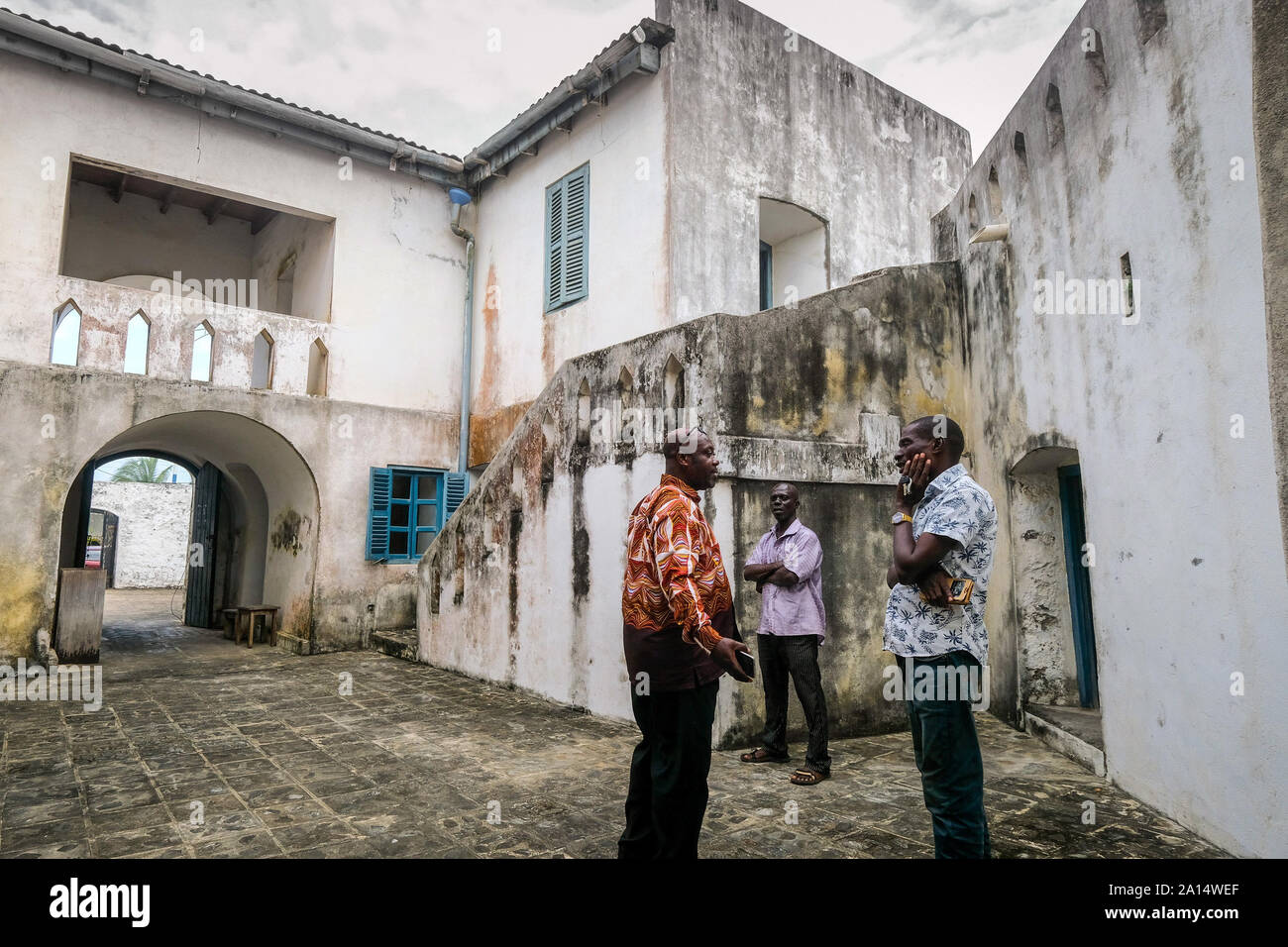 Slave fortress Fort Apollonia at Gold Coast, Ghana, Africa --- Sklavenfestung Fort Apollonia an der Goldküste, Ghana, Afrika Stock Photohttps://www.alamy.com/image-license-details/?v=1https://www.alamy.com/slave-fortress-fort-apollonia-at-gold-coast-ghana-africa-sklavenfestung-fort-apollonia-an-der-goldkste-ghana-afrika-image327719463.html
Slave fortress Fort Apollonia at Gold Coast, Ghana, Africa --- Sklavenfestung Fort Apollonia an der Goldküste, Ghana, Afrika Stock Photohttps://www.alamy.com/image-license-details/?v=1https://www.alamy.com/slave-fortress-fort-apollonia-at-gold-coast-ghana-africa-sklavenfestung-fort-apollonia-an-der-goldkste-ghana-afrika-image327719463.htmlRM2A14WEF–Slave fortress Fort Apollonia at Gold Coast, Ghana, Africa --- Sklavenfestung Fort Apollonia an der Goldküste, Ghana, Afrika
 The Plundering Warriors. Arab slave traders attacking an African village, Chad. Central Africa. Drawing by Ivan Pranishnikoff (1841 - 1909) Journey from Borno to Baguirmi 1872 by Dr. Gustav Hermann Nachtigal (1834 - 1885) Le Tour du Monde 1880 Stock Photohttps://www.alamy.com/image-license-details/?v=1https://www.alamy.com/the-plundering-warriors-arab-slave-traders-attacking-an-african-village-chad-central-africa-drawing-by-ivan-pranishnikoff-1841-1909-journey-from-borno-to-baguirmi-1872-by-dr-gustav-hermann-nachtigal-1834-1885-le-tour-du-monde-1880-image600723398.html
The Plundering Warriors. Arab slave traders attacking an African village, Chad. Central Africa. Drawing by Ivan Pranishnikoff (1841 - 1909) Journey from Borno to Baguirmi 1872 by Dr. Gustav Hermann Nachtigal (1834 - 1885) Le Tour du Monde 1880 Stock Photohttps://www.alamy.com/image-license-details/?v=1https://www.alamy.com/the-plundering-warriors-arab-slave-traders-attacking-an-african-village-chad-central-africa-drawing-by-ivan-pranishnikoff-1841-1909-journey-from-borno-to-baguirmi-1872-by-dr-gustav-hermann-nachtigal-1834-1885-le-tour-du-monde-1880-image600723398.htmlRM2WW98R2–The Plundering Warriors. Arab slave traders attacking an African village, Chad. Central Africa. Drawing by Ivan Pranishnikoff (1841 - 1909) Journey from Borno to Baguirmi 1872 by Dr. Gustav Hermann Nachtigal (1834 - 1885) Le Tour du Monde 1880
 London, UK. 9th Dec, 2017. National Anti-Slavery March. Hundreds of protesters march from Belgrave Square to the Libyan Embassy in south west London to rally and protest against modern slave auctions of African refugees in Libya. Credit: Guy Corbishley/Alamy Live News Stock Photohttps://www.alamy.com/image-license-details/?v=1https://www.alamy.com/stock-image-london-uk-9th-dec-2017-national-anti-slavery-march-hundreds-of-protesters-167982326.html
London, UK. 9th Dec, 2017. National Anti-Slavery March. Hundreds of protesters march from Belgrave Square to the Libyan Embassy in south west London to rally and protest against modern slave auctions of African refugees in Libya. Credit: Guy Corbishley/Alamy Live News Stock Photohttps://www.alamy.com/image-license-details/?v=1https://www.alamy.com/stock-image-london-uk-9th-dec-2017-national-anti-slavery-march-hundreds-of-protesters-167982326.htmlRMKN874P–London, UK. 9th Dec, 2017. National Anti-Slavery March. Hundreds of protesters march from Belgrave Square to the Libyan Embassy in south west London to rally and protest against modern slave auctions of African refugees in Libya. Credit: Guy Corbishley/Alamy Live News
 Ghana, Fort Ussher, Slave Fort of Trans Atlantic Slave Trade, Accra in West Africa, old prison part. Graffiti Black Women Stock Photohttps://www.alamy.com/image-license-details/?v=1https://www.alamy.com/stock-photo-ghana-fort-ussher-slave-fort-of-trans-atlantic-slave-trade-accra-in-104329293.html
Ghana, Fort Ussher, Slave Fort of Trans Atlantic Slave Trade, Accra in West Africa, old prison part. Graffiti Black Women Stock Photohttps://www.alamy.com/image-license-details/?v=1https://www.alamy.com/stock-photo-ghana-fort-ussher-slave-fort-of-trans-atlantic-slave-trade-accra-in-104329293.htmlRMG1MH25–Ghana, Fort Ussher, Slave Fort of Trans Atlantic Slave Trade, Accra in West Africa, old prison part. Graffiti Black Women
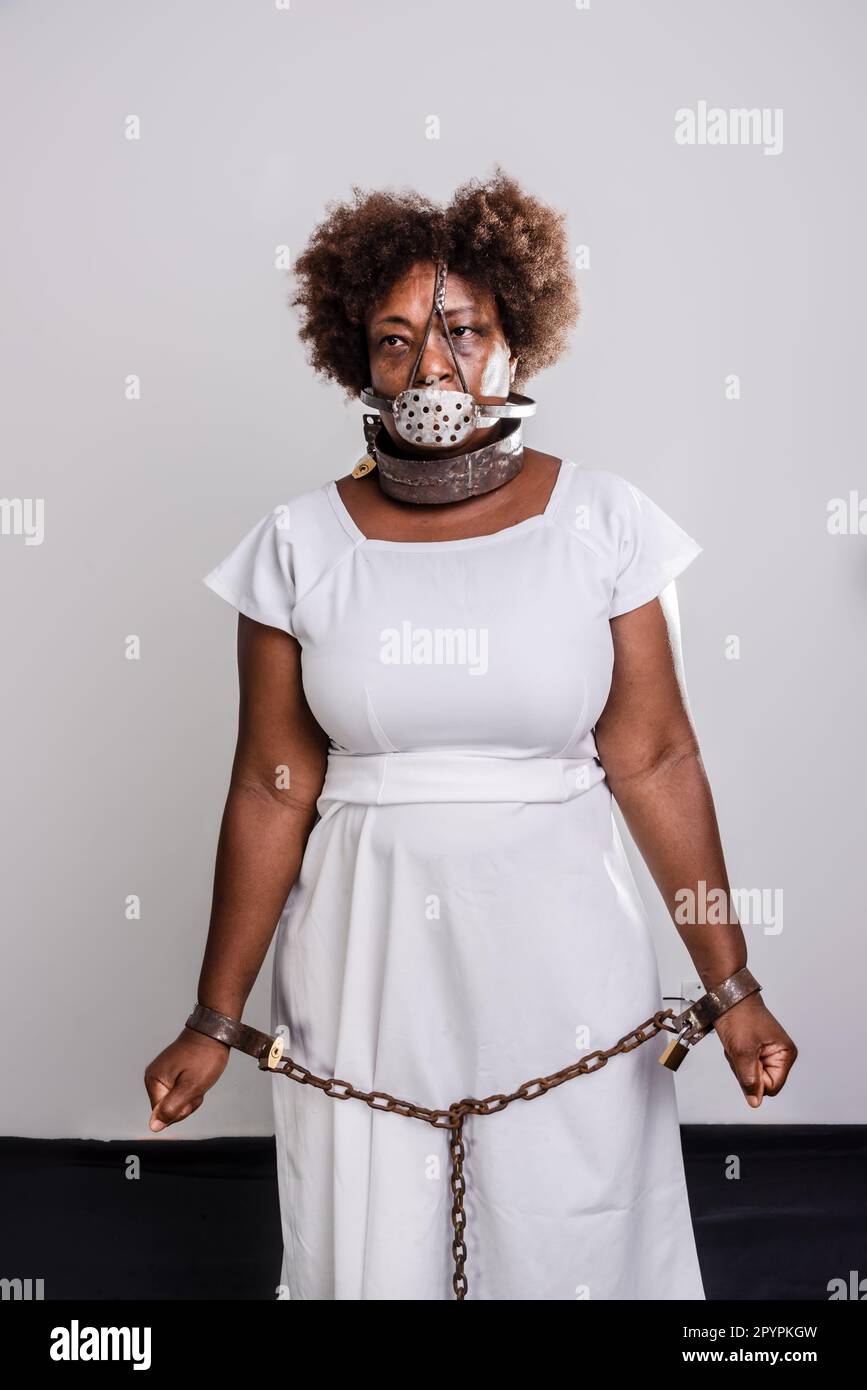 Portrait of sad woman trapped with old rusty chains and mask on her face. Slave trade prevention concept. Stock Photohttps://www.alamy.com/image-license-details/?v=1https://www.alamy.com/portrait-of-sad-woman-trapped-with-old-rusty-chains-and-mask-on-her-face-slave-trade-prevention-concept-image550615433.html
Portrait of sad woman trapped with old rusty chains and mask on her face. Slave trade prevention concept. Stock Photohttps://www.alamy.com/image-license-details/?v=1https://www.alamy.com/portrait-of-sad-woman-trapped-with-old-rusty-chains-and-mask-on-her-face-slave-trade-prevention-concept-image550615433.htmlRF2PYPKGW–Portrait of sad woman trapped with old rusty chains and mask on her face. Slave trade prevention concept.
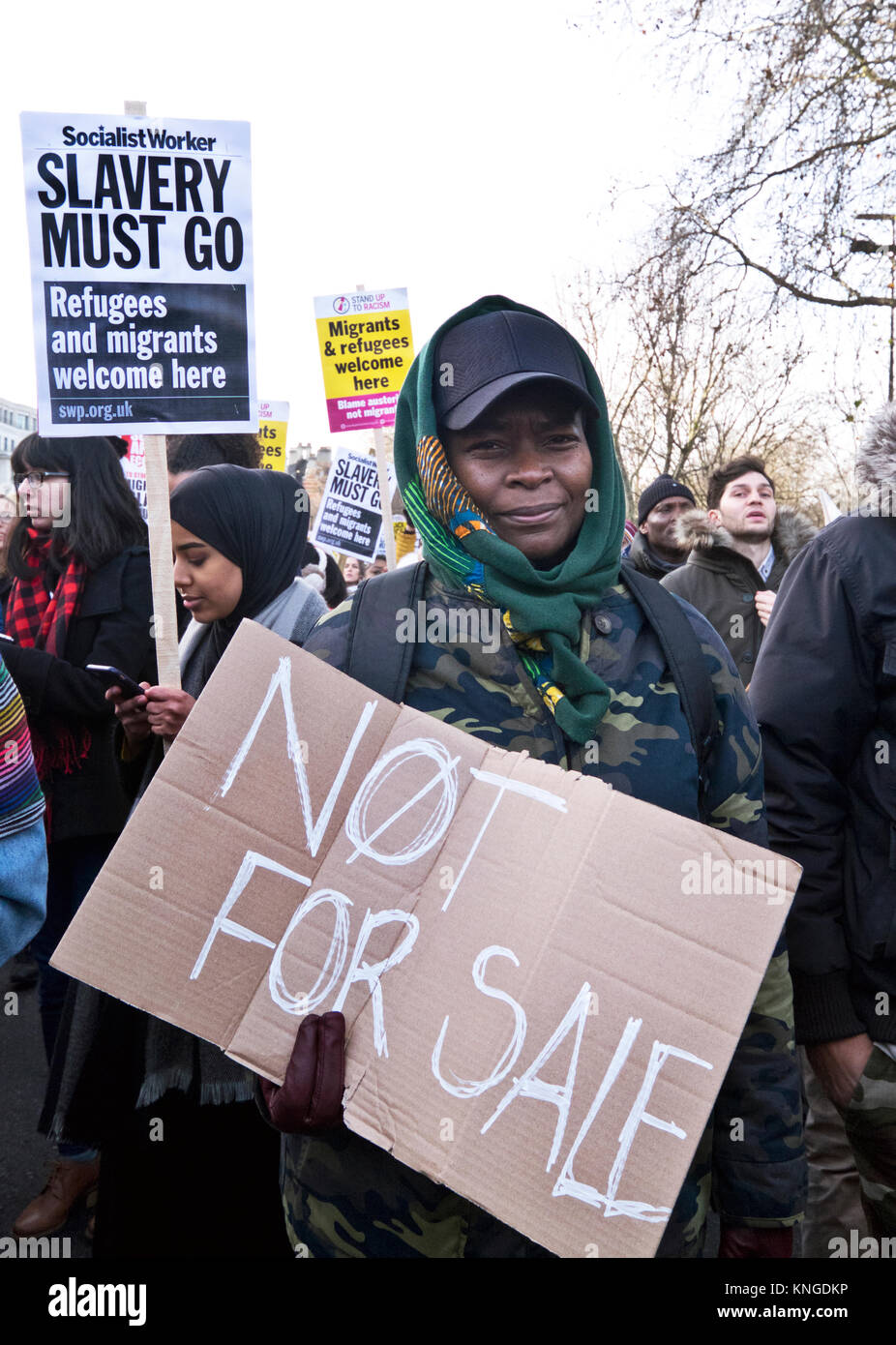 Protesters outside the Libyan embassy calling for the British government to pressure Libya to end the slavery and inhumane treatment of migrants. Dec 9 2017 Stock Photohttps://www.alamy.com/image-license-details/?v=1https://www.alamy.com/stock-image-protesters-outside-the-libyan-embassy-calling-for-the-british-government-168163066.html
Protesters outside the Libyan embassy calling for the British government to pressure Libya to end the slavery and inhumane treatment of migrants. Dec 9 2017 Stock Photohttps://www.alamy.com/image-license-details/?v=1https://www.alamy.com/stock-image-protesters-outside-the-libyan-embassy-calling-for-the-british-government-168163066.htmlRMKNGDKP–Protesters outside the Libyan embassy calling for the British government to pressure Libya to end the slavery and inhumane treatment of migrants. Dec 9 2017
 West African native canoe full of captives to be sold as slaves. Hand-colored woodcut of an E. W. Kemble illustration Stock Photohttps://www.alamy.com/image-license-details/?v=1https://www.alamy.com/west-african-native-canoe-full-of-captives-to-be-sold-as-slaves-hand-image8052279.html
West African native canoe full of captives to be sold as slaves. Hand-colored woodcut of an E. W. Kemble illustration Stock Photohttps://www.alamy.com/image-license-details/?v=1https://www.alamy.com/west-african-native-canoe-full-of-captives-to-be-sold-as-slaves-hand-image8052279.htmlRMAG4DR8–West African native canoe full of captives to be sold as slaves. Hand-colored woodcut of an E. W. Kemble illustration
 Samuel Ajayi Crowther (c1809–1891), former slave who became the first black Anglican Bishop. Crowther was ordained by the Church Missionary Society and in 1864 was consecrated bishop of the Niger territory in Africa. A linguist, with an honorary doctorate of divinity from Oxford University, Crowther worked on Bible translation into more than one African language. Stock Photohttps://www.alamy.com/image-license-details/?v=1https://www.alamy.com/samuel-ajayi-crowther-c18091891-former-slave-who-became-the-first-black-anglican-bishop-crowther-was-ordained-by-the-church-missionary-society-and-in-1864-was-consecrated-bishop-of-the-niger-territory-in-africa-a-linguist-with-an-honorary-doctorate-of-divinity-from-oxford-university-crowther-worked-on-bible-translation-into-more-than-one-african-language-image404711793.html
Samuel Ajayi Crowther (c1809–1891), former slave who became the first black Anglican Bishop. Crowther was ordained by the Church Missionary Society and in 1864 was consecrated bishop of the Niger territory in Africa. A linguist, with an honorary doctorate of divinity from Oxford University, Crowther worked on Bible translation into more than one African language. Stock Photohttps://www.alamy.com/image-license-details/?v=1https://www.alamy.com/samuel-ajayi-crowther-c18091891-former-slave-who-became-the-first-black-anglican-bishop-crowther-was-ordained-by-the-church-missionary-society-and-in-1864-was-consecrated-bishop-of-the-niger-territory-in-africa-a-linguist-with-an-honorary-doctorate-of-divinity-from-oxford-university-crowther-worked-on-bible-translation-into-more-than-one-african-language-image404711793.htmlRM2EEC60H–Samuel Ajayi Crowther (c1809–1891), former slave who became the first black Anglican Bishop. Crowther was ordained by the Church Missionary Society and in 1864 was consecrated bishop of the Niger territory in Africa. A linguist, with an honorary doctorate of divinity from Oxford University, Crowther worked on Bible translation into more than one African language.
 A cedar statue of a slave, carved by Mobile folk artist Noah Turner, is displayed at the History Museum of Mobile, March 19, 2019, in Mobile, Alabama. Stock Photohttps://www.alamy.com/image-license-details/?v=1https://www.alamy.com/a-cedar-statue-of-a-slave-carved-by-mobile-folk-artist-noah-turner-is-displayed-at-the-history-museum-of-mobile-march-19-2019-in-mobile-alabama-image452099763.html
A cedar statue of a slave, carved by Mobile folk artist Noah Turner, is displayed at the History Museum of Mobile, March 19, 2019, in Mobile, Alabama. Stock Photohttps://www.alamy.com/image-license-details/?v=1https://www.alamy.com/a-cedar-statue-of-a-slave-carved-by-mobile-folk-artist-noah-turner-is-displayed-at-the-history-museum-of-mobile-march-19-2019-in-mobile-alabama-image452099763.htmlRM2H7EWT3–A cedar statue of a slave, carved by Mobile folk artist Noah Turner, is displayed at the History Museum of Mobile, March 19, 2019, in Mobile, Alabama.
